
Inspirations
Explore the elevated life in the mountains. This content debuted in 2015 with Alpine Modern’s printed quarterly magazine project.
Sense of Place: Clean as in Whistler
Chad Falkenberg of Vancouver-based Falken Reynolds talks about modern interiors in Whistler's mountain homes and cabins
In the fourth and last installment of our "Sense of Place" series, we are talking with interior designer Chad Falkenberg of the Vancouver-based interior design studio Falken Reynolds about brining Whistler style home, no matter where you live. Whistler is rich in cedar and granite. So its natural that traditional mountain homes use a lot of both. While the wood in older homes may have a raw finish, you won’t see many log cabins in the mountains of British Columbia. The trees here are simply too massive. The granite boulders are enormous, too. People incorporate them into the structure of the house. Natural stones, in fact, are a classic element of both traditional and modern homes in the Canadian resort town.
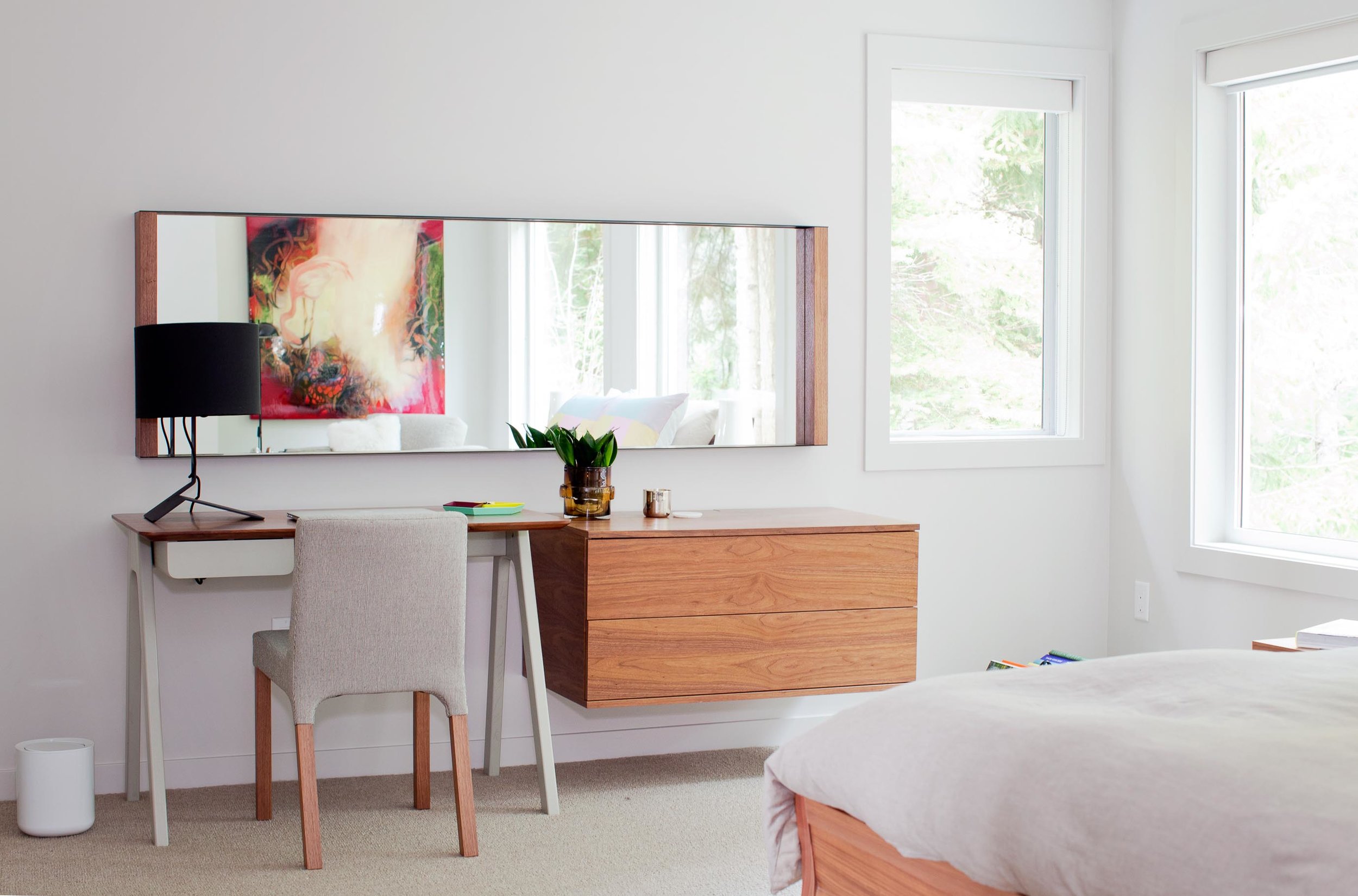
“We try to use a lot of natural materials when we are working in Whistler,” says Chad Falkenberg, one half of Falken Reynolds, a Vancouver-based interior design studio. “It feels more authentic, closer to the earth and to the outside, which is why people go up there, to get away from the city.”
Some of his projects involve sand-blasted Douglas fir to achieve very clean lines but give the wood extra texture. “The idea with all of this is that it patinas well,” says Falkenberg. “If the wood gets hit by a tree or by skis, it’s OK.”
The studio’s work in Whistler is particularly minimalistic and sophisticated yet still achieves the cozy feel of a mountain retreat. Hard textures are mixed with softer, textile surfaces. “In the bedroom of the Aspen Drive house, we used wood furniture, but we also used wool carpet, so the whole floor feels like a sweater,” Falkenberg tells about a recent project. “When you get out of bed, you shouldn’t have to put socks on.”
The designer, who draws inspiration from years of working and traveling in Scandinavia and Southern Europe, often relies on the visual warmth of the materials. “One of the easiest tricks is to mix grays and warm colors,” to achieve the clean-lined yet warm look and feel of some of the Whistler homes he has designed. Combine a warm natural wood with a gray countertop or fabric, for example. “The two things are almost juxtaposing each other,” Falkenberg says. “It’s almost like a wood next to the cool gray looks even warmer.”
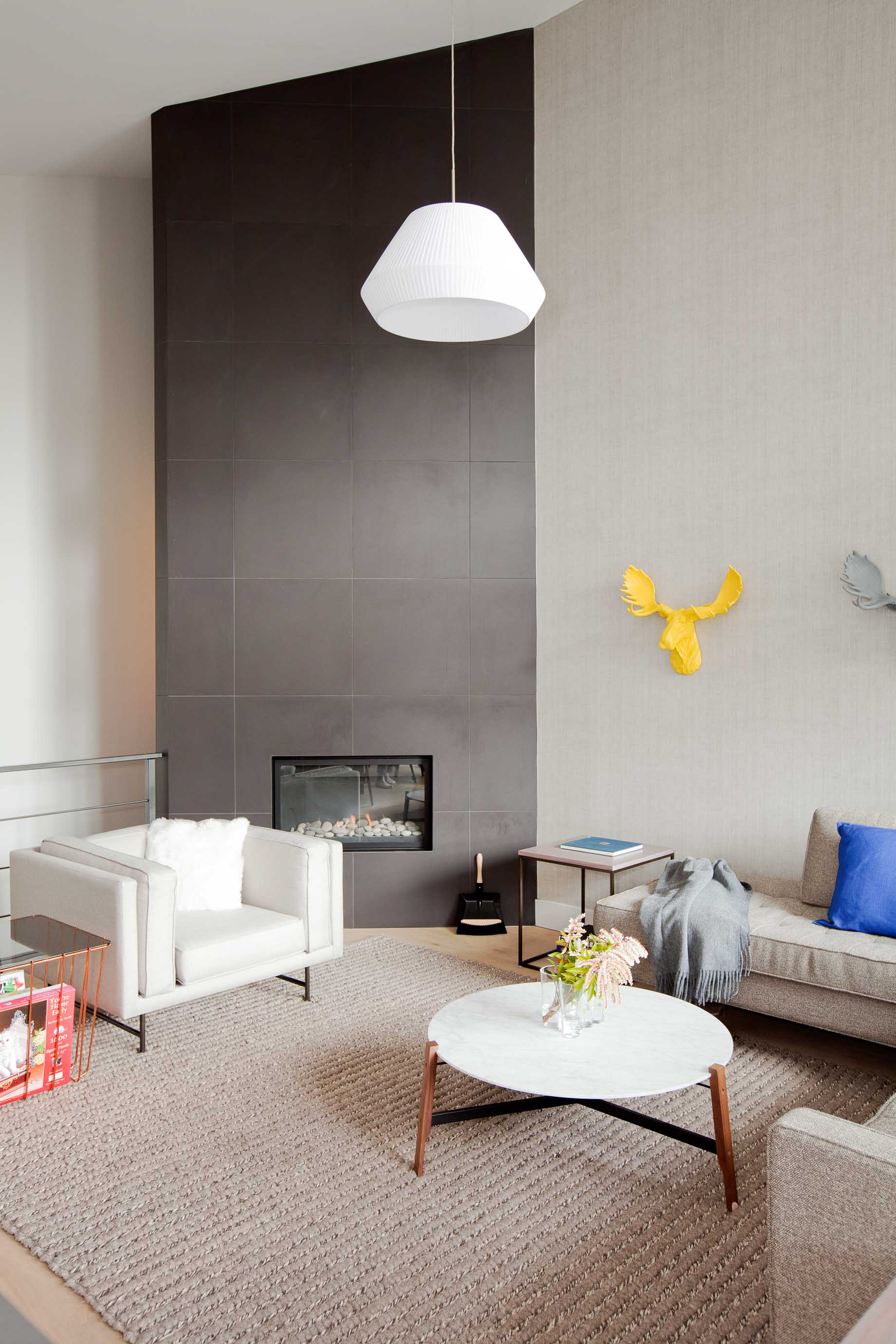
To accessorize your Whistler-inspired winter interior, go for copper and terra-cotta pots. The designer’s favorite textures are anything that feels like a sweater—the loop of a rug, wool blankets, pillows covered in chunky knits. A rougher texture, even on a hard surface like a co ee cup, also feels warmer. Leather is another great material that feels warm to the touch. It has a history to it. “Anything that evokes the natural world,” says Falkenberg.
He likes to keep things casual in a mountain retreat, as he expresses by using a wire taxidermy sculpture or resin moose heads on the wall. “I love anything that reminds me, OK I’m in a cabin, and I’m not supposed to take everything so serious.” △
Crystallize
Temperatures in Boulder are dipping deep below freezing. There is a poem for that.
With shimmering deadliness,Delicate sharpness, Paradoxical strength,
Flexible and adaptable, give way, Fray into a panorama of mosaic lines, Or stand on one’s own accord.
Do not hide: refract and reflect, Intensify that which one magnifies, All seeing.
Be ice, be strong in fragility, be pierced and reformed.
Resilient, frozen, Susceptible to the seasons, thaw, reform, and crystallize, Be clear, clarifying.
Allow yourself to be at the mercy of natural cycles, Grow something bright in a season of death.
Silent, Speak only in the drip of the sun. △
Recipe: A Modern Gingerbread House
Our interior design contributor Jennifer Rhode spends the weekend creating sweet modern architecture with her kids.
Gingerbread houses are an annual holiday tradition with my children. Baking the gingerbread makes the house smell like Christmas, and there is nothing more fun than decorating with frosting and candy. Every year, we imagine what it would be like to live in such a delicious, cozy home. We have always made houses that look like Hänsel and Gretel could have wandered into them, but this year, in honor of Alpine Modern, we made one that Don Draper might have rented for a ski weekend.
Recipe: Gingerbread House
Makes 1 house
INGREDIENTS
Gingerbread
(Based on a recipe by the Food Network)
1/2 cup (1 stick) butter, at room temperature 1/2 cup brown sugar 1/4 cup molasses 1 tbsp cinnamon 1 tbsp ground ginger 1 1/2 tsp ground cloves 1 tsp baking soda 2 cups all purpose flour 2 tsp water
Frosting
1 lb (4 cups) powdered sugar 1 tsp cream of tartar 3 egg whites
Candy
Gumdrops, Lifesavers, Licorice, Dots, Mike and Ikes, and Candy Canes work really well. (Candies with a coating, such as M&Ms or Skittles, usually leak into the frosting and don’t look as pretty.)
STEPS
In a large mixing bowl, cream the butter, sugar, molasses, cinnamon, ginger, cloves, and baking soda, until the mixture is smooth. (A stand mixer comes in very handy here.)
Blend in flour and water to make a stiff dough. Chill at least 30 minutes or until firm. (I often make the dough a day or two ahead, wrap it in foil and keep it in the freezer, until I am ready to bake it.)
Preheat oven to 375 degrees F.
Use graph paper and cut out the following paper patterns for the gingerbread house:
Front and Back
Left side: 4 1/4” or 22 graph squares
Right side: 3 1/2” or 18 graph squares
Bottom: 7” or 36 graph squares
Top: use a ruler to draw a line slanting down from the top of the left side to the top of right side
Door: 1 1/2” or 8 graph squares wide, 2” or 13 graph squares tall
Door location: 7 graph squares from the L side
Window: 1 3/4” or 9 graph squares wide, 1 1/4” or 6 graph squares tall
Window location: 7 graph squares from the L of the door, at the same height as the door
(Only cut out the door and window for the front side of the house.)
Sides
3 1/2” or 18 graph squares by 4 1/4” or 22 graph squares
Roof
6 1/2” or 33 graph squares by 11 1/2” or 58 graph squares
Roll out the gingerbread dough to a little thicker than 1/4”. Place patterns on top of dough and cut out with a large, sharp edged knife. Cut two “Front and Back” pieces, 2 sides and 1 roof.
Bake at 375 degrees F for about 12 minutes. Leave house pieces on the baking sheet for ten minutes before transferring them to a cooling rack. Do not try to assemble the house until the house pieces are completely cool to the touch.
Mix all three ingredients for the frosting in a large bowl with an electric mixer. Continue mixing until the frosting is quite stiff.
Glue sides, front, and back of the house together, directly onto a rectangular plate. The side piece on the left should be in a portrait position, and the side piece on the right should be in a landscape position. Be generous with the icing on the inside of the house. I usually place a large scoop into each corner and up the inside seams to bolster the construction. Let the frosting harden completely.
Decorate the frame of the door and window with frosting and candy before adding the roof. Frost the top edges of the house and the underside of the roof. Again, be generous with the amount of frosting on the underside of the roof so that it will attach firmly to the house. Let the frosting completely harden.
Frost the top of the roof and decorate with candies. Add the candy cane pillars last, when all of the frosting is hardened and the house is structurally sound.
Enjoy! △
The Weavers of Lapua
More than a hundred years ago, the great-grandfather of Jaana Hjelt’s husband, Esko, opened a wool and felt boot factory in Lankilankoski, Finland, where the Ostrobothnian winters are freezing cold.
More than a hundred years ago, the great-grandfather of Jaana Hjelt’s husband, Esko, opened a wool and felt boot factory in Lankilankoski, Finland, where the Ostrobothnian winters are freezing cold.
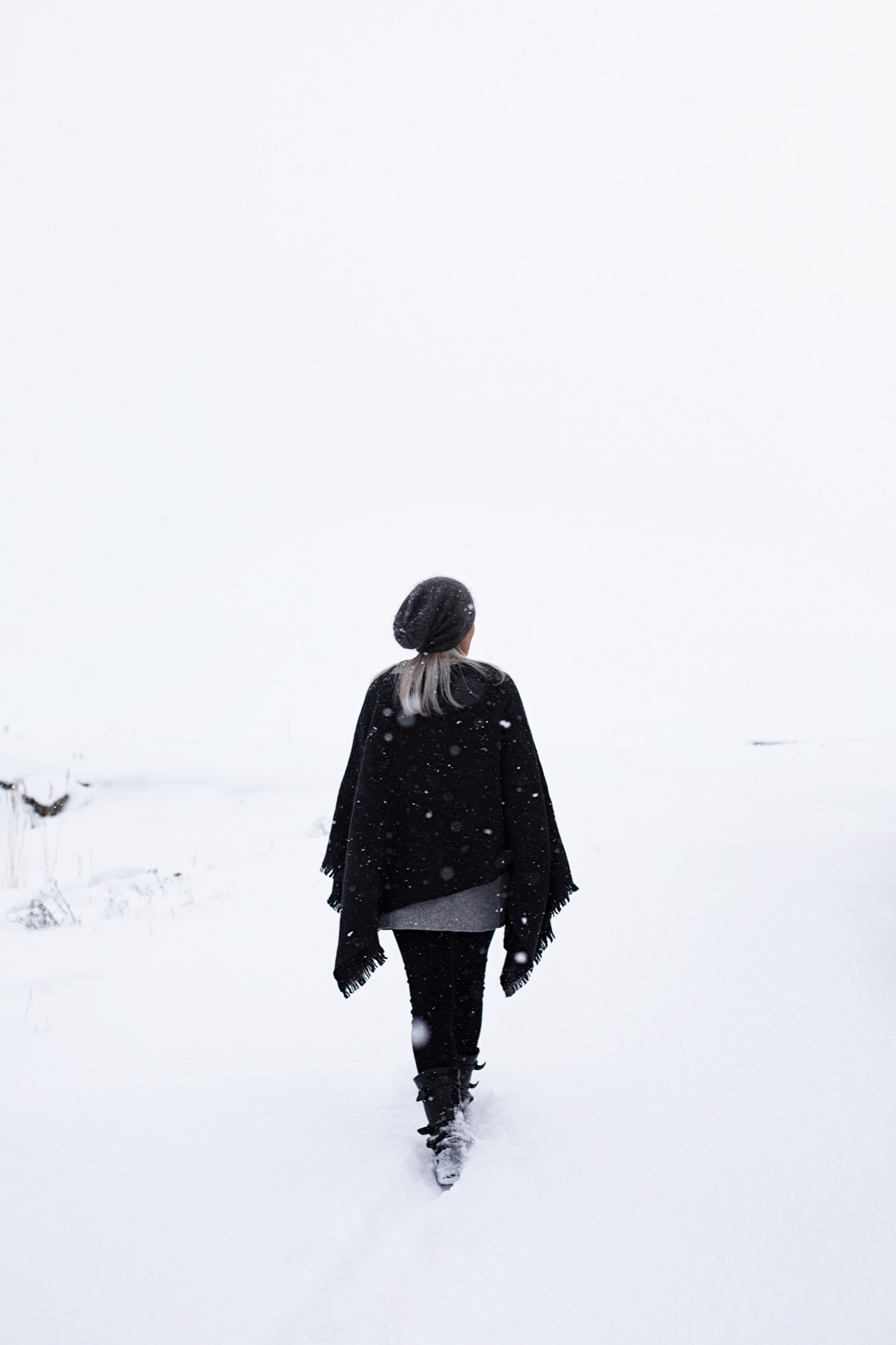
Still in family hands, Lapuan Kankurit today values responsible and environment-friendly processes and pure natural materials. Multifunctionality of their products is important to owners and forth-generation weavers Jaana and Esko Hjelt. In their book, blankets can also be tablecloths or space dividers. Their high-quality textiles are made to bring beauty and happiness into a family's everyday life for generations.

Lapuan Kankurit's fine wool products weave together the story of Finnish handicraft traditions, innovative techniques, and the artwork of top Scandinavian designers. And so the legend continues.
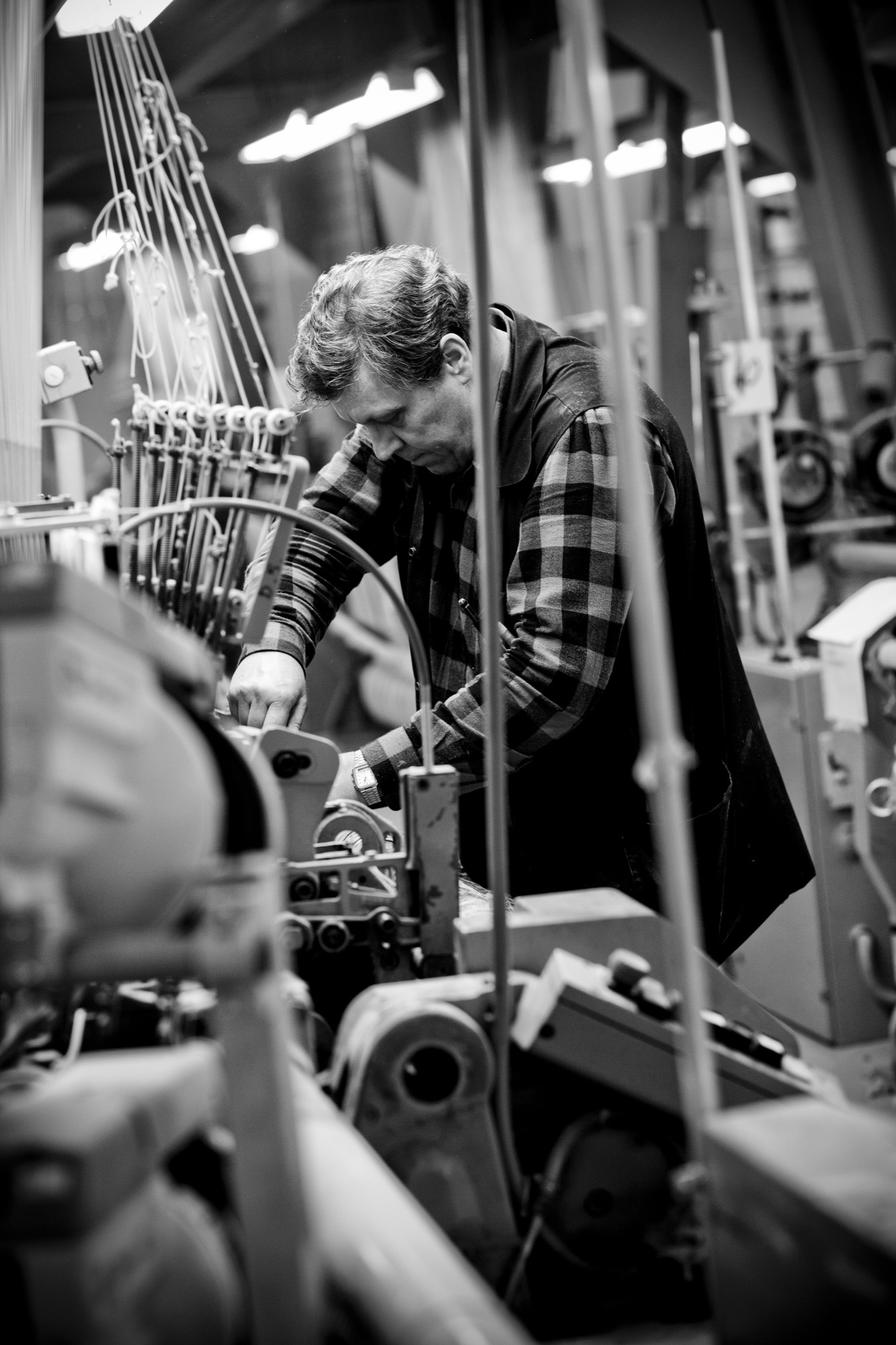
A Conversation with Jaana Hjelt
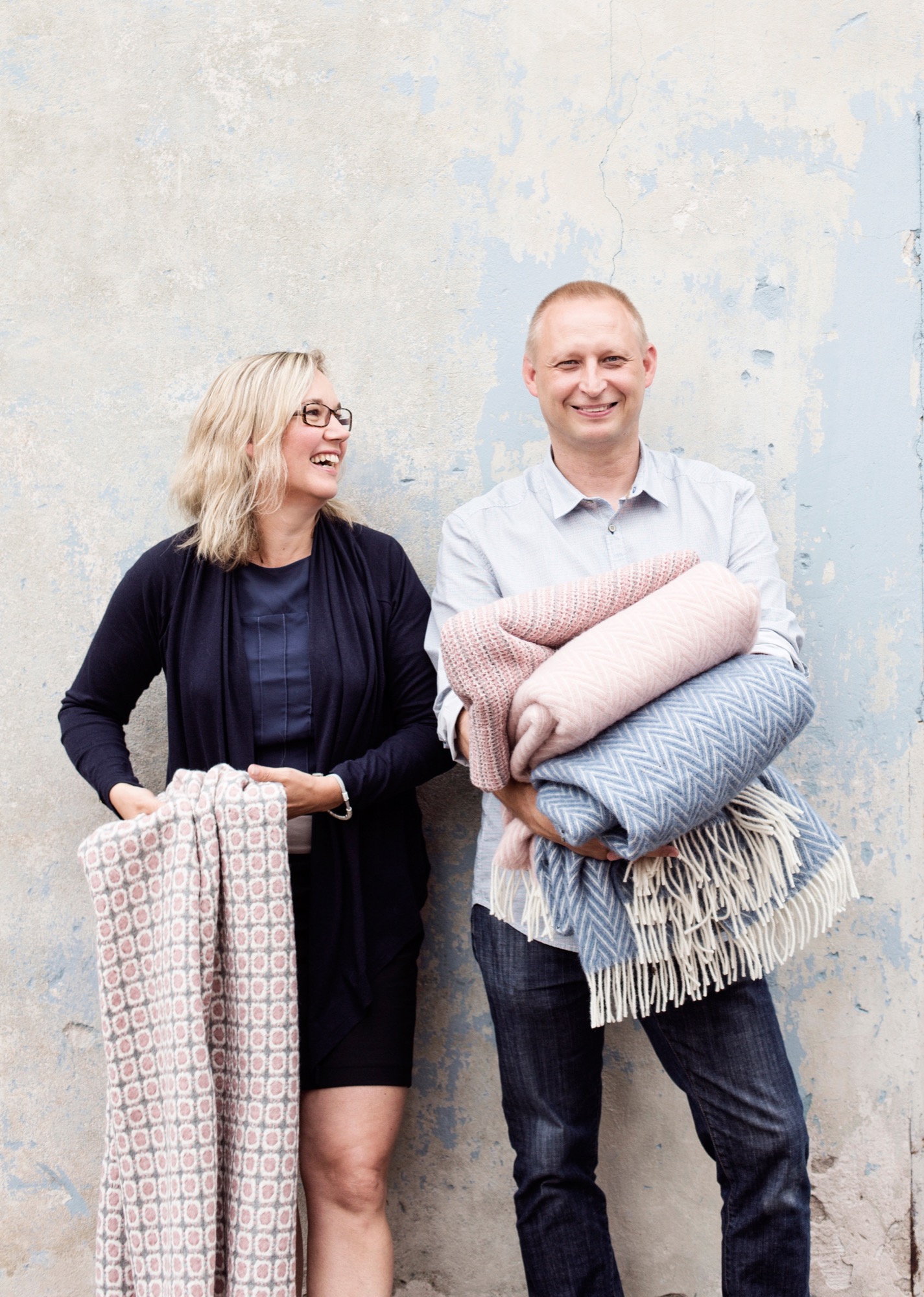
Born: 1968 in Lapua, Finland.
Lives: After studying and working in other cities for ten years, I came back to Lapua.
Work: I do what I love. I run a weaving mill—Lapuan Kankurit (“Weavers of Lapua”)—with my husband, Esko.
Fun: I love to just stay at home with the children, to spend time without any timetables. But we all also love to travel and meet new people. That’s what I do for fun and for work!
Working on right now: Now it’s the “exhibition season,” which means traveling around Europe and attending fairs. It’s great to show our latest collection and hear the feedback.
Favorite place in the world: Home. This may sound boring, but because of my busy life as an entrepreneur, weekends at home are the best. Saturday evenings at home with family: good food, sauna, sitting, and talking with the kids about all the joys and sorrows of the past week.
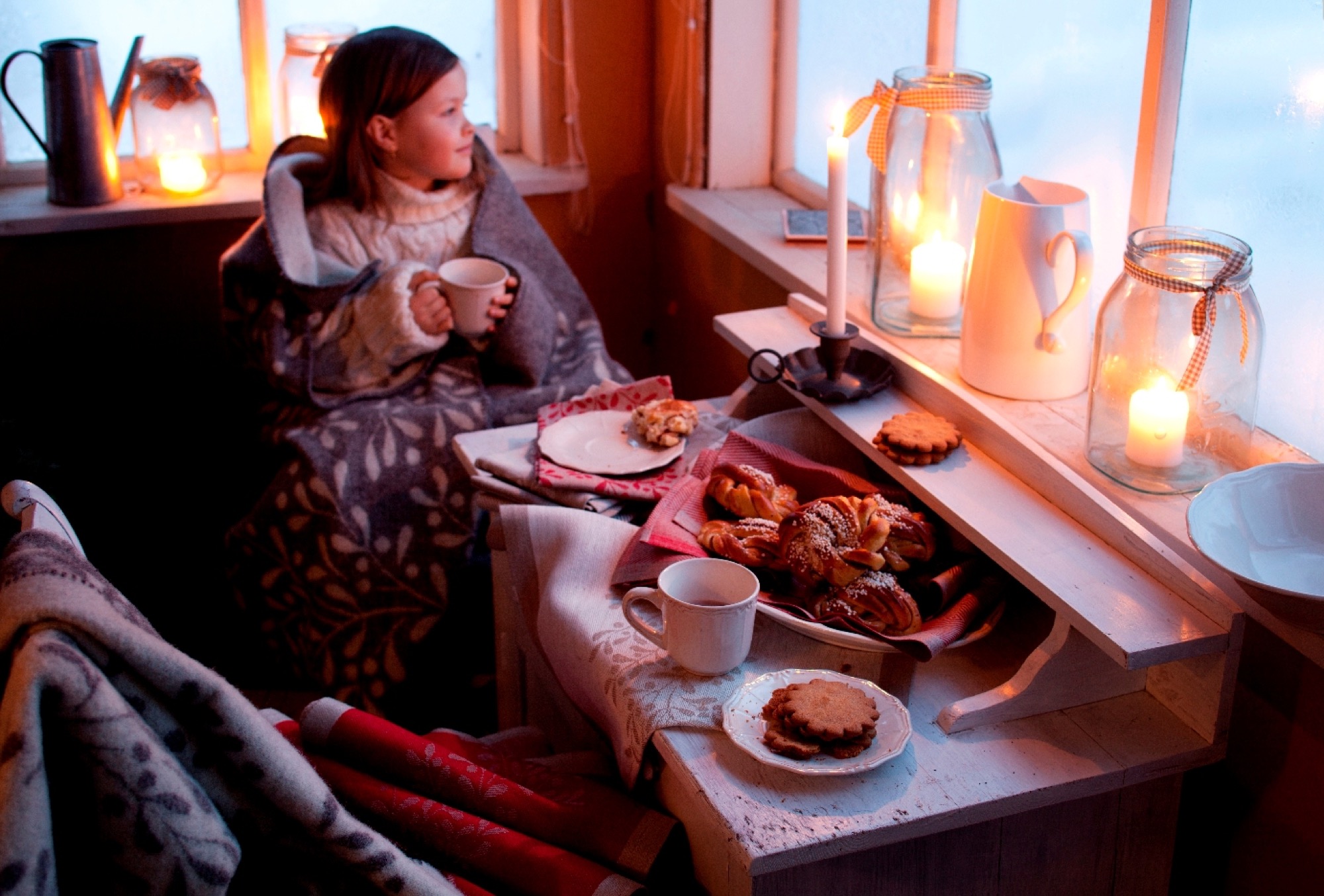

Motto: Now it’s a perfect moment.
Inspiration: My husband, Esko. It’s great to have someone next to you who is seeking innovations. He always gets ideas for textiles, and we share the same passion to create something new and beautiful for homes. Together with our designers, we make a great team.
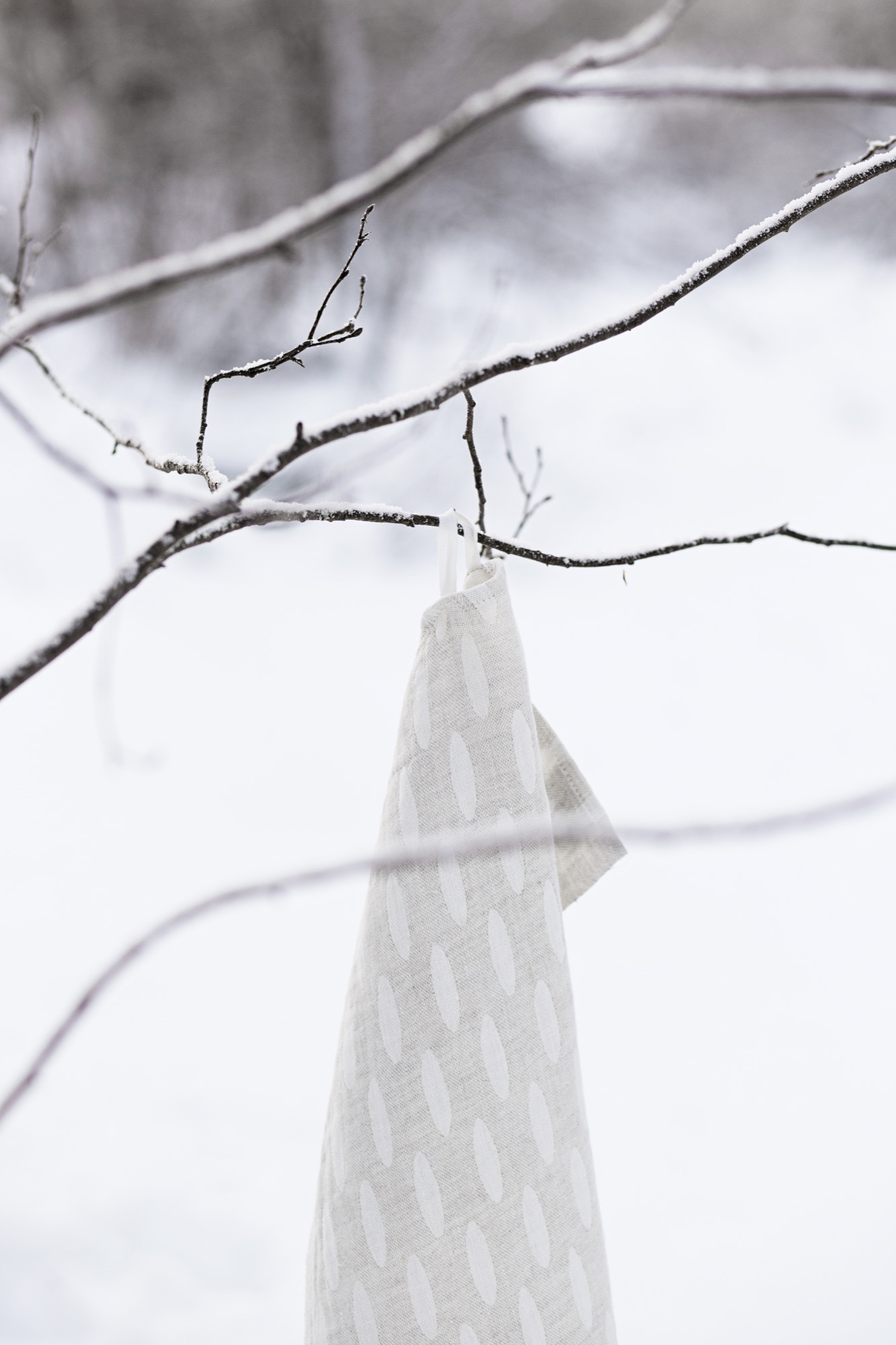
Treasured possession: My grandmother’s handcrafted textiles.
Never leaves the house without: A smile. What else do you need?
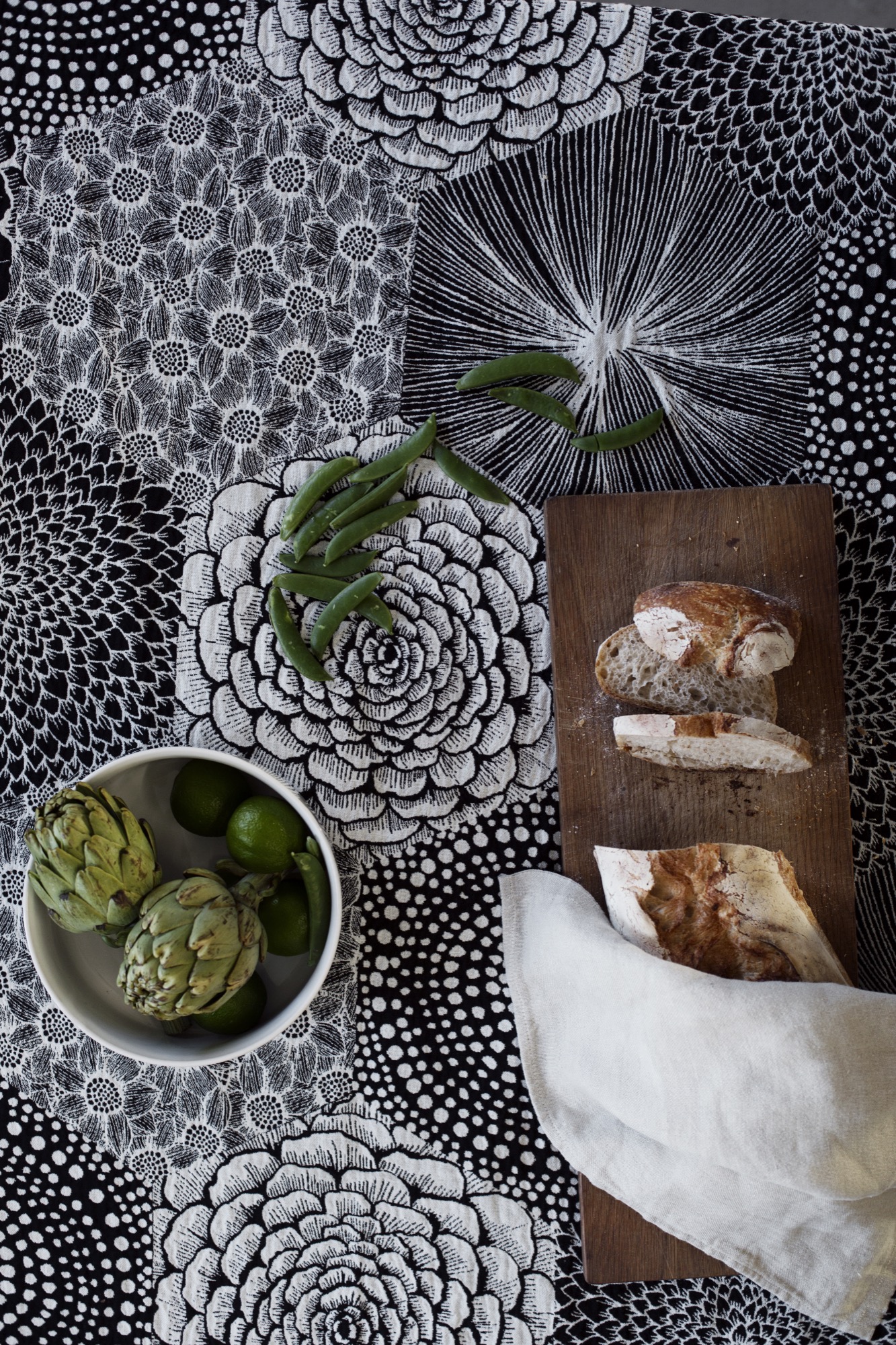
What’s next for Lapuan Kankurit: We also would like to expand a bit more from home textiles towards apparel . . . Our designers have already made some great bags. I just love them and can’t wait for production to start.
See the beautiful products Jaana and Esko Hjelt are weaving at lapuankankurit.fi. We also sell select Lapuan Kankurit products online and at the Alpine Modern Shop on Pearl Street in Boulder. △
A Winter’s Feast
Alpine Modern gathers a circle of friends and coworkers around the table in a chef’s beautiful Colorado home to celebrate life, food, and fellowship in the season of winter feasting.
The season of winter feasting creates a cornucopia of holidays: Thanksgiving, Hanukkah, Christmas, the Winter Solstice, Kwanzaa, the New Year, plus birthdays and anniversaries. These celebrations inspire us to gather friends and family together for a memorable meal. But these days, with our busy lives and family and friends often flung to the far corners of the world, getting a dozen people around your table for a dinner party can present a challenge—along with a measure of intimidation.
Menu planning, creating or finding the right recipes and foods, setting a beautiful table, cooking and timing the courses all require considerable skill and energy. Additionally, there’s a feeling of vulnerability—having people in your house, seeing how you live. Entertaining and orchestrating a special meal takes the host through the whole gamut of human emotions.

Flavors of entertaining
Entertaining has many faces. It can be simple, like soup and bread, or a sumptuous banquet. It can be planned months in advance or spontaneous and spur of the moment. There are as many styles of entertaining and hosting as there are personalities.
And that’s what creates the individual flavor and enjoyment of it—visiting someone’s unique home and seeing how they live, along with the types of food they like, their décor, artwork, and lifestyle. The best meals and get-togethers focus on togetherness rather than technique or perfection. Having guests help with some of the preparation sets the tone—even if it’s minimal like slicing the bread, tossing the salad, or helping to set the table.


The very human act of gathering
What is the true meaning of gathering and entertaining, really? Again, there are as many reasons and styles as there are days in the year.
Gathering to celebrate special occasions, birthdays, holidays, family, and community rituals may prompt us to investigate the practical, traditional, philosophic, spiritual—and perhaps even mystical—nature of entertaining and hospitality. What are some of the deeper primal undertones of this very human act of gathering together?
Dongzhi, or the Chinese Winter Solstice Festival, celebrates the coming of the cold weather and the return of the sun with feasting and festivities. Originating with the Han Dynasty (206 B.C.–A.D. 220), the Winter Festival pays homage to the ancient yin and yang philosophy of balance and harmony in the cosmos. The philosophy holds that the yang, or muscular, positive energy, increases daily after the shortest day—so should be celebrated. Family get-togethers involve the making and eating of tangyuan, a sweet soup with balls of sticky rice, which symbolizes reunion.
Worldwide, changing seasons—the arrival of spring, midsummer, the autumn harvest, and especially the winter solstice—have historically been special times to celebrate and feast. Humankind has venerated the return of the sun’s light at the winter solstice throughout history and prehistory. Feasts have been held, and monuments have been painstakingly constructed and dedicated to it.


On a chilly night, we gathered for a winter feast that Colin and Sarah Kirby graciously hosted at their modern Boulder, Colorado, home to celebrate good food, camaraderie, and hospitality. According to Chef Colin, hospitality at its simplest is taking care of people, treating people well. The flavor of a host’s hospitality conveys a certain way of looking at the world, through food, drink, and its presentation.
"The flavor of a host’s hospitality conveys a certain way of looking at the world, through food, drink, and its presentation."

Perfect moments to remember
What happens when it all comes together? That moment when it all works really well? Reunion—as with the Chinese Dongzhi celebration. Communion. The creative and thoughtfully prepared meal is an emotional and spiritual experience. In addition to enjoying delicious food, guests feel a warm and deep appreciation for the host’s labors and generosity, and for each other. It’s truly a celebration and labor of love.
Some people, like our host, specifically design their homes with entertaining in mind. Colin’s cleverly repurposed and beautifully refinished Douglas fir floor joists–turned–dining table perfectly seats a dozen guests, as he intended. Set alongside an open kitchen, the broad table invites participation and observation.
As our host chef concludes, “Cooking is the only art form that engages all five senses.” And like any art form, an exquisitely conceived and executed meal inspires, elevates, educates, and enlivens.
In addition to the shared ritual of emotional and physical nourishment and sustenance, a special dinner or feast also offers the chance to learn about new foods and recipes, perhaps the favorites of the host. Special recipes from family or friends carry memories and significance, and enrich the experience of others who replicate them.
“Cooking is the only art form that engages all five senses.”

Recipes can hold special meanings for people, especially when passed down through generations or created for a unique event. Here, we are sharing some recipes our host, Colin Kirby, served at Alpine Modern’s Winter Feast that we hope will inspire you to take up the wooden spoon, start cooking, and gather some hungry souls around your table in celebration of togetherness. △
Recipes for a winter's feast
Tomato-Braised Leg of Lamb
The headliner. Braised in the oven for hours before your guests arrive, making this lamb dish will fill the house with a savory fragrance that will draw everyone into the kitchen. Go to recipe »
Braised Leeks with Black Truffle
An elegantly simple vegetable side for any festive dinner. Go to recipe »
The Alpine Glissade
Luscious Holiday libation: A festive cocktail based on cold-drip coffee. Go to recipe »
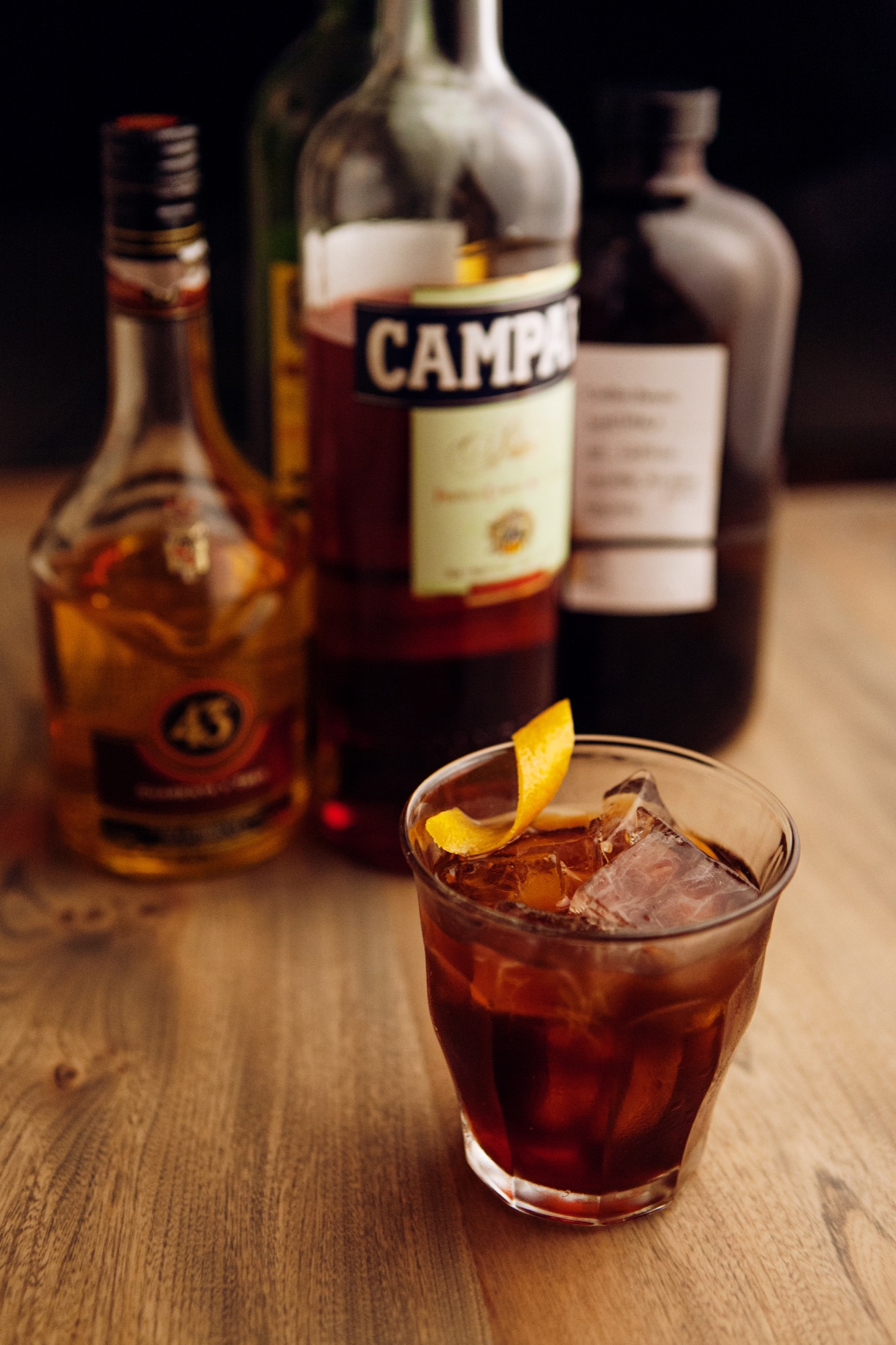
Recipe: Tomato-Braised Leg of Lamb
The headliner of Alpine Modern's Winter Feast
INGREDIENTS
boneless leg of lamb: 3 2.5 lb legs, trussed with twine salt pepper
TOMATO BRAISING LIQUID
garlic: 2 bulbs, minced carrots: 6 yellow onions: 3 leeks: 3 medium-sized fennel: 2 bulbs, shaved salt red wine: 1 bottle San Marzano tomatoes: 3 cans fennel seed: 3 T, ground chili flakes chives Parmesan cheese

DIRECTIONS
Leg of lamb
Season generously with salt and pepper. Heat a grill or cast-iron pan. Sear the lamb legs on both sides on high heat until nicely seared, 8–10 minutes total. Reserve to later place in the tomato liquid.
Tomato braising liquid
Preheat oven to 300° F (150° C). In a large pot or rondeau heat a small amount of grape seed oil. Once hot, add the garlic and sauté until translucent. Add the small diced carrots, onions, leeks, and fennel. Season the vegetables with salt and let them sauté until nearly tender. If the pan begins to brown, this is a good thing.
Once the vegetables are ready, deglaze the pan with the bottle of red wine. Let the alcohol cook out of the wine (about 5 minutes). Add the tomatoes, fennel seed, and chili flakes. Add the seared lamb legs to the tomato sauce. The lamb should be submerged in the liquid. Put the lid on the pot and braise in the oven until lamb is tender, about 6 1/2 hours, checking every 2 hours.
Remove the braising pot from the oven and allow the lamb to cool completely in the sauce. Gently reheat and serve, adding cut chives and Parmesan on top. Serves 10. △
This recipe is part of Alpine Modern's big Winter Feast, which we will publish here this week.
Recipe: Braised Leeks with Black Truffle
An elegantly simple vegetable side for any festive dinner
INGREDIENTS
leeks: 12 small, cleaned and trimmed black truffle butter: 8–10 oz (227 to 283 g) *or regular butter with high-fat content salt pepper red radish: 1
DIRECTIONS
Bring a large pot of salted water to a boil. Also, prepare an ice bath. Remove the root end of the leek and trim the green leaves so roughly 6 inches (15 cm) of the leek is available. Then, cut in half lengthwise. Set aside. Place the leeks into the blanching water for approximately 6 minutes or until nearly tender. Remove from pot and place in the ice bath until cool to stop the cooking process.
In a large sauté pan on medium, heat a small amount of grape seed oil and gently arrange the cooked leeks so they fit in one layer. Once the leeks are hot and begin to sear slightly, place a piece of circular parchment paper on top of the leeks to help them cook evenly (see photo). Add the black truffle butter. Once the butter is melted, season with salt and pepper and serve, on the table, out of the sauté pan. Shave the red radish on a microplane and top the cooked leeks with it for added texture. Serves 10. △
This recipe is part of Alpine Modern's big Winter Feast, which we will publish here this week.
Cozy and Knit
Winter interiors: Bring warmth into your home with tufted or knit accessories and furniture
Coziness and chunky textures are not just for your grandma’s homemade afghans anymore. These tufted or knit accessories and furniture options have all the warmth of a storybook cottage, but they couldn’t be more modern.
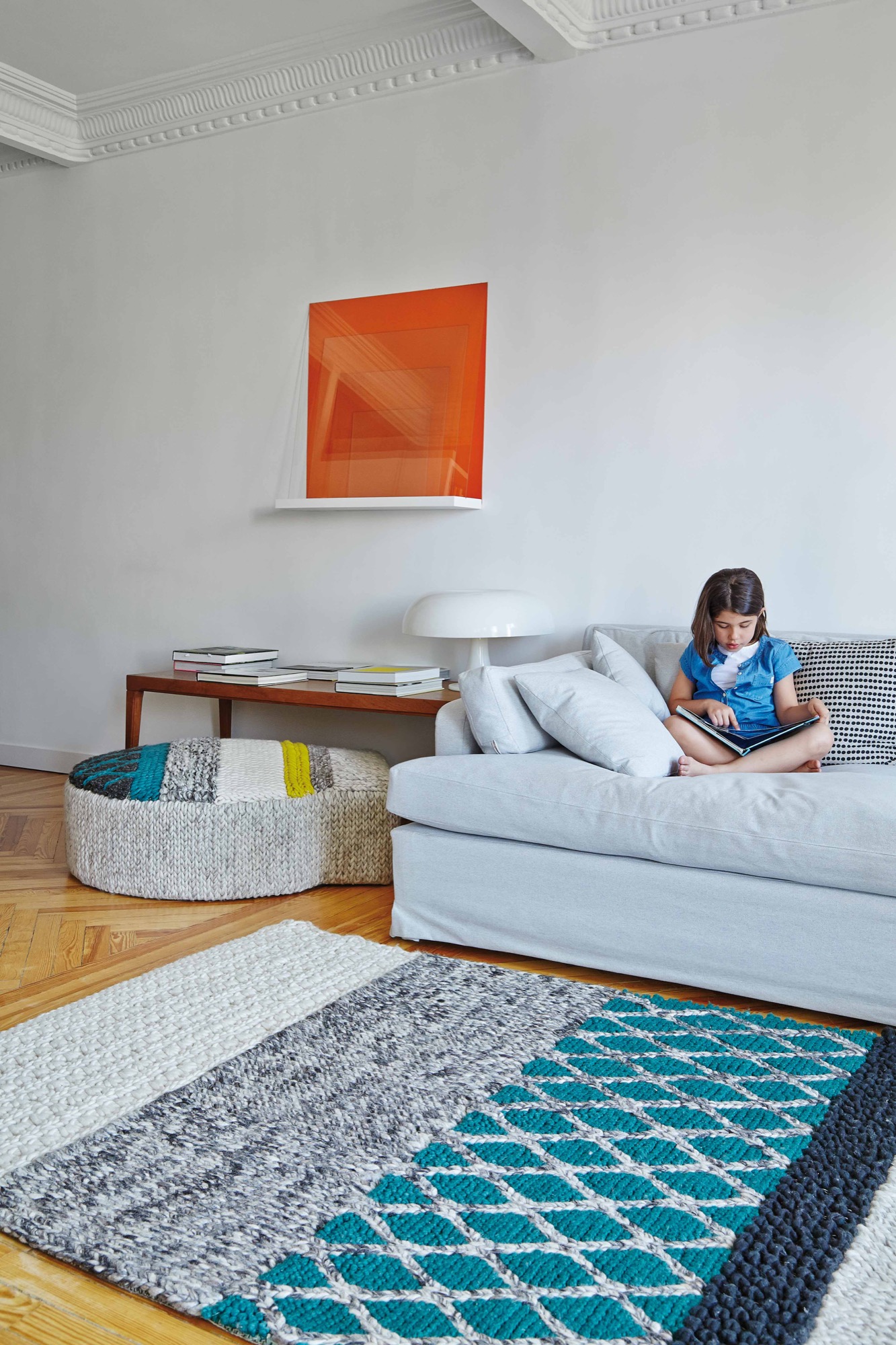
Sculptural skein seats
Claire Anne O’Brien’s stools, poufs and chairs are knit into giant skeins and then woven into a variety of loops, donut shapes and traditional patterns. The resulting seats are both whimsical and chic, surprising in their reinvented use of knitting.
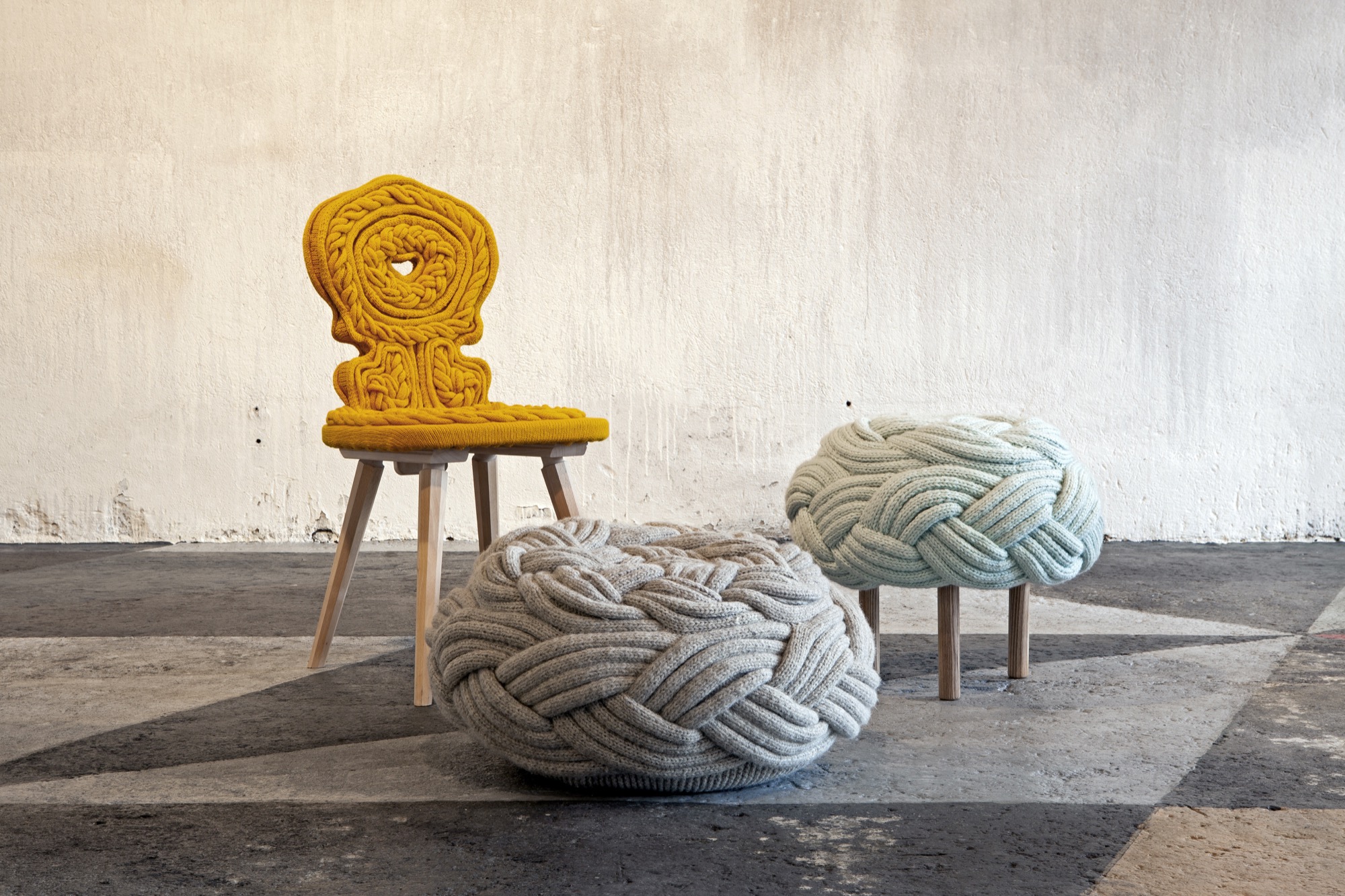
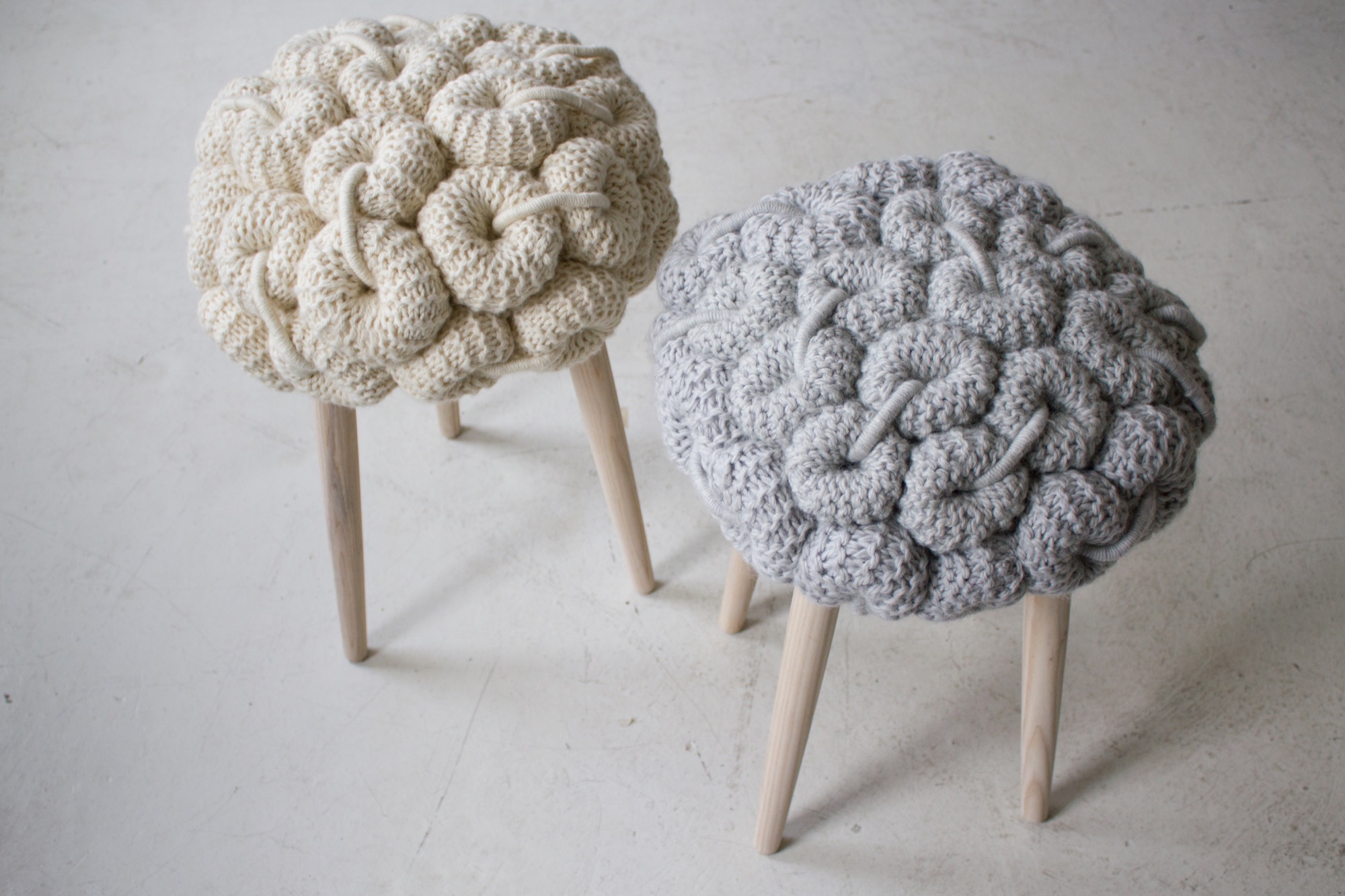
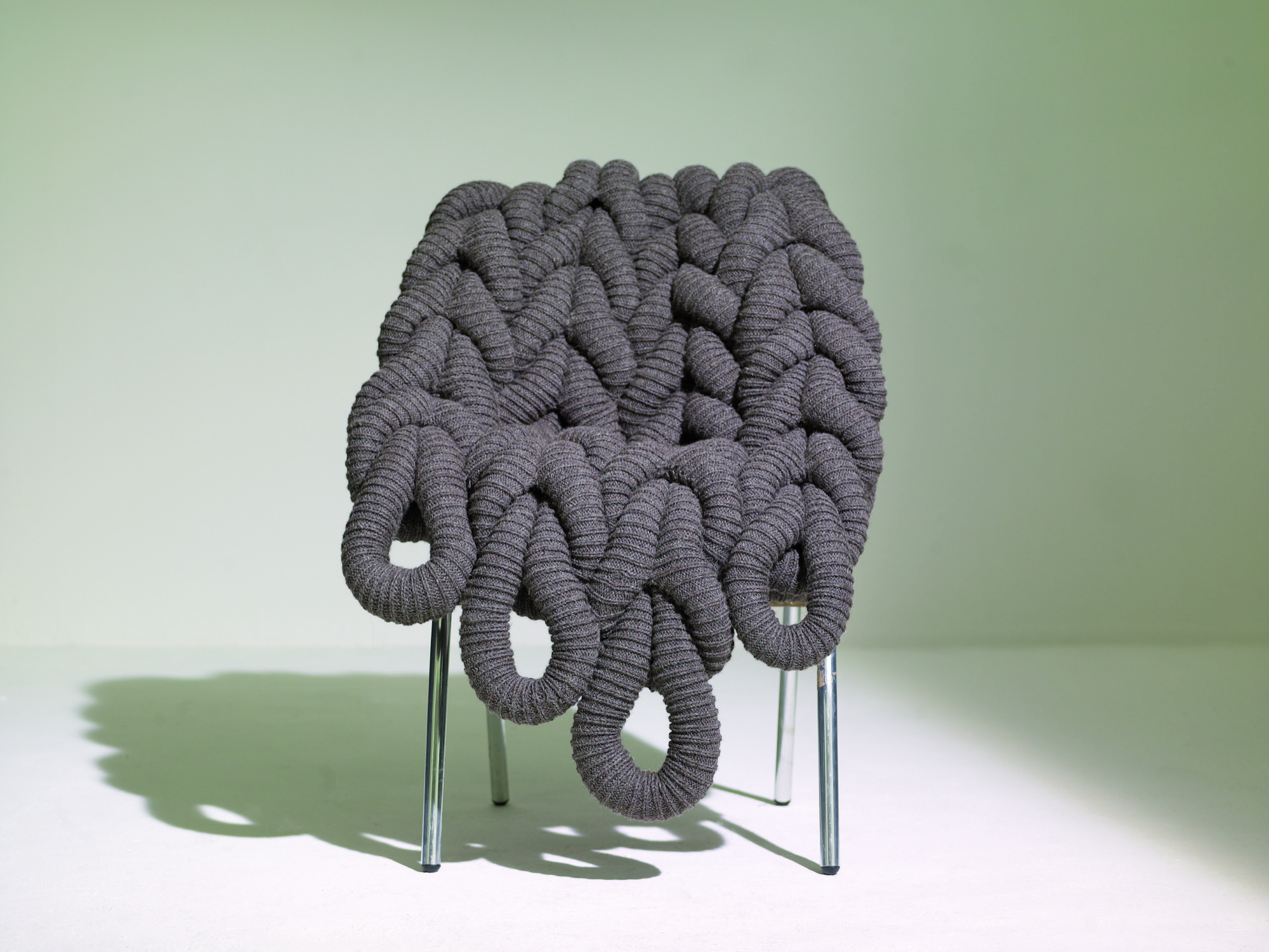
Ruched beds and seating
Ligne Roset’s Ruché Collection features beds and seating covered in an even, square, ruched design, with spare wooden frames. The soft, quilted fabric complements the simple legs, melding a traditional sewing pattern with modern structure.
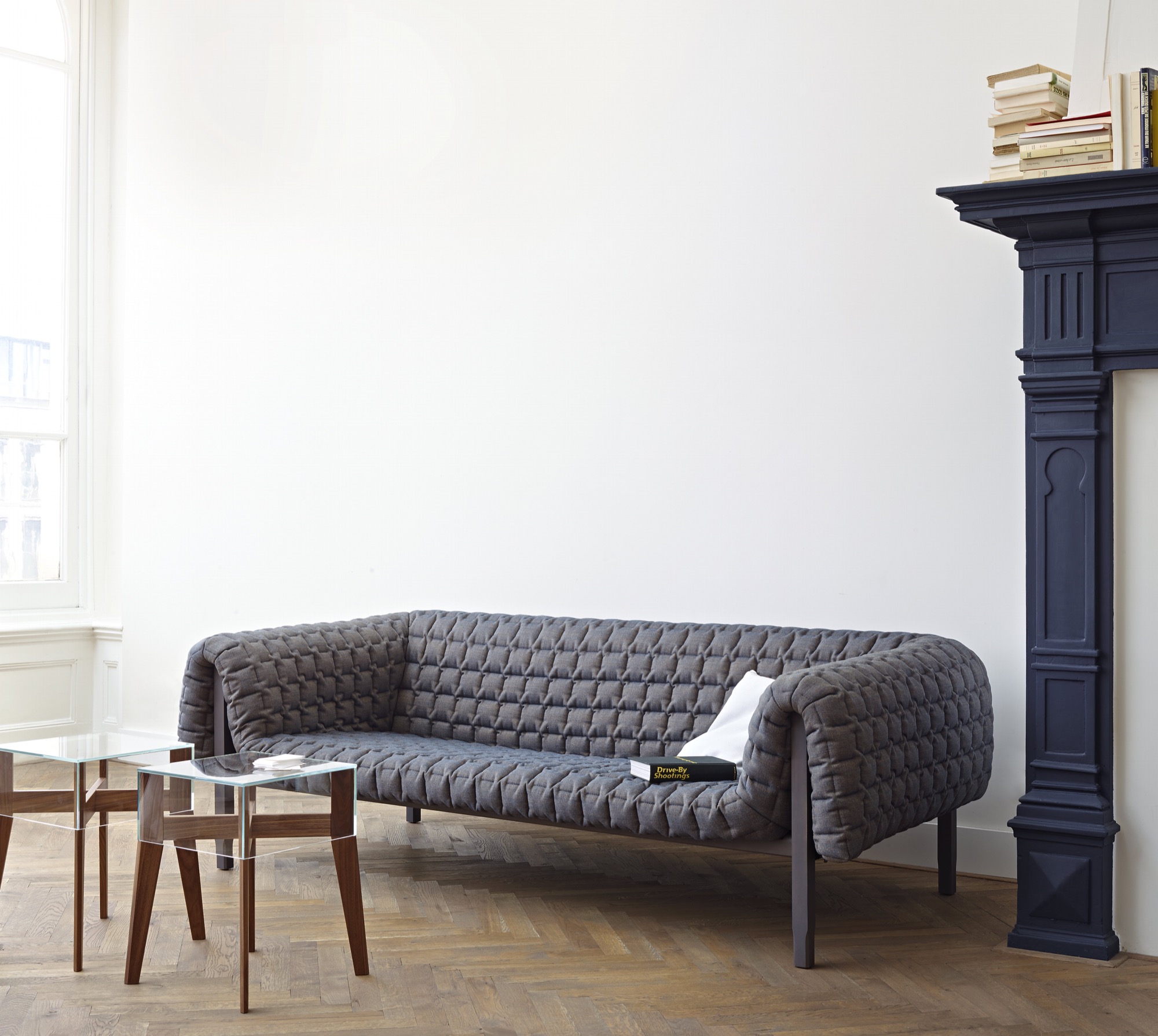
Giant hot-water-bottle shapes
Playing with size and intention in the following rugs and poufs add both warmth and whimsy to modern spaces. The unexpected hot-water-bottle shapes of the Mangas Collection from GAN brings together heritage and modernity.
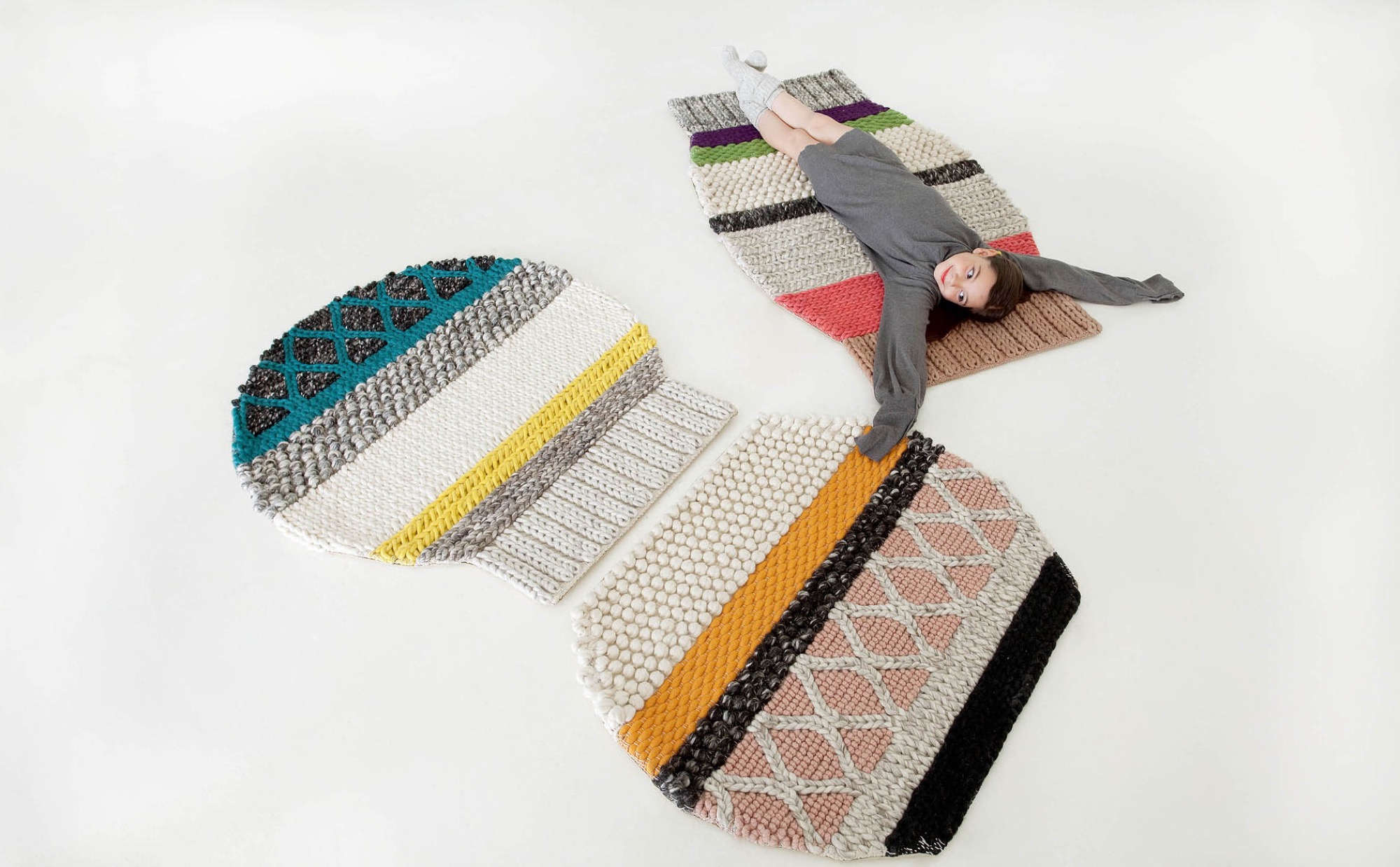
Knit bean bags
Zilalila’s Nest knitted bean bags are just that… a cozy nest to cuddle into. The knitted construction evokes another era, but the shape and feeling are wholly new and sophisticated—enriching the modern living room.
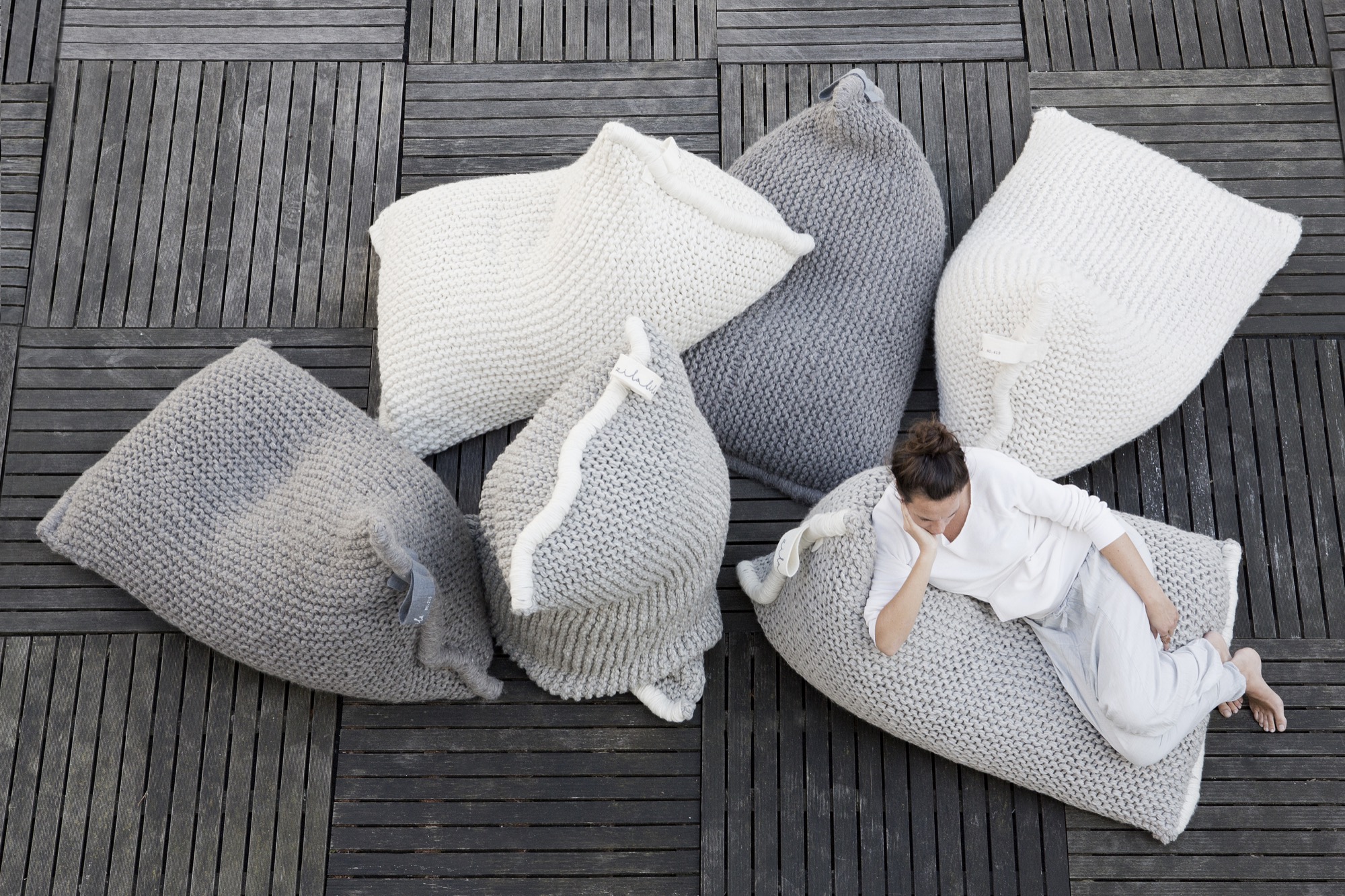
Doily rugs
Hooked Design’s doily rugs surprise by transforming something typically seen on an armrest and enlarging it for the floor.
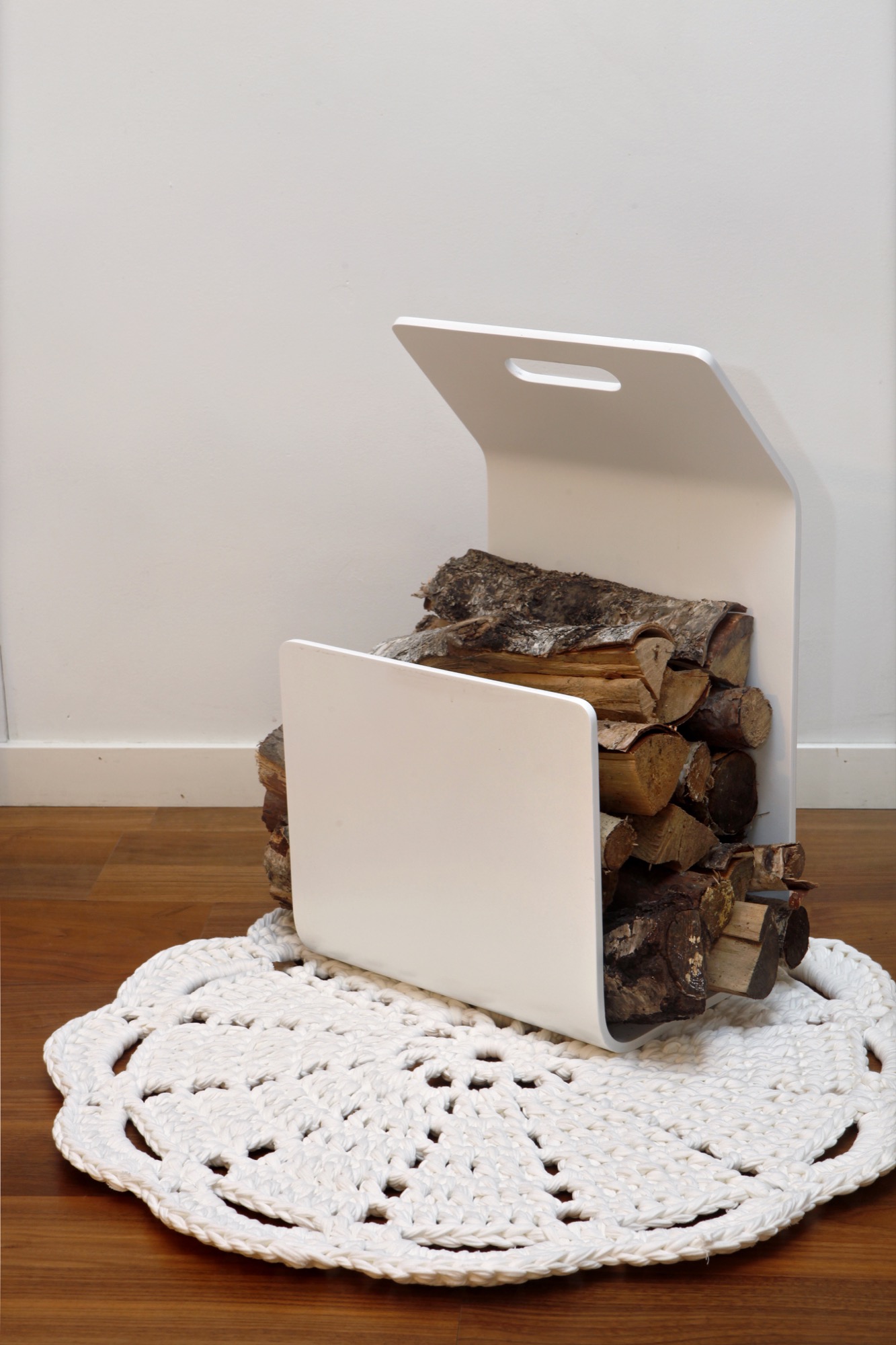
Sweater-sleeve rugs
Christien Meindertsma’s Aran rug is like an oversized sleeve of your favorite fisherman sweater, inviting you to relax right into the cables.
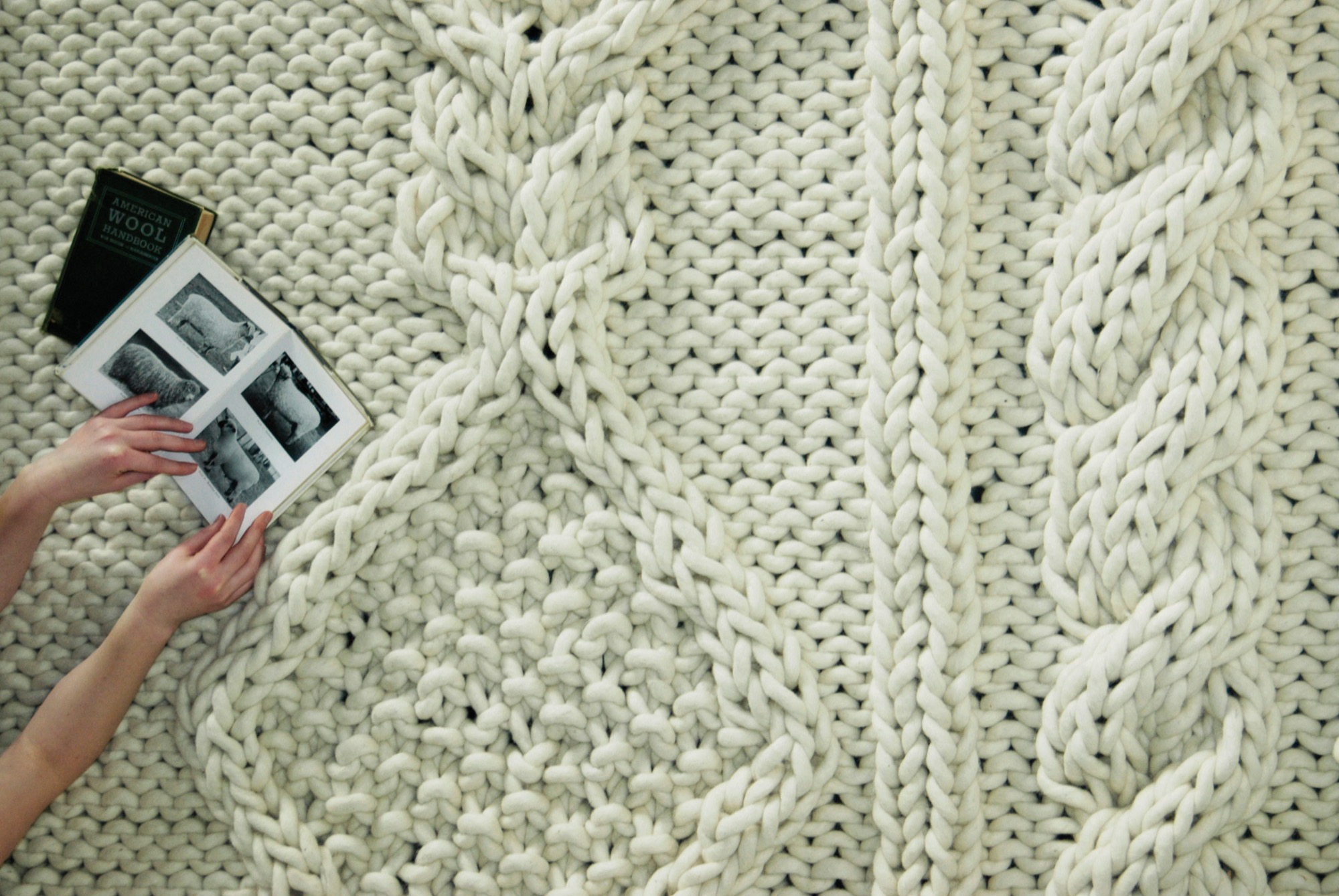
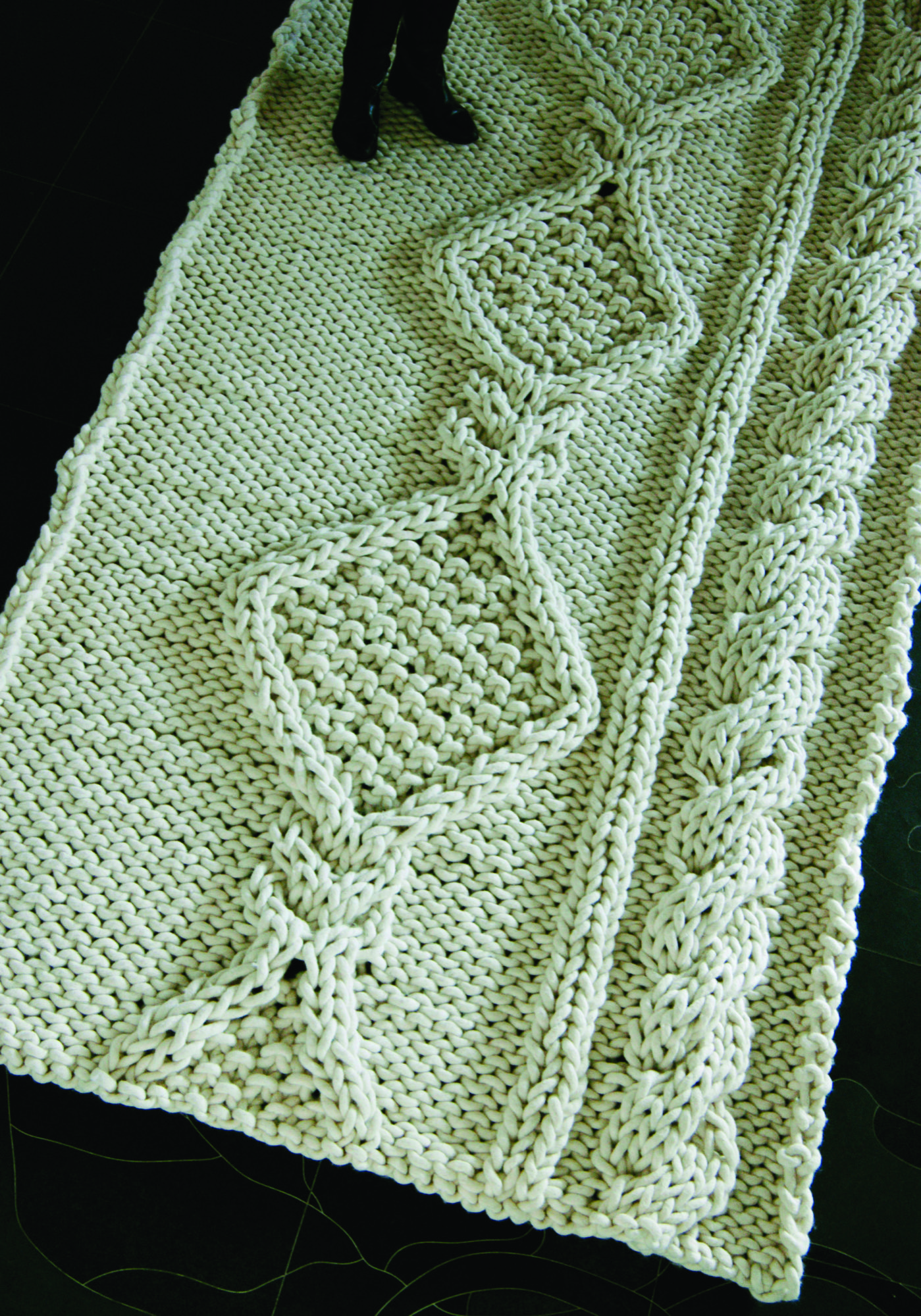
Stories with Granny under the throw
Finally, the knitted Granny Pendant of Casamania… the ideal light to sit under, while reading your favorite book, cuddled up under Serena and Lily’s Henley Wool Throw, the modern version of your grandma’s afghan. △
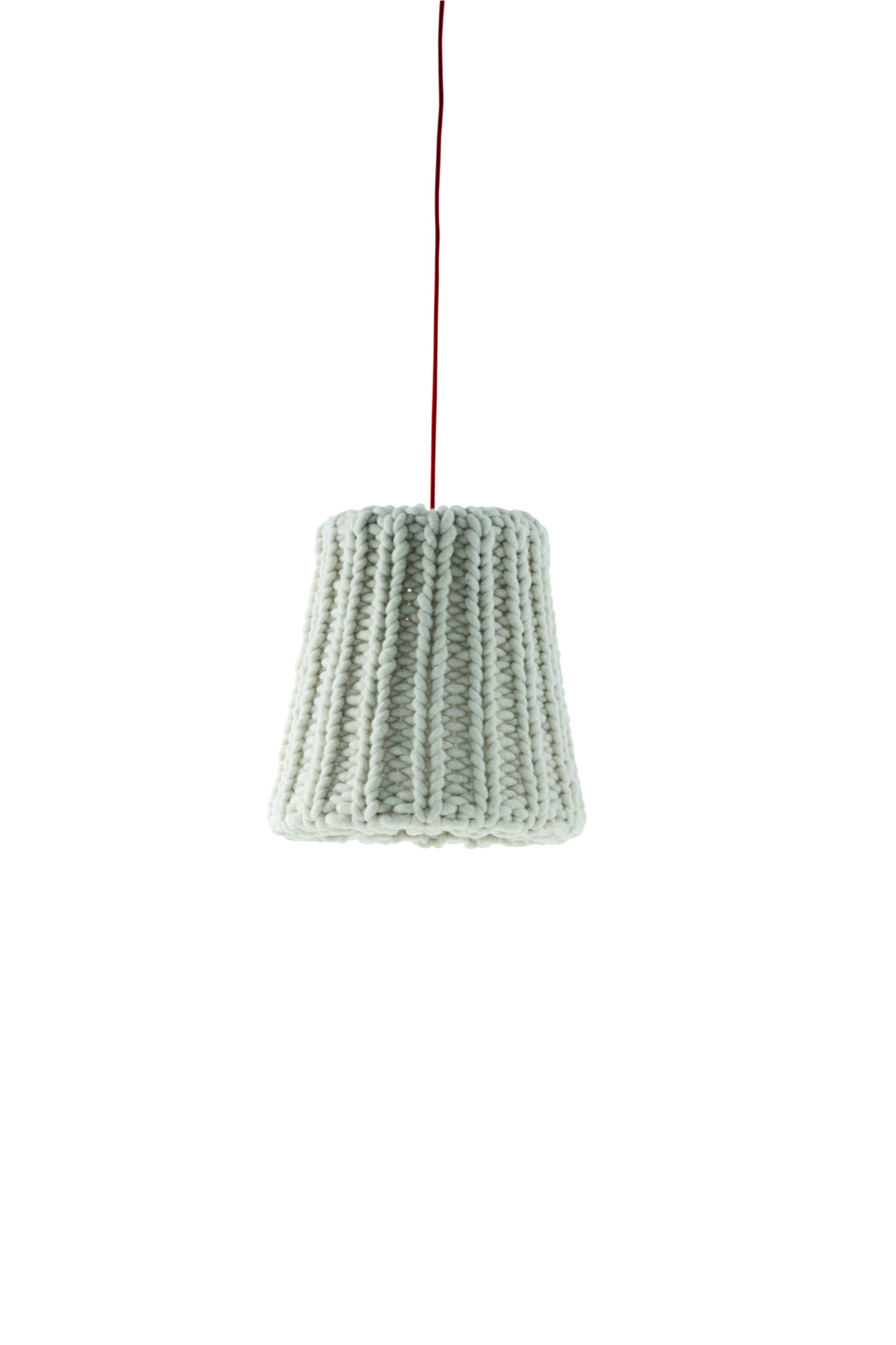
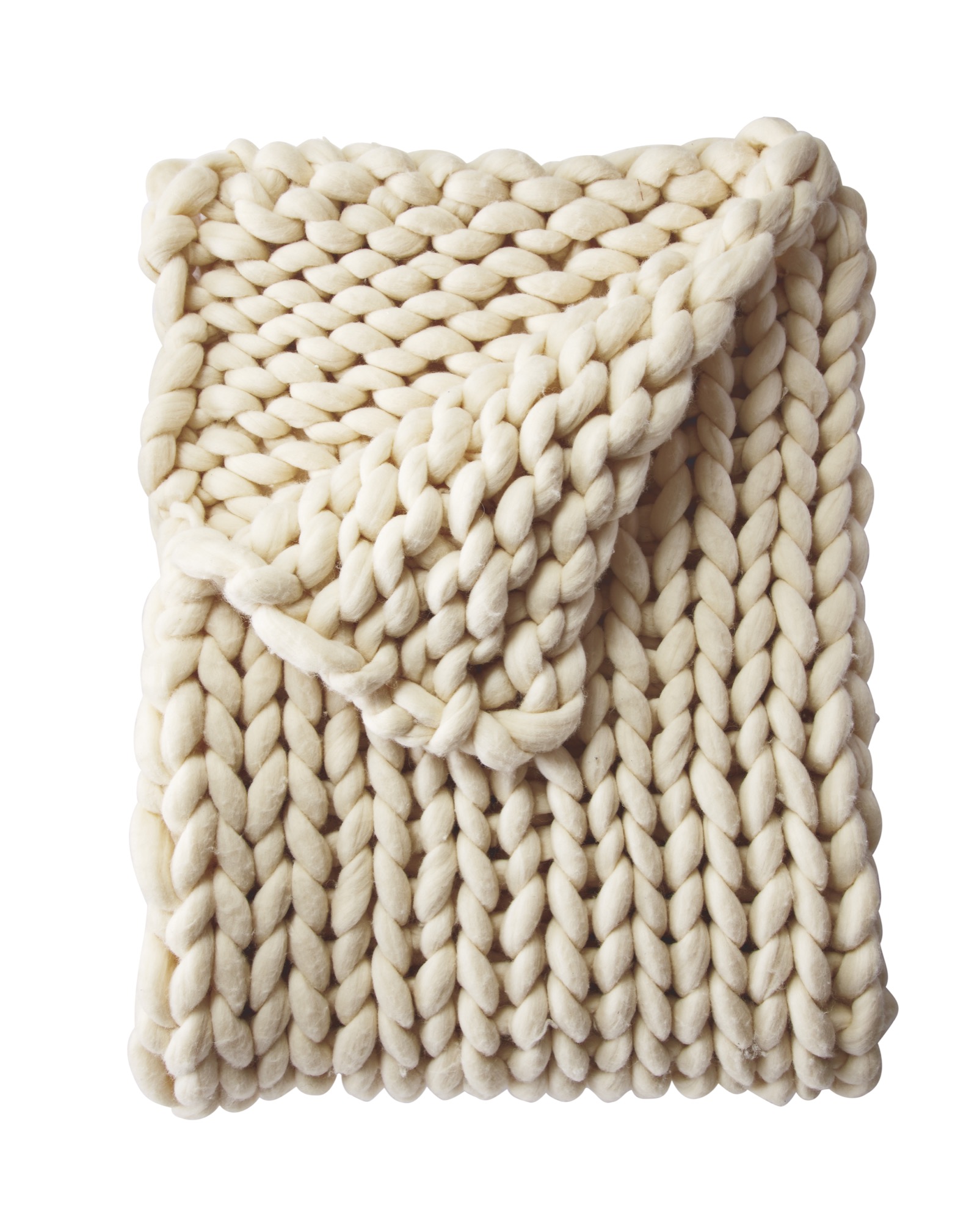
This snuggly roundup is curated by our interior design contributor Jennifer Rhode. Meet the Boulder interior designer and contributor.
Alps // 40
An unfiltered, low-speed journey across Swiss peaks in words and images by Boulder photographer Jamie Kripke
Slowing down gives us more time to look. Having more time to look changes how we see. I wanted to slow down.
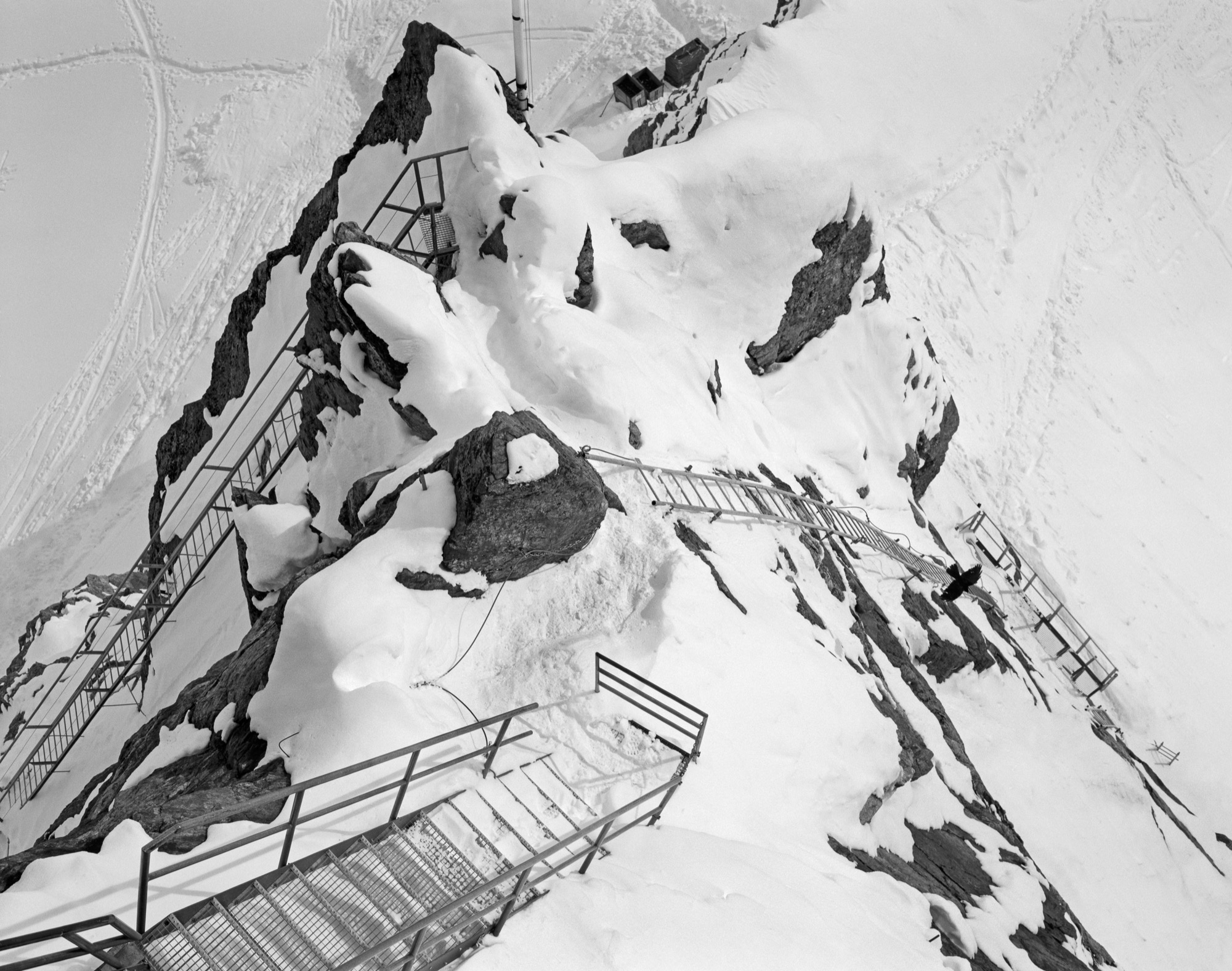
Using alpine touring skis, a small backpack, a folding medium-format camera, and twelve rolls of black-and-white film with ten exposures per roll, I set out to traverse and photograph a high route across the Alps. Each piece of equipment for this trip was chosen for its simplicity as well as its limitations—and for the extra time, attention, and patience it requires.
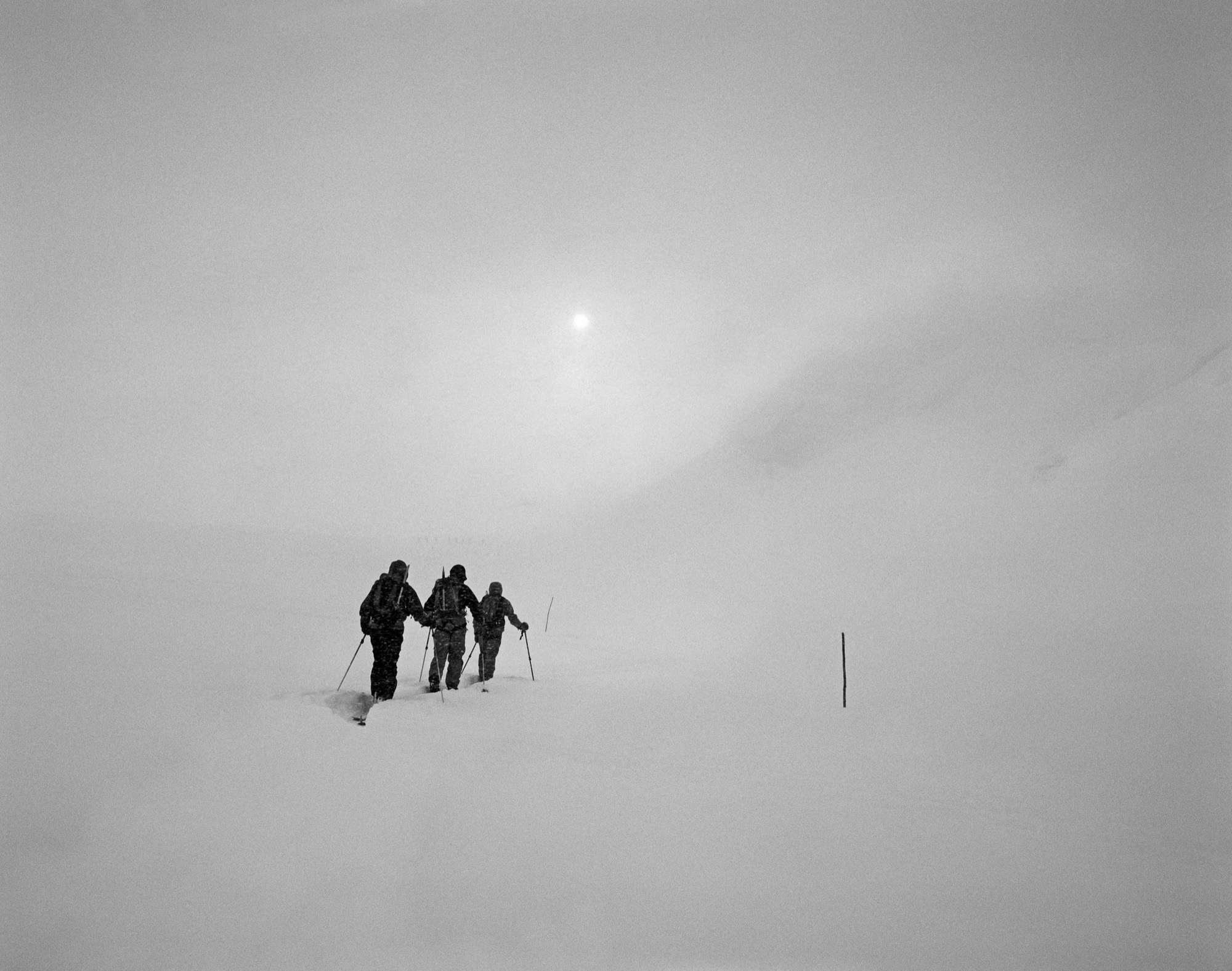
Traveling up and over mountains by skis has a way of shifting time away from something that is measured in minutes, hours, and days. Ascending one step at a time through untracked snow, the units become ski lengths, pole plants, breaths, sips of water, bites of food, daydreams, changes in weather or light.

The physical limitations of low-speed film in a mechanical camera call for a heightened attention to composition, exposure, and technique. Every frame becomes its own unique experience—one that builds gradually with each precise movement of the camera, each small adjustment for focus, aperture, or shutter speed.
"Every frame becomes its own unique experience."
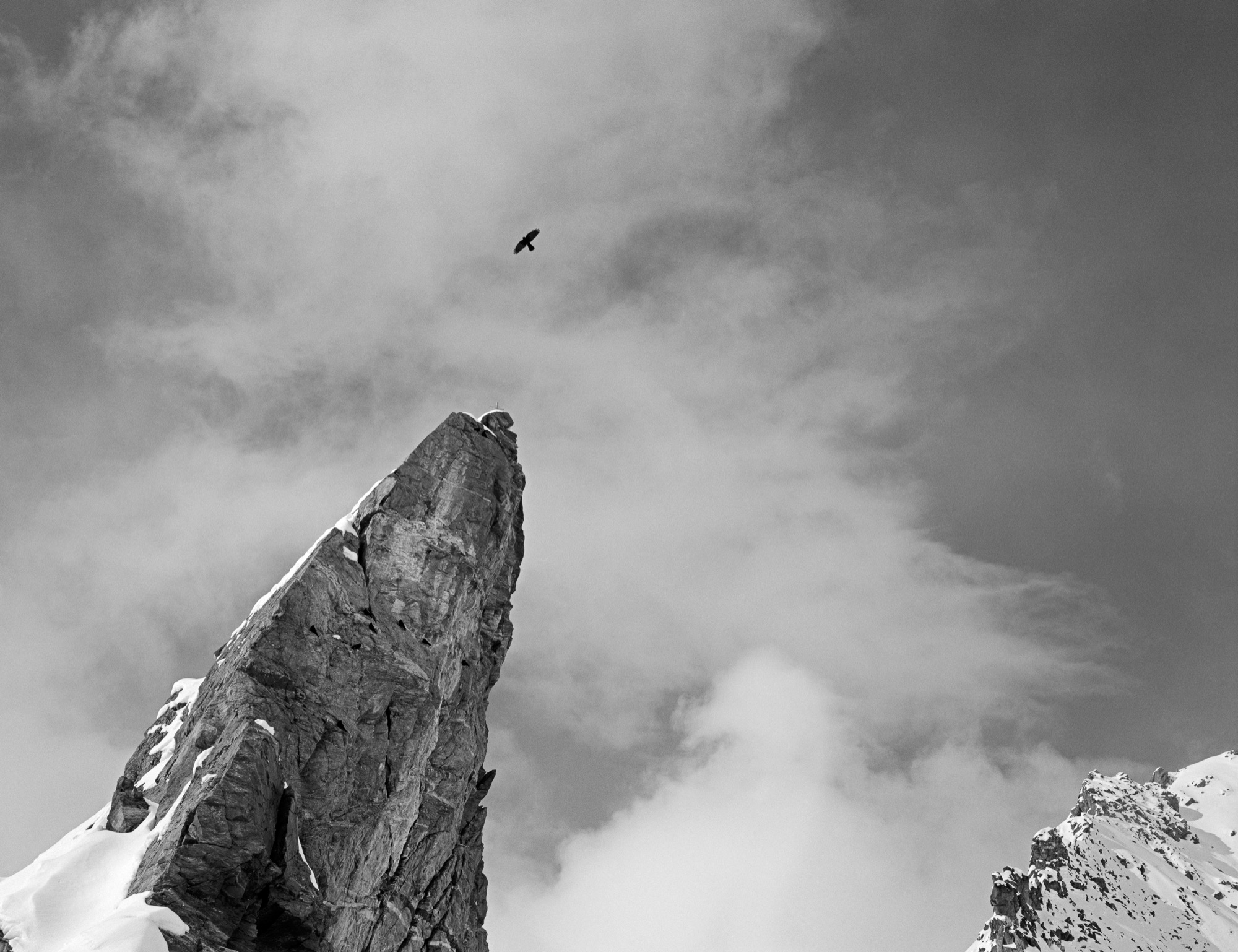
Once I’ve settled on an image, I take a deep breath and try to be as still as possible. High in the Swiss Alps, in the space between the breath and the click of the shutter, time slows to a stop.
"High in the Swiss Alps, in the space between the breath and the click of the shutter, time slows to a stop."
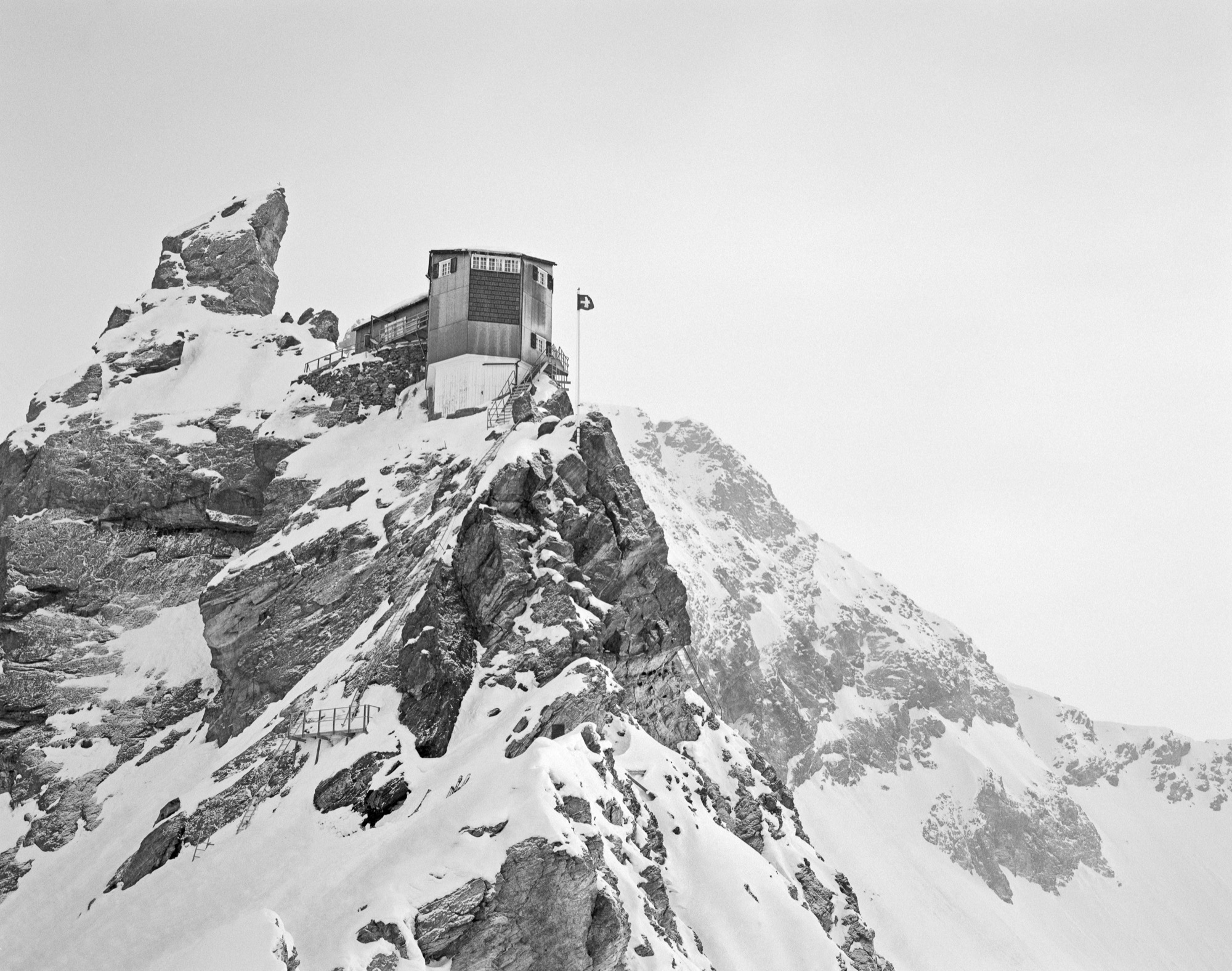
These images were made over the course of eight days, and selected from a total of 120 images, where just one exposure was allowed for each image. They have been minimally altered from their original form in order to stay true to the tonality of the film, and are the pure, unfiltered, timeless compositions that I’d been looking for. △
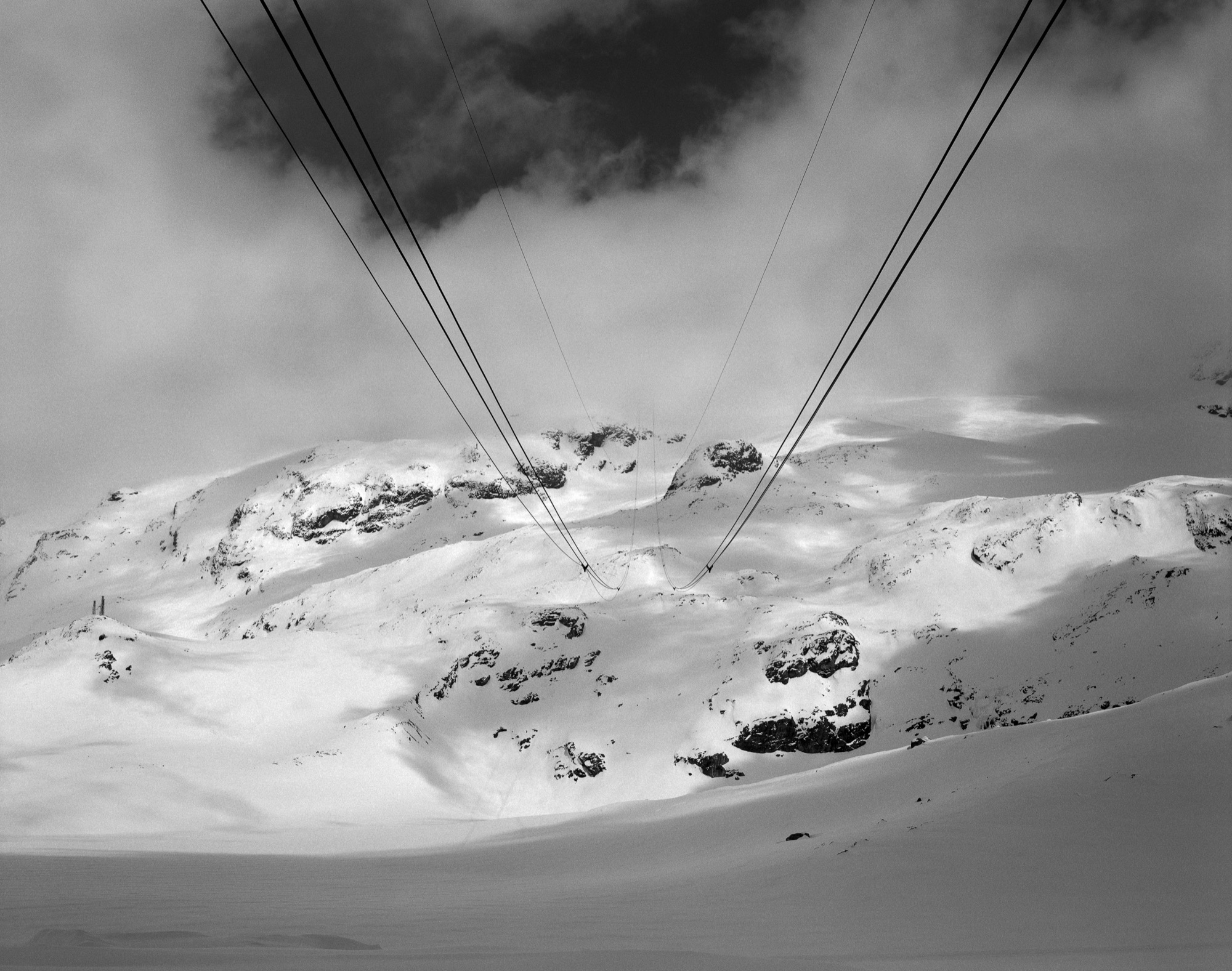
Hillside Holidays
Near the Austrian border in Germany’s Allgäu, Haus P by Yonder boldly reinterprets the region’s traditional mountain architecture
Nestled into the hilly landscape of Southern Germany’s Allgäu, Haus P by Studio Yonder für Architektur und Design is a holiday home for a family of seven from Hamburg. The irregular shaped structure with a traditional 16-degree roof pitch embodies a thoroughgoing reinterpretation of the region’s farmhouse vernacular.

The supporting base of the 249-square-meter (2680-square-foot) home is made of core-insulated, exposed concrete. Above, black charred timber siding offsets the concrete and the gentle landscape. Clean lines and distinct angles are the dominant features of the home’s geometric design. The home comprises two separate buildings—the living area and a storage shed—united by a sheltered central courtyard, where the entrance is located. The orientation of the buildings lends privacy for the family while spending time outdoors.

Spaces
Open and bright, the interior has a harmonious flow of natural light wood and a wall of picture windows extending from floor to ceiling. These windows allow for majestic views of the mountain landscape.
The main level flows from room to room with no interruption except a wrap-around fireplace marking the beginning of the living and dining area off of the kitchen. The fireplace gives a feeling of warmth from every area on the main level.


An open staircase, which juts out of the side of the building to covers the exterior stairway beneath, ascends to the loft—simple in design, yet functional—above the kitchen. This is an area made to relax, unwind, and take in more of the surroundings, with deep-set ceiling windows letting in light and starry night views.
Set in the concrete base, the spacious lower level has two private bedrooms, a bathroom, and a sauna. △
Recipe: Germknödel with Plum Filling
An Austrian ski hut favorite by Austrian top chef Martin Reiter of Hotel Kitzhof in Kitzbühl, Tyrol
Germknödel are a classic lunch favorite at ski huts in the Austrian alps. The fluffy, steamed yeast dumplings are so filling, this comfort food can be a main dish all on their own. The traditional filling is Powidl (a thick spiced plum mousse), which can easily be substituted with plum jam. Germknödel are topped with melted butter and a generous heaping of a mixture of ground poppy seeds and powdered sugar. Recipe by Austrian top chef Martin Reiter, Hotel Kitzhof, Kitzbühl,Tyrol
INGREDIENTS
Makes 6 Germknödel
250 gr flour, divide 15 gr fresh yeast 25 gr butter, softened 1/8 liter warm milk 25 gr powdered sugar 2 egg yolks 1 tsp vanilla sugar (if you can’t get the little sachets, substitute with 1 tsp sugar mixed with 1/4 tsp vanilla extract) lemon zest a dash of salt 6 tbsp plum jam for filling
Topping
90 gr melted butter 90 gr ground poppy 50 gr powdered sugar
STEPS
Dissolve yeast in warm milk, stir in 50 gr of the flour, then sprinkle some flour on top, cover, and let rest in a warm place. This is called the Dampfl.
Heat water in double boiler pot set.
Add softened butter, powdered sugar, vanilla sugar, egg yolk, lemon zest, and salt into double boiler and beat until foamy and warm.
Knead Dampfl with the remaining flour and butter mixture into a smooth dough.
Divide dough into 6 parts, form balls, cover with cloth, and let rest for 30 minutes.
Once the dough has risen, flatten each ball and set 1 tbsp plum jam in the middle. Fold edges up and pinch together so dough closes around the plum filling. Set on floured surface with pinched closure facing down, cover with cloth, and let rest once more until dumplings have risen by half of their volume.
Meanwhile, bring water to a simmer in large pot.
Carefully drop dumplings in the water and simmer for 15 minutes with the pot lid half on, flipping the dumplings over half way through.
Meanwhile, mix ground poppy seeds and powdered sugar for topping.
Place each hot dumpling on a plate and top with melted butter and poppy seed/powdered sugar mixture (the locals heap it on).
For a less traditional yet heavenly delicious variation, top Germknödel with warm vanilla sauce instead of the melted butter, sprinkle with poppy seeds and sugar.
An Guadn!
Introducing Jennifer Rhode
Our new interior design contributor will share her insights on creating an alpine-modern home
Meet Jennifer Rhode, a fresh voice on Alpine Modern Editorial. Based in Boulder, Colorado, the cosmopolitan interior designer and writer will regularly share her insights on making your home alpine modern through considered, quiet design. Her thoughtful narratives and approachable decorating tips will inspire you to move past the idea of “more” and focus on creating beautiful spaces with less. The California native will curate elevated styles and objects from the international world of design that embody functionality and quality craftsmanship.
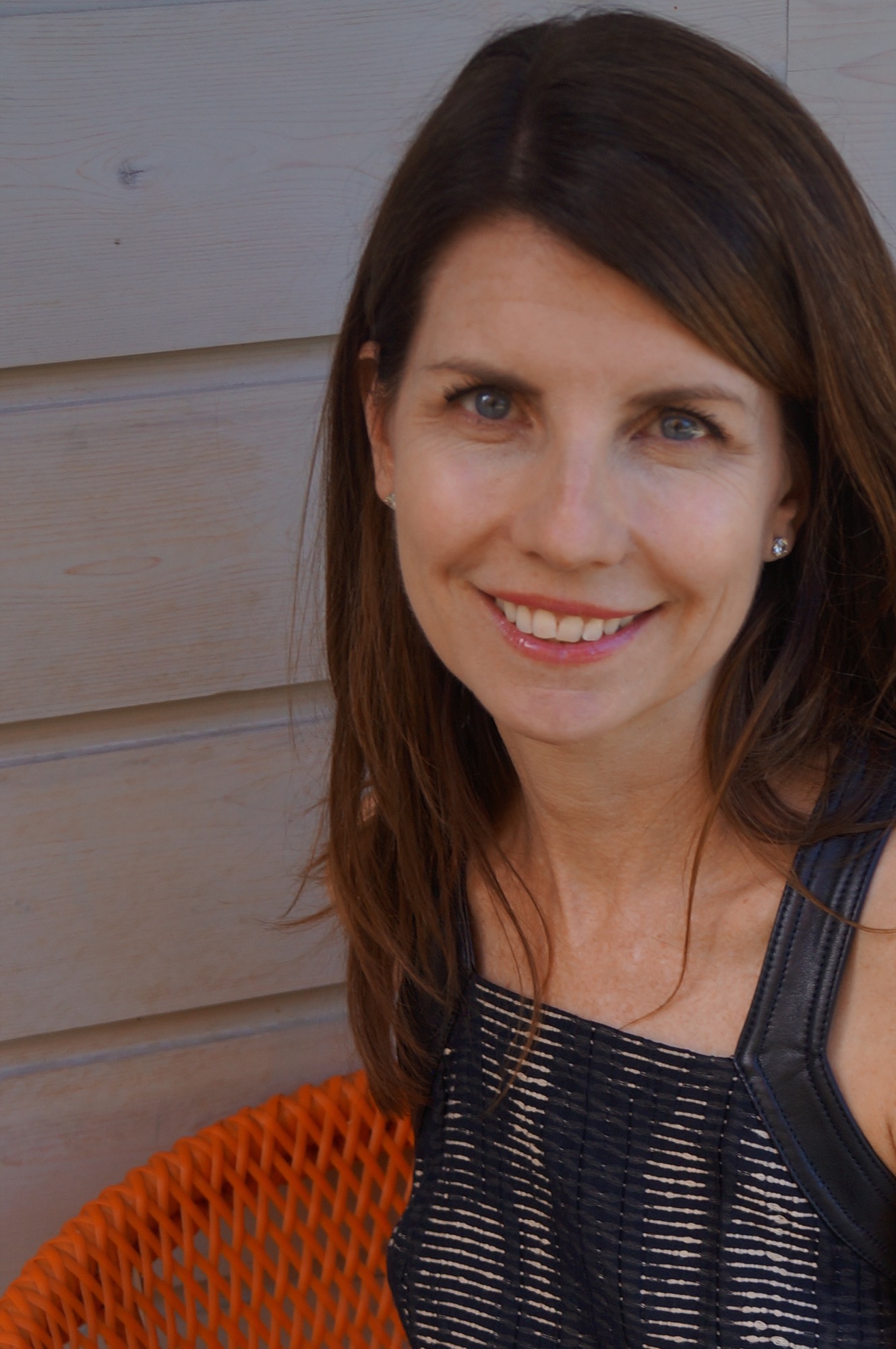
At home with Jennifer
One sunny afternoon this fall, Jennifer invited me into her bright, modern home in North Boulder. We instantly bonded over raising fifth-graders and missing life in Europe. The petite brunette exudes a warm intelligence that at once makes you trustfully open your mind to what she has to show and tell you. The self-proclaimed “nester” surprised me with a delightful spread of fruit and cheese... and a dining table covered in notes and visuals on inspiring ideas for upcoming interior design stories and roundups, which we can’t wait to share with you—beginning next week with a collection of chunkily knitted home goods that are equally cozy and modern.
Jennifer Rhode’s design background
Jennifer began her career in fashion and wardrobe styling, working on television commercials and shows in New York City and then moving into window design in San Francisco. The mother of two has spent the last ten years working on interior spaces in San Francisco, Amsterdam, and Boulder. The designer draws inspiration from the many cities and environments she has lived in. She loves the dichotomy of mixing antique and modern, blank areas with pops of color, simple structures with a striking piece. And she always loves some whimsy thrown in. △
Title image: Interior design by Jennifer Rhode / Photo by Bob Carmichael
Fifteen and Focused on the World
Only fifteen years old, Joe Goldberg travels to explore the world through his camera lens. The photographer hopes his photos will inspire others to get out and see for themselves.
Upon returning from a life-changing trip to Costa Rica when he was only eleven years old, Joe Goldberg (joe_goldberg on Instagram) decided to spend his bar mitzvah money on his first camera. Now fifteen, the high schooler, who lives with his parents in Washington, D.C., expresses his teenage self through the art of photography.
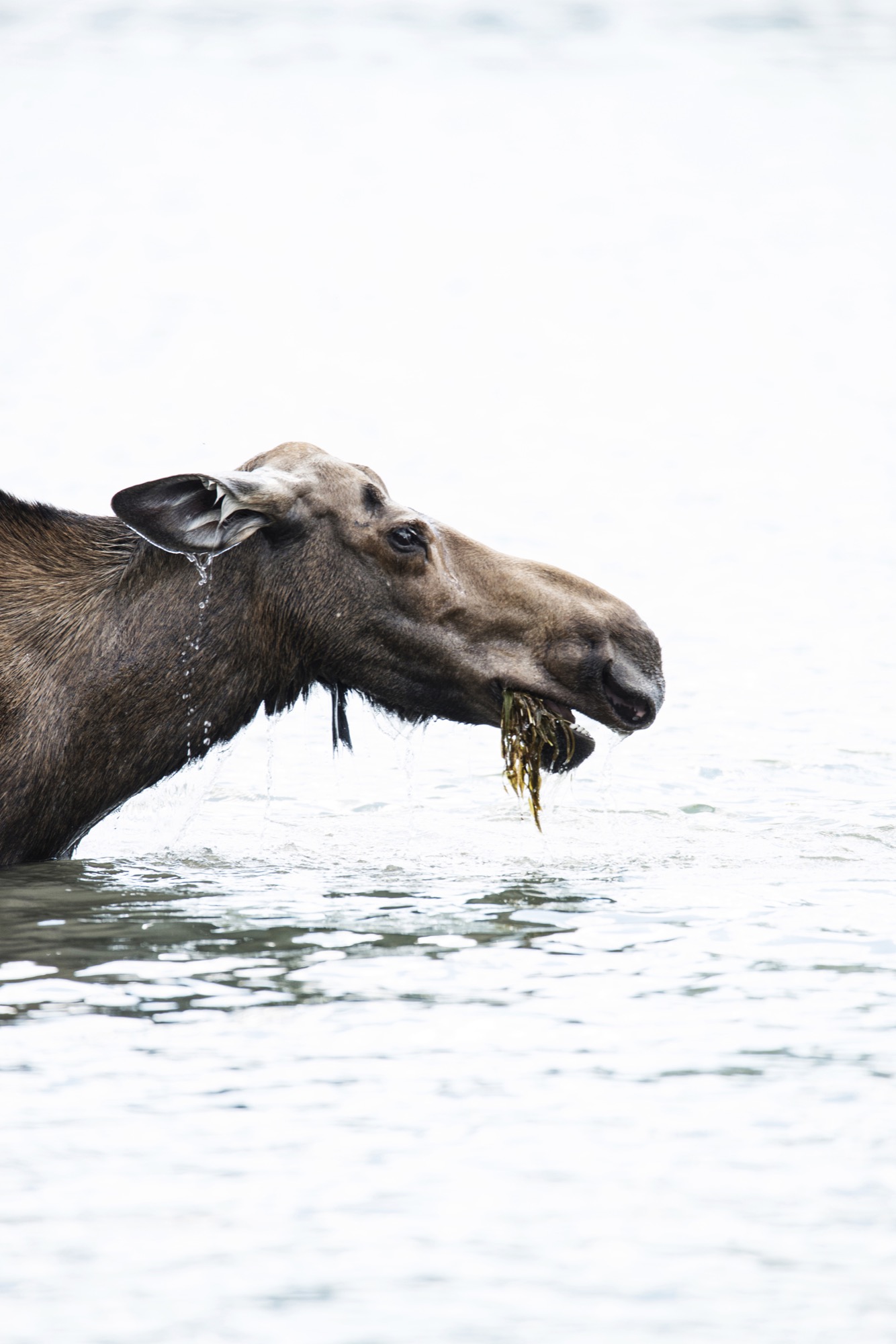
What’s more, the young adventurer wants to inspire others to travel and explore the world, too. At an age when his peers may search for their raison d'être on the Internet, this millennial gets out and uses photography to bring life into perspective.
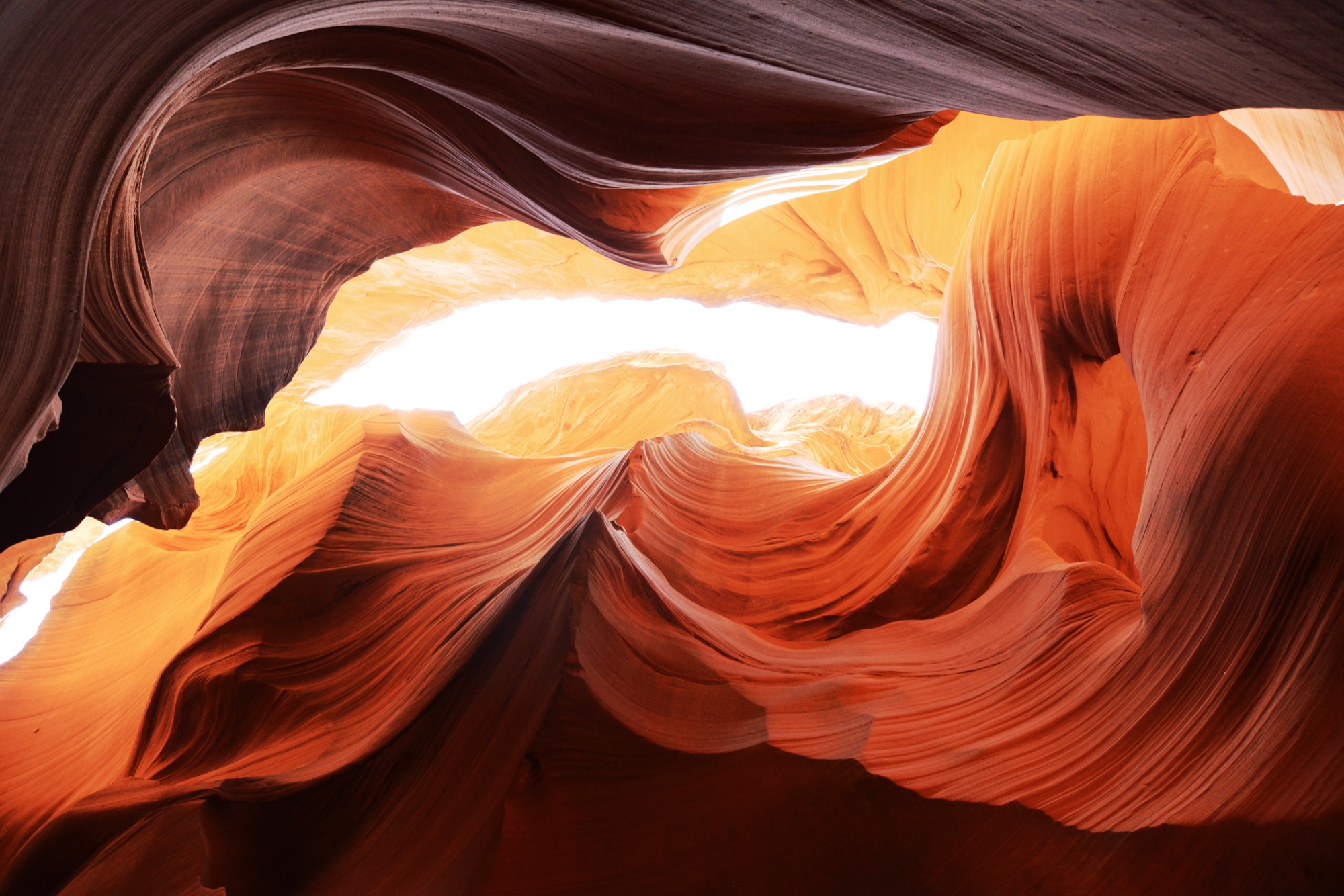
A conversation with teen photographer Joe Goldberg

AM Who are you in a nutshell?
JG I am a fun and energetic fifteen year old who loves to travel to the wildest places, take photos, and explore.
AM How did you find your way to photography?
JG I was eleven years old when I went to Costa Rica and really discovered some of the most natural beauty in the world. I then realized capturing memories with photography is a really cool thing. I realized how passionate I am about photography, so I decided to purchase a camera with the money I received after my bar mitzvah.
"I then realized capturing memories with photography is a really cool thing."
AM What does being fifteen mean for your creative work?
JG I think the role my young age plays in my creative work is having this constant urge as a young kid to travel and see things most people won’t be able to see in a lifetime.
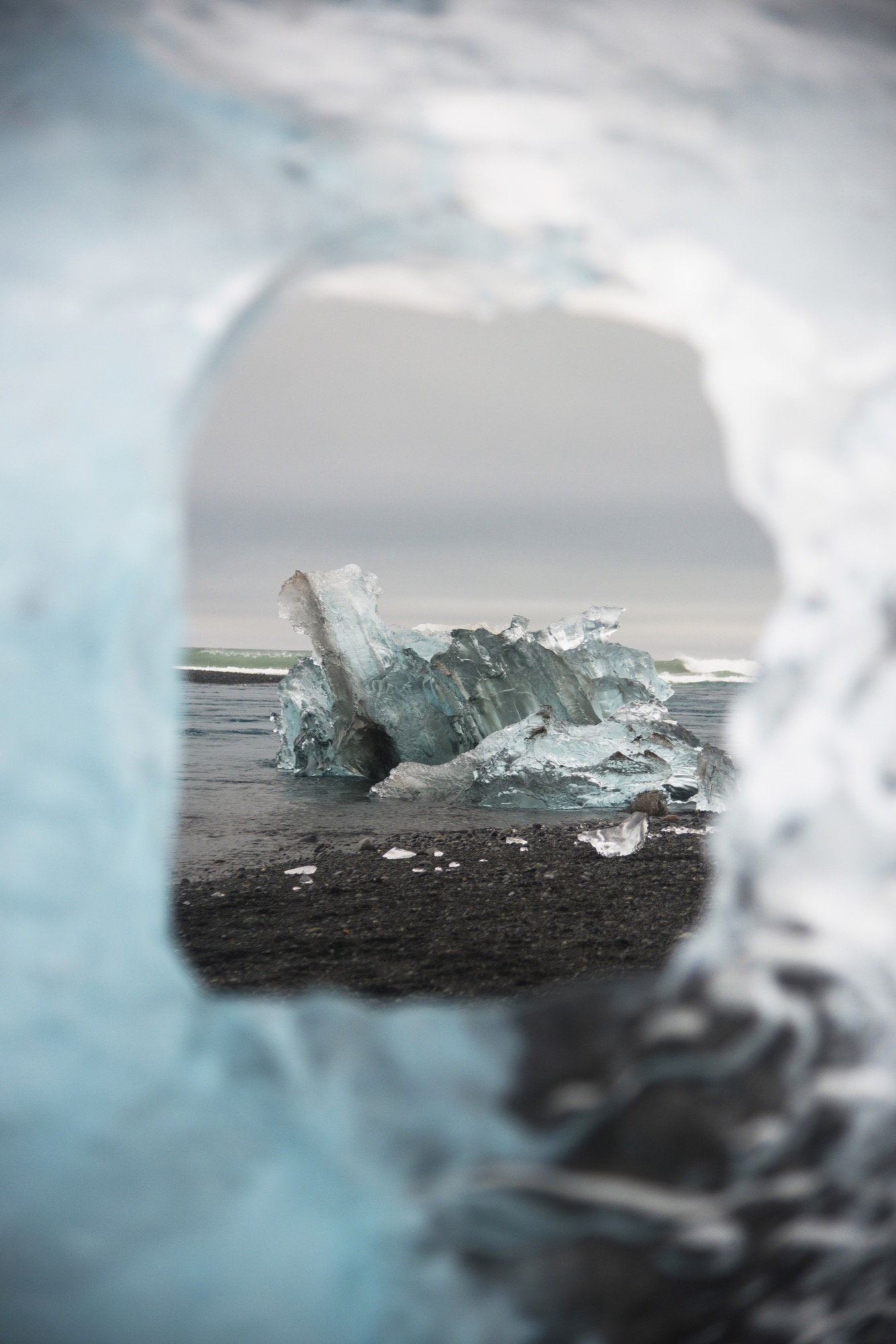
AM How do you balance school, teenage life, and your work as a pro photographer?
JG I attempt to get the best grades I can, so I can afford to miss a couple days of school here and there when I travel. I hang out with friends and family when I can. And when I get the chance to go out on an adventure, I will take the opportunity and then return to my normal, everyday life in Washington D.C.
AM What do the mountains mean to you?
JG The mountains play a big role in my photography. Probably, because I believe mountains make for the coolest photographs. My favorite activity also has to do with mountains, which is hiking. To see those insane views after a strenuous hike is one of the best feelings!
"I believe mountains make for the coolest photographs."

AM What inspires you in your work as photographer?
JG What inspires me is being able to share the beauty of the world with everyone. I love to capture memories and to look back on these incredible experiences I have been lucky enough to have. I love to hear how impressed people are with my work, which is a really big motivation to bring back the best work I can from these adventures I take. I also use my photos to try to encourage people to go out and explore.
AM What’s your favorite place in the world?
JG My favorite places I have been to have to be Iceland and Alberta. Alberta because the number of lakes and the abundant wildlife just blow my mind. You never know what to expect in the Canadian Rockies, and that is why I decided to go back over the summer after having gone during Spring Break. My other favorite place has to be Iceland. Every five minutes, you see a totally different landscape. I would love to return soon.

AM What’s most important to you in life?
JG The most important things in my life are my family and friends. However, being able to see the beauty in this world and pursue my dreams of being a the best professional photographer I can be is also something very important to me.
AM When are you the happiest?
JG I am the happiest when I am in nature, experiencing the amazing sights the world has to offer.
AM What are you up to next?
JG I just finished traveling to Iceland in October. Iceland is a place I wanted to go to for years now. The waterfalls, wildlife, volcanoes, glaciers, geysirs, unique landscapes, and the incredible Northern Lights are the reasons why it was on the top of my bucket list. △
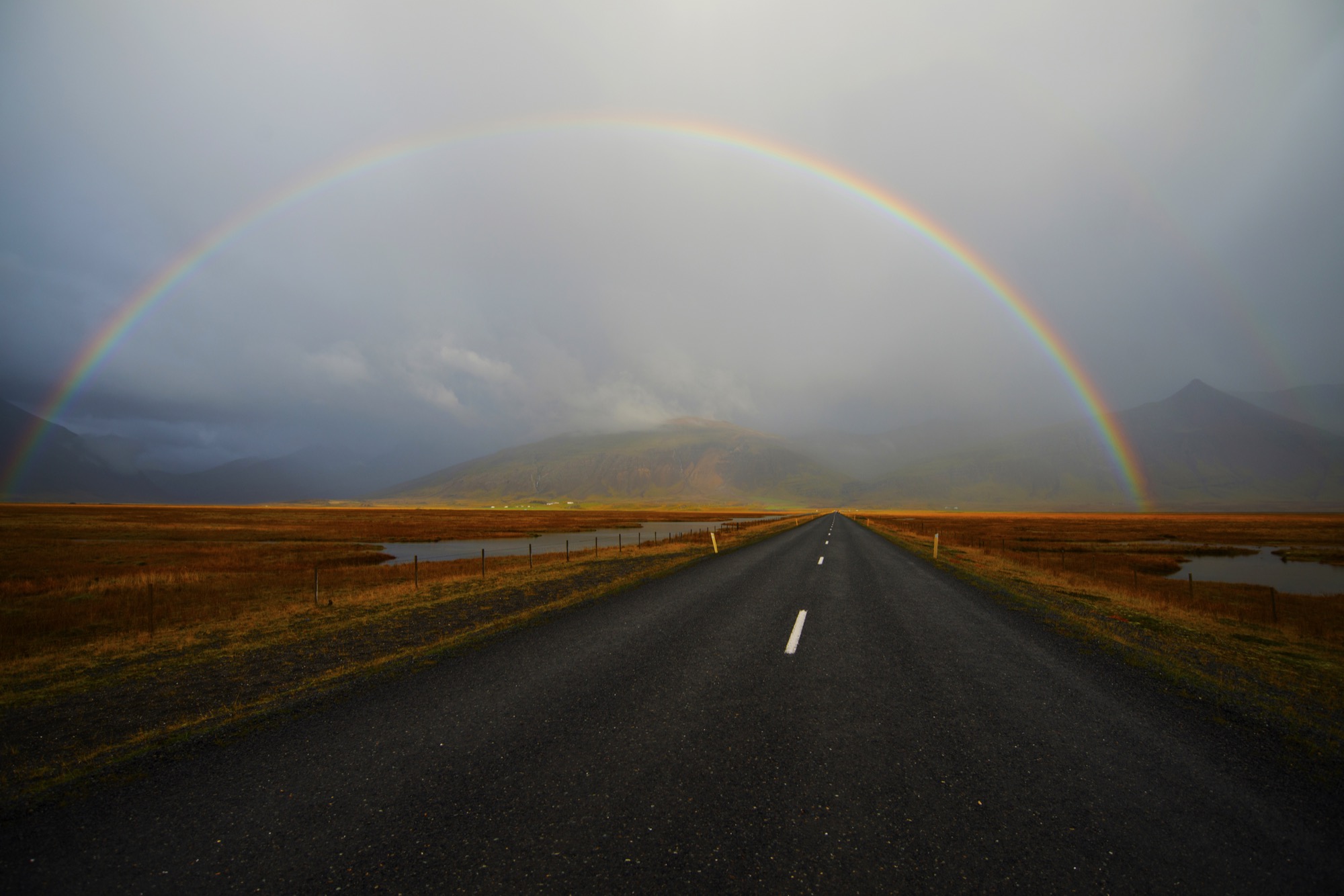
Monochromatic Reminiscion
Belgian travel and wildlife photographer Martin Dellicour comes eye to eye with the history of Earth embodied in a herd of muskoxen on the high plateaus of Dovrefjell, Norway.
Belgian travel and wildlife photographer Martin Dellicour comes eye to eye with the history of Earth embodied in a herd of muskoxen on the high plateaus of Dovrefjell, Norway.
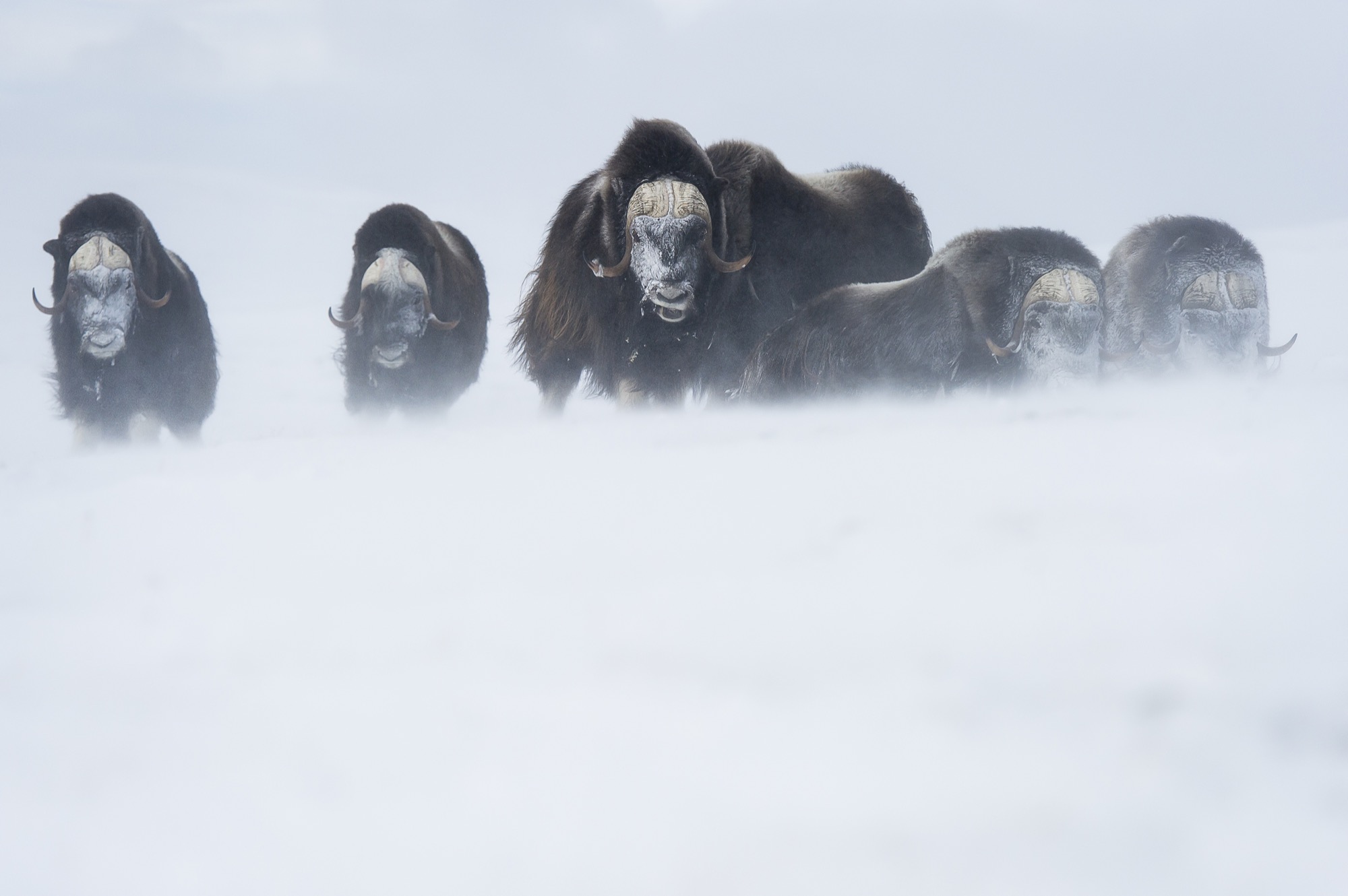
Growing up in Ardennes, Belgium, visual artist and photographer Martin Dellicour developed an appreciation for the aesthetics of nature early on. Dellicour remembers childhood as taking place outdoors, simply observing. At age fifteen, Dellicour’s parents gave him his first camera, a Nikon F–501, which he regards as “a revelation where the decision of being a photographer was secretly made.”
After studying at the school of art in Liège, Belgium, Dellicour worked independently, producing travel photography, graphic design, and videography. Four-teen years ago, he opened his own creative agency, Studio Breakfast, and later the graphic design atelier C'est Beau.
Pictured is Dellicour’s heedful dance with a herd of majestic muskoxen in Dovrefjell-Sunndalsfjella National Park, Norway—a winter landscape he describes as “an amazing and wild place.” The snow has a power of its own to Dellicour, one that can “change our perception to focus on the simple, essential things, and see the many questions of everyday futility.”
These muskoxen have a similar effect on Dellicour. “When you are in front of them, you feel like you’re facing the history of Earth. Out of time.” Paired with the white, minimalistic landscape, Dellicour demonstrates the transient experience of observation.
“When you are in front of them, you feel like you’re facing the history of Earth. Out of time.”
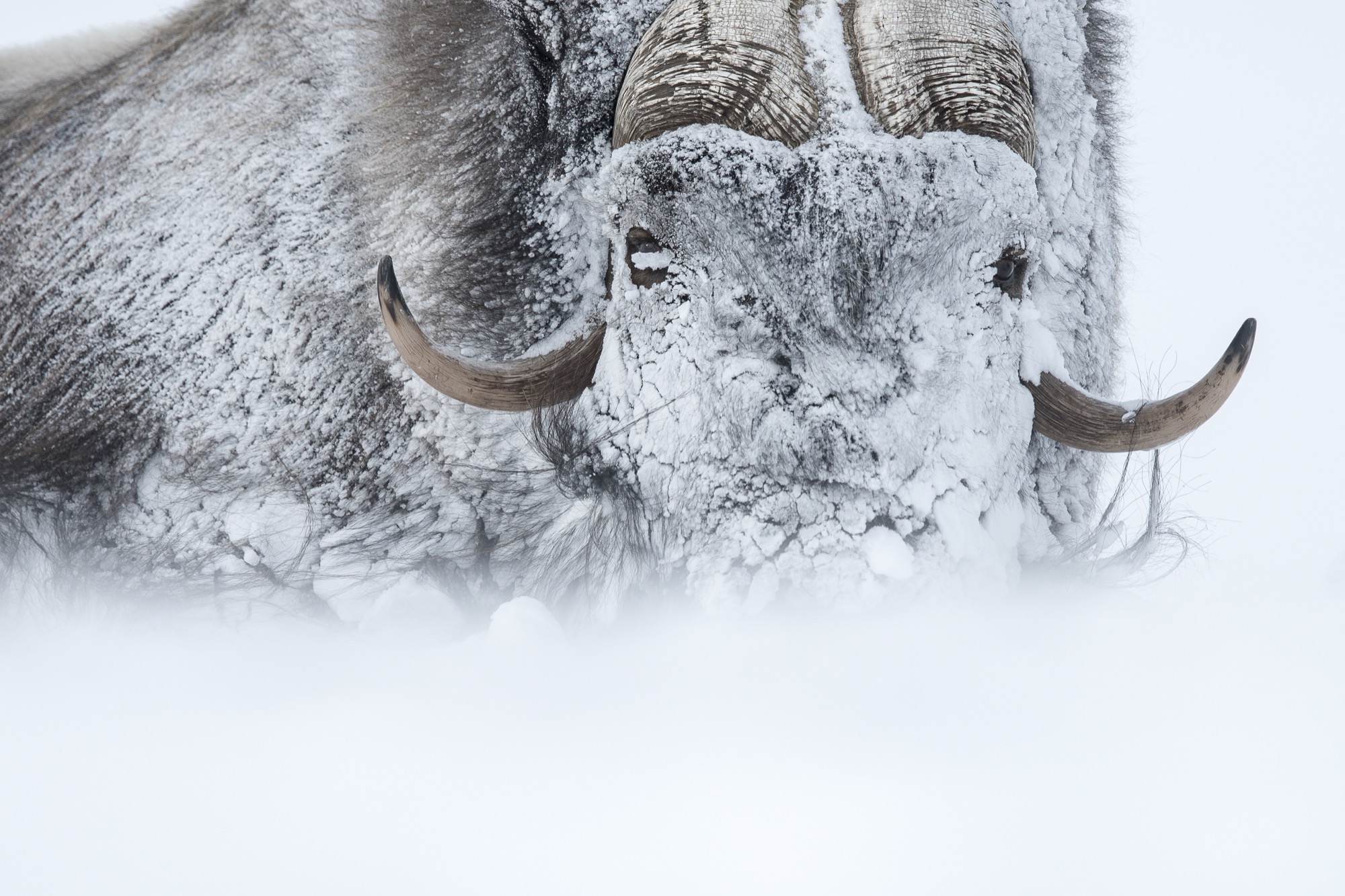
Dellicour desires to be close with nature, questioning the eyes and minds with which we observe. “It is an inner journey as much as an outdoor experience,” he says about his purpose in capturing natural settings.
“My main subjects are wildlife, nature, landscapes. But behind the subject, I am moreover fascinated by the light, the way light always surprises me in outdoor conditions.” Places visited hundreds of times appear different to the lensman every time. “Nature photography has this quality of keeping an element of unpredictability,” he says. “It’s exciting.”
“My main subjects are wildlife, nature, landscapes. But behind the subject, I am moreover fascinated by the light, the way light always surprises me in outdoor conditions.”
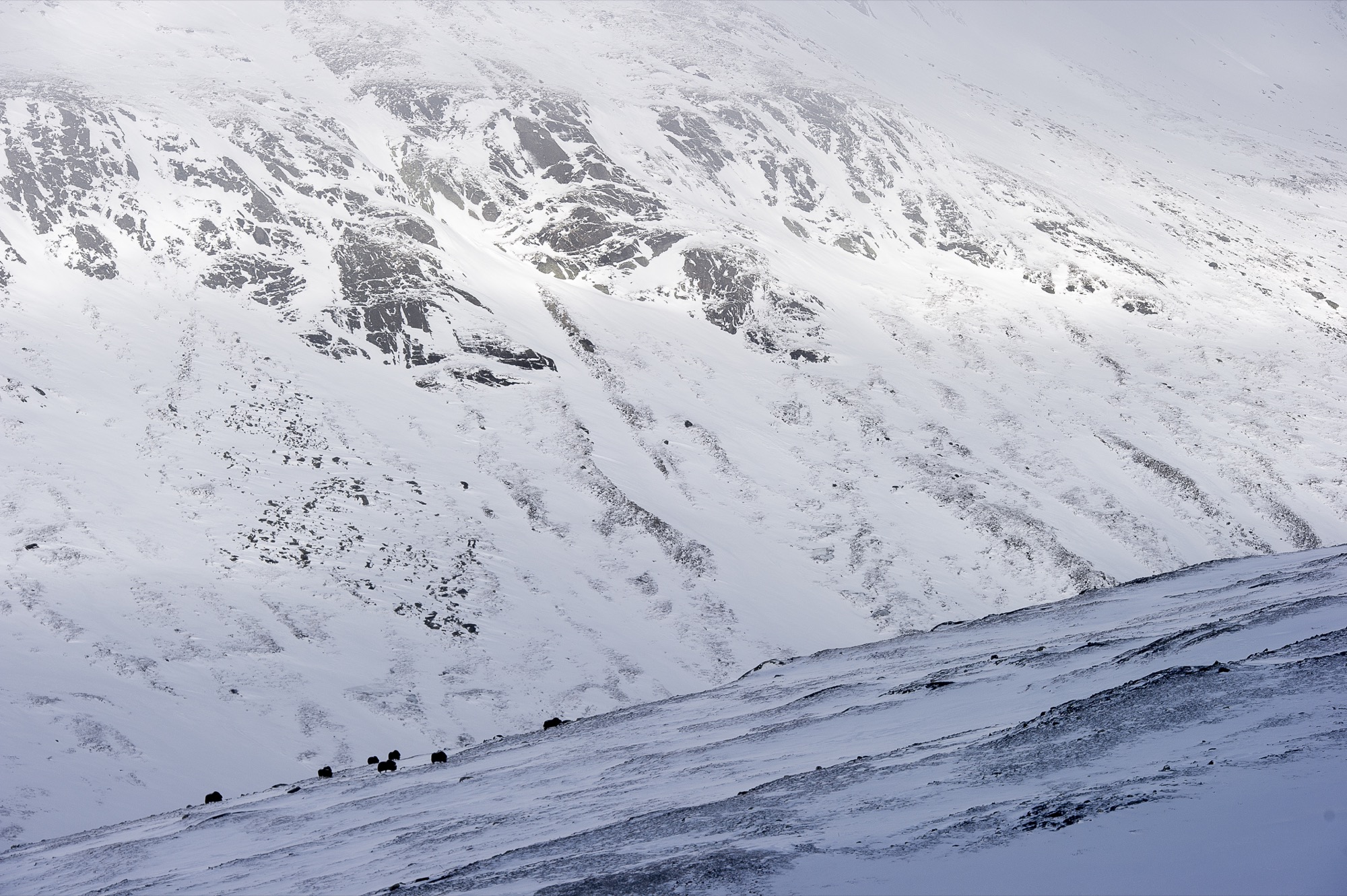
Monochromatic atmospheres characterize Dellicour’s artwork. “The subject is not always recognizable but more of a suggestion.” The indistinct interplay between the wild animals and the still landscape becomes the crux of his work, the essence of what makes him a unique artist. It’s the unpredictability and rawness that draws the viewer to question what visual experience we’re having and why.
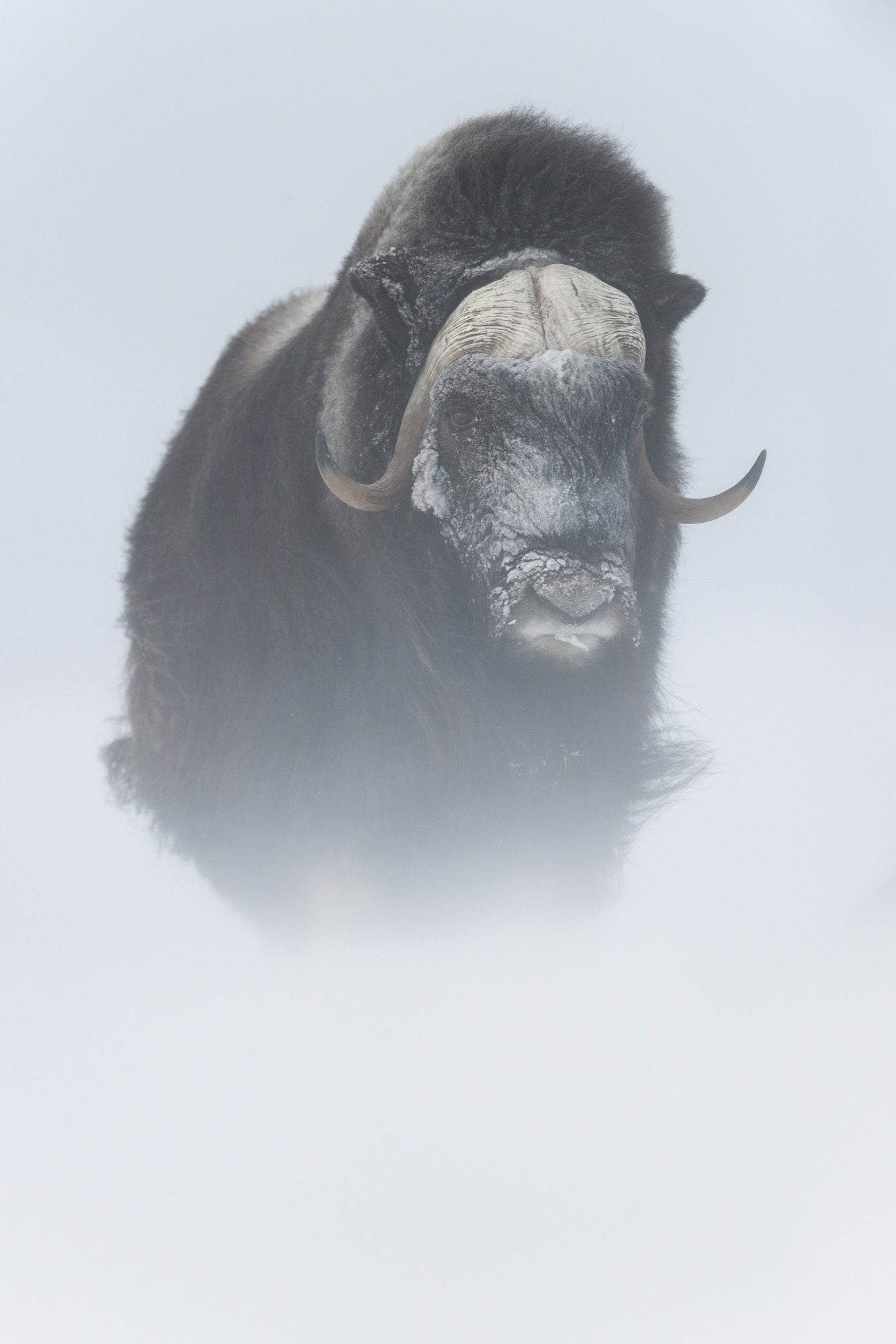
Dellicour evaluates his own work through the eyes of others. “It’s quite difficult to know if I’ve got talent or not,” he says. When he finishes one project, he’s off to the next in order to keep the creative mindset moving. Artwork then becomes a mode of transport between ideas, in hopes that others will be able to identify something inside of themselves that reacts to the visual aesthetic presented. In this way Dellicour main- tains freedom of expression, which allows viewers to write their own stories and empathize with his work.
His life, seemingly complex—ever engaging with a new subject in front of the lens, perpetually on the road—Dellicour nevertheless remains simple in lifestyle. “I try to get the best of all the little and big things that happen in my life”...walking in forests, making bread, sharing time with his wife and son. “Sometimes we can’t see the evidence,” he says, “we focus on the bad things or don’t even take the time to focus on anything.” So keeping an element of play is essential to Dellicour’s life, the balance of contemplating, creating, yet liberating via the visual arts. △
Recipe: The Alpine Glissade
Luscious Holiday Libation: A festive cocktail based on cold-drip coffee
INGREDIENTS
Alpine Modern Cafe cold-drip coffee: 1.5 oz (45 ml) filtered water: 0.5 oz (15 ml) Bonal Gentiane Quina: 0.75 oz (22 ml) Campari: 0.25 oz (8 ml) Licor 43: 0.25 oz (8 ml)

DIRECTIONS
Combine ingredients and pour over ice. Quick stir in glass. Garnish with orange peel. Serves 2. △
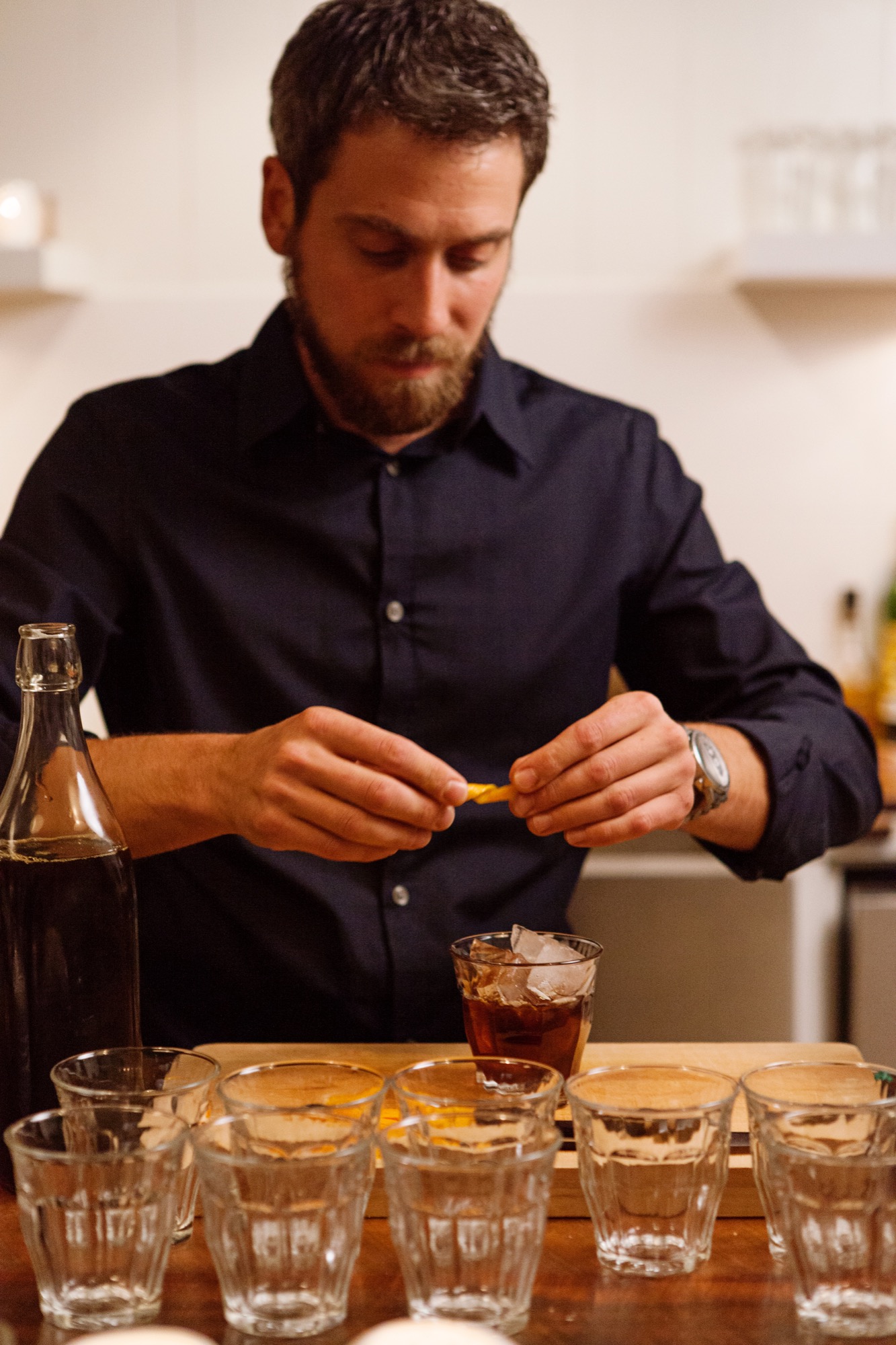
This recipe is part of Alpine Modern's big Winter Feast, which we will publish here on Saturday.
Hygge Life
A conversation with Alexandra Gove—collector of beautiful moments and things—about slowing down and being hygge in the present... like the Danish do.
When Alexandra Gove—the founder of Colorado-based Hygge Life and a spirited collector of beautiful moments and things—followed her boyfriend to Amsterdam, the Colorado native fell in love with a Northern European way of life that has no name in the English language. A conversation about slowing down and being hygge in the present.
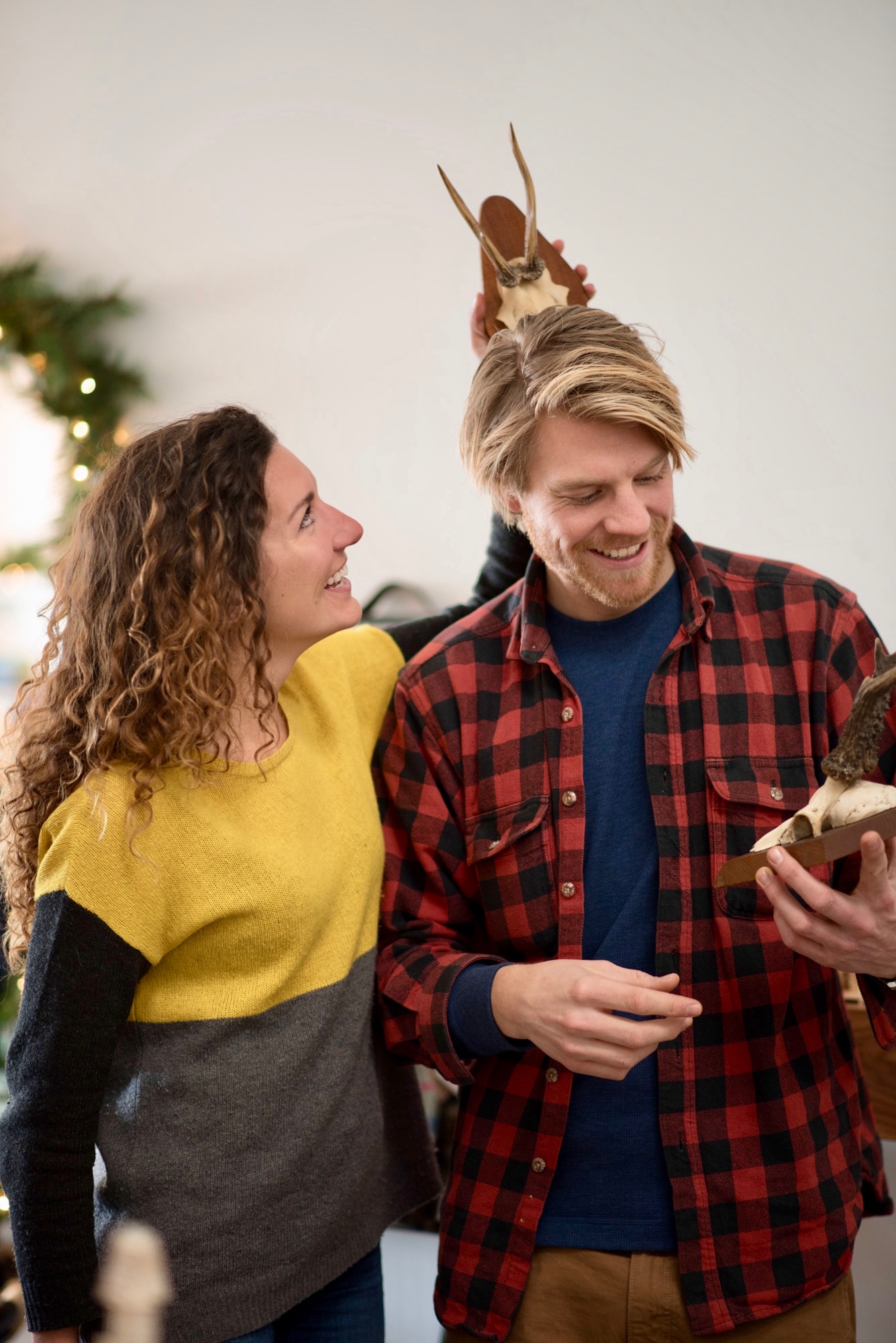
A Conversation with Alexandra Gove
A M How did you end up in Amsterdam?
A G My boyfriend, Koen, is Dutch. We skied our way to love in Vail, Colorado, a few winters ago and moved to Amsterdam together a year later.
A M You didn’t stay put there for very long . . .
AG No. That following summer, we embarked on a life-changing adventure. We bought a 1971 Opel Blitz camper, painted it blue, hitched up our bicycles, and toured Europe, selling poffertjes (mini Dutch pancakes) and collecting European vintage treasures. We stamped “Hygge Life” on the camper and called it the “Hygge Bus.”
A M What’s hygge?
AG The Danish word hygge (pronounced “hoo-ga”) has no direct translation in English. “Cozy” may come close. Hygge is the euphoric feeling when you are completely content in the present moment. Loved ones, good food, and drinks are likely contributors, as are candlelight and conversation. It’s the art of creating special moments out of daily routines and rituals, whether it’s lighting a candle over breakfast, buying fresh flowers weekly, posting handwritten invitations for your backyard summer party, or breaking out the good wine when your friends are over for dinner. It’s owning things you truly love and choosing authenticity over practicality. Hygge is about realizing the opportunity we all have to make the ordinary aspects of our lives extraordinary; to add that extra sparkle to moments, big or small.
“Hygge is the euphoric feeling when you are completely content in the present moment.”
A M At the time, you lived in Amsterdam, yet you chose a Danish name for your blog and shop . . .
A G The Dutch call this feeling “gezellig,” and the Germans “gemütlich,” but I adopted the Danish version to represent the bus tour, lifestyle, and collection of vintage household objects and wares. Not only because “hygge” is easier to pronounce but because Danish design is simple, inspiring, timeless, and just so hygge.
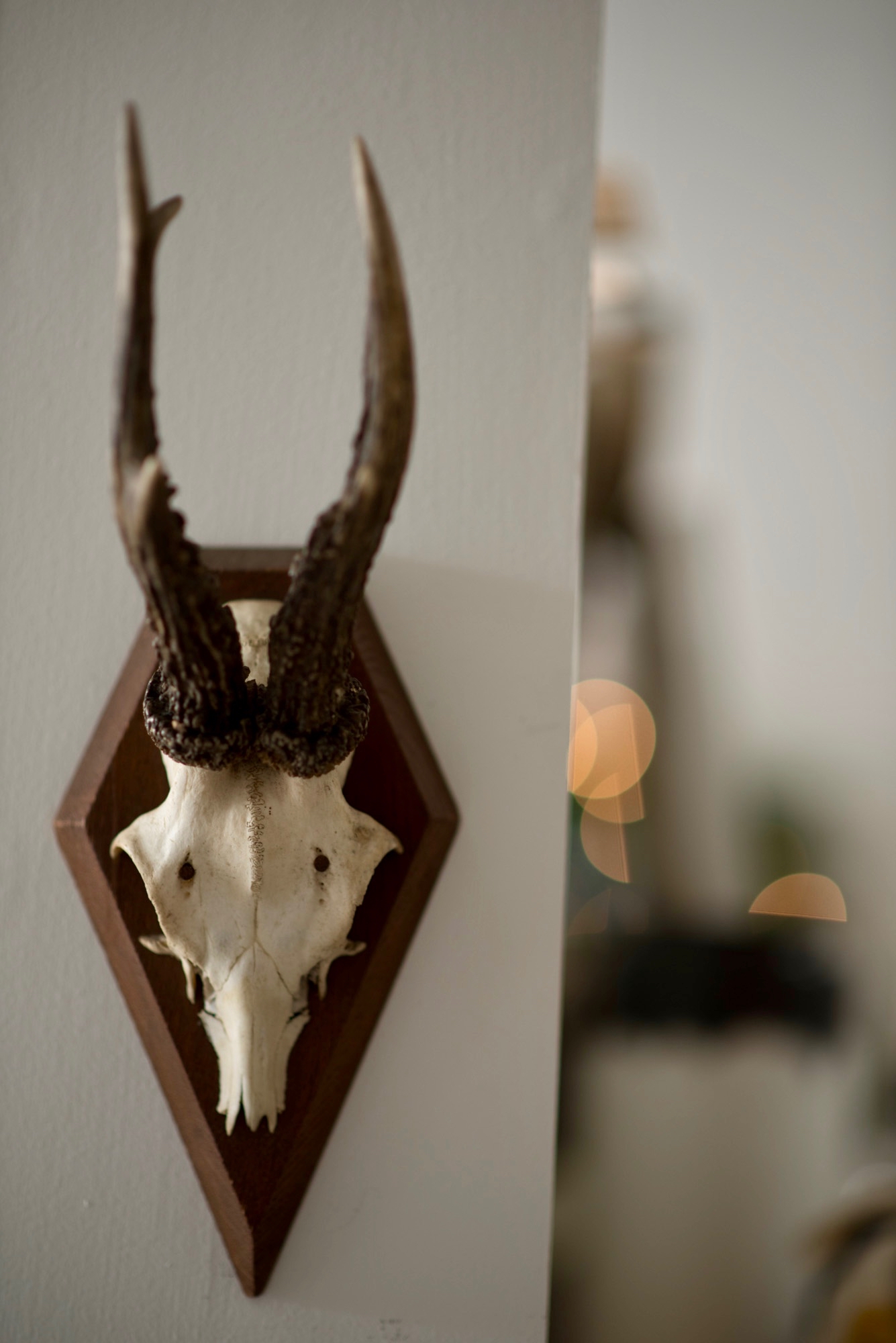
A M Where did you come by your unique antler collection?
A G Driving the Hygge Bus up and down the windy roads in the Alps across France, Switzerland, and Germany, we discovered these mounted roe deer antlers among other alpine artifacts. The roe deer is typical for Europe, and the small and delicate antlers are rare in the United States, so I felt the urge for sharing my assortment with the people at home. We began buying them at flea markets, antique barns, and auctions along the way until we had a beautifully unique collection.
A M What have you been up to since the Hygge Bus tour?
A G Hygge Life has evolved into an online shop of new and vintage items from all over Europe that help create hygge spaces and moments. After lovely shared meals at our table, an evening filled with smiles, conversation, and warmth, we now have a word to describe the experience . . . hygge. △
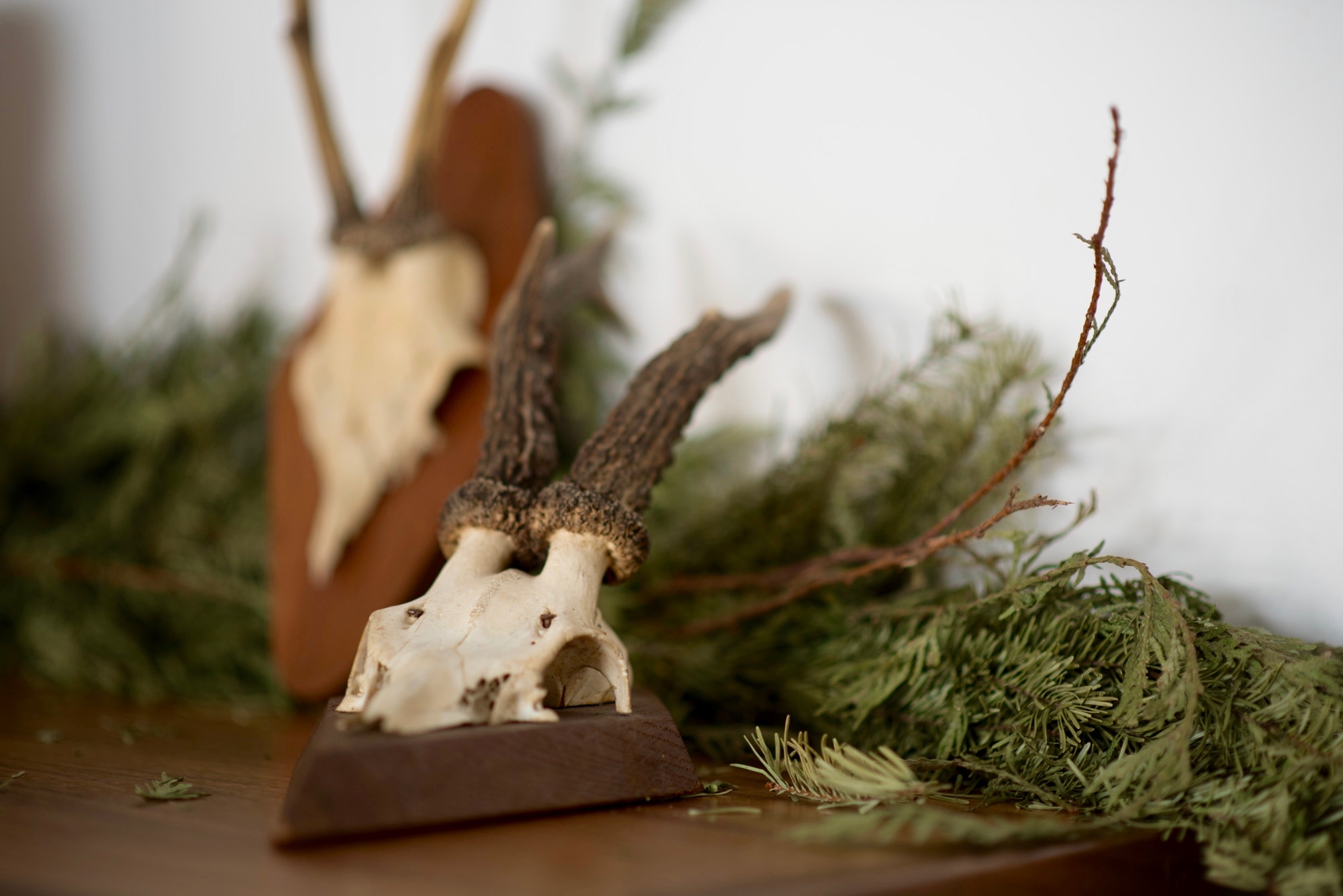
Alpine Modern Holidays
Alpine Modern editor in chief Sandra Henderson shares her guide to a Bavarian-Coloradan Holiday
 This holiday season, Dwell is handing over the mic to some of their publishers on the new Dwell.com. We are tremendously thrilled that our editor in chief, Sandra Henderson, got to share her favorite picks for the season with the Dwell community—and now we are sharing them with you.
This holiday season, Dwell is handing over the mic to some of their publishers on the new Dwell.com. We are tremendously thrilled that our editor in chief, Sandra Henderson, got to share her favorite picks for the season with the Dwell community—and now we are sharing them with you.
Our editor's Guide to a Bavarian-Coloradan Season

I grew up in Bavaria, hiking, skiing, and loving the Alps. With masters degree in political science and sociology in my pocket, I began my journalistic career at a German women’s magazine. On a trip to Washington, DC, I fell in love with my now-husband and eventually moved to the US. I began dreaming about starting a magazine that combines my two passions: modern architecture and the mountains. Meanwhile, living in Colorado, I serendipitously connected with Lon McGowan, an entrepreneur who at the time already owned an impeccably curated design shop in Boulder and shared my vision for a similar publication. Three short months later, we launched Alpine Modern magazine. We printed six beautiful issues before taking our content entirely online.
"Being a minimalist, I love to give beautiful things that are also useful and wearable—or are a treat to eat or drink."
Give

Three Peak Mountain Pillow for $75 from Alpine Modern—Hug a mountain! The handcrafted cushions—inspired by the maker’s yearly summer trips to Bend, Oregon and Three Sisters Wilderness—add a whimsical touch, whether you live in a mountain cabin or an urban condo.
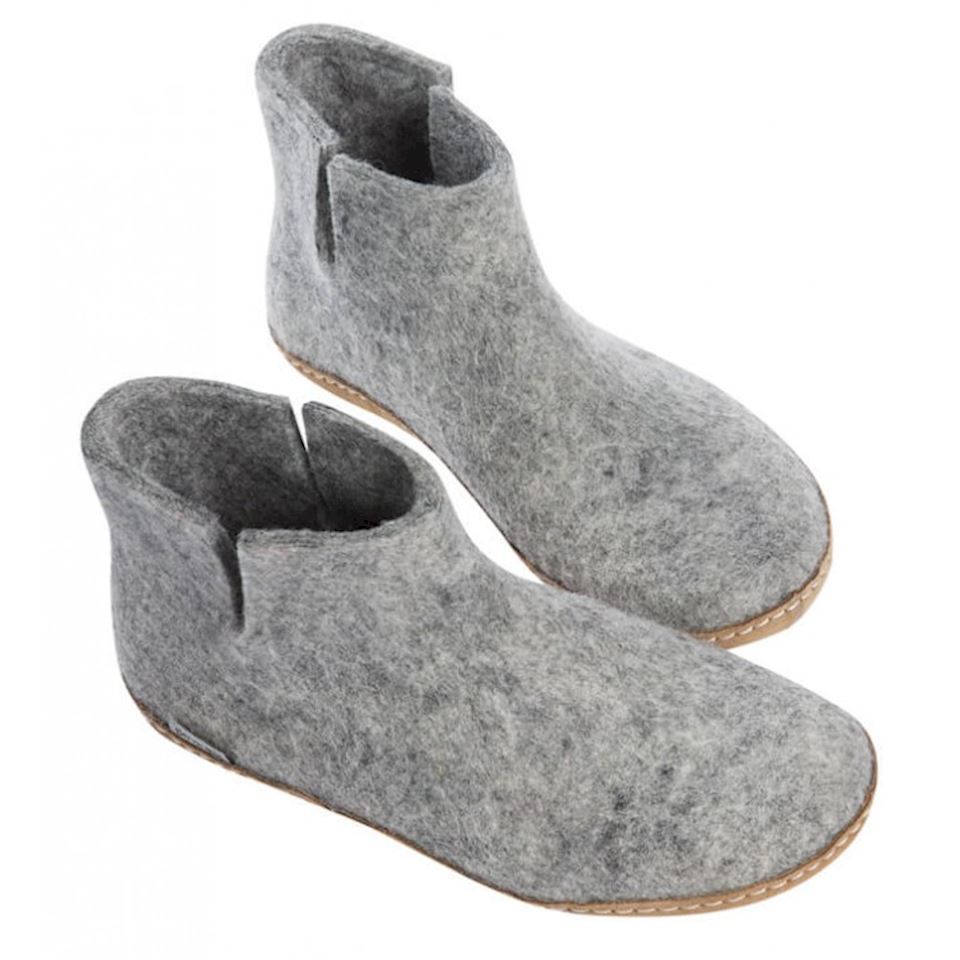
Glerups felt ankle boots for $125—Because you can’t get cozy when your feet are cold. These warm felt house shoes are made of 100 percent pure natural wool and come in all sizes—from baby to grandpa.

Santal Woods Candle for $30 from Alpine Modern—Handmade in the USA, this soy candle fills my house with a wonderful smell of the woods. At the same time, the aroma is elevated and lovely for a festive dinner party.

Keep Cups for $24—For the busy body. Everyone already has a travel mug for on-the-go, but these cute and practical glass cups with lids are made for running up and down the stairs at home without spilling your morning coffee.
Drink
My favorite bubbly and bourbon to share with friends...

Meinklang Pinot Noir Frizzante Rosé from Austria for $18.99—You can pick this up from Whole Foods or order online.

Breckenridge Distillery Whiskey for $45.99—Make your mountainman happy with a bottle of Breckenridge Blend of Straight Bourbon Whiskeys. It’s made with Rocky Mountain snowmelt.
Listen

If on a Winter’s Night by Sting from Amazon for $11.23—The album is a stirring collection of earthy winter songs, with a couple originals composed by Sting. The others include folk songs, lullabies, and hymns from decades and centuries past that were recorded with friends and guest musicians. The haunting sounds transport you deep into a snowy forest. My favorite tune on the album is “Soul Cake,” a traditional English beggar’s song.
Want
On my own wish list this year...

Transcendent Mitts by Outdoor Research for $59—I trust nature’s wisdom, so I usually choose wool or down to keep me warm. These puffy mittens are blissfully light and pack down perfectly in a bag.

Gold Ear Conch Cuff by Loren Stewart from Goop for $285—The idea of wearing an ear cuff is so ‘80s—I know—but this minimalist luxe version, designed by Loren Stewart, is definitely happening now. Beautiful and sophisticated. No piercing required.
Go

Home for the Holidays! What’s a more magical place to be for the Holidays than Bavaria? Lela Rose, my 10-year-old daughter, has never seen my native Germany in winter. I am beyond excited she finally gets to experience the Christmas market in my romantic home town of Dinkelsbühl in December.
And finally—our tree? Always real, with a vintage hand-blown glass top.
Do you have any suggestions on what else you'd need to create a cozy alpine-inspired holiday? Let us know in the comments!
The Building Friendship
Friends since preschool and sharing a love for design and the mountains, the founders of MTN Lab, an experimental furniture and art studio in Colorado, have always been building things together
Harris Hine and Rudy Unrau have been best friends since preschool. Now both 27 years old, they have founded MTN Lab, an experimental furniture and art studio in Colorado. Growing up in Boulder, Colorado, the lifelong friends have been building things together since they can remember—skis, bikes, random projects. But it wasn’t until spring 2015 that the idea for MTN Lab was born. Both back in Boulder, Hine and Unrau began showing sculptures at Studio Como in Denver’s RiNo art district at the time. “Getting in there is what really materialized the company,” Unrau recalls. “That’s when we came up with our name and went from just building stuff to actually focusing on a business.”
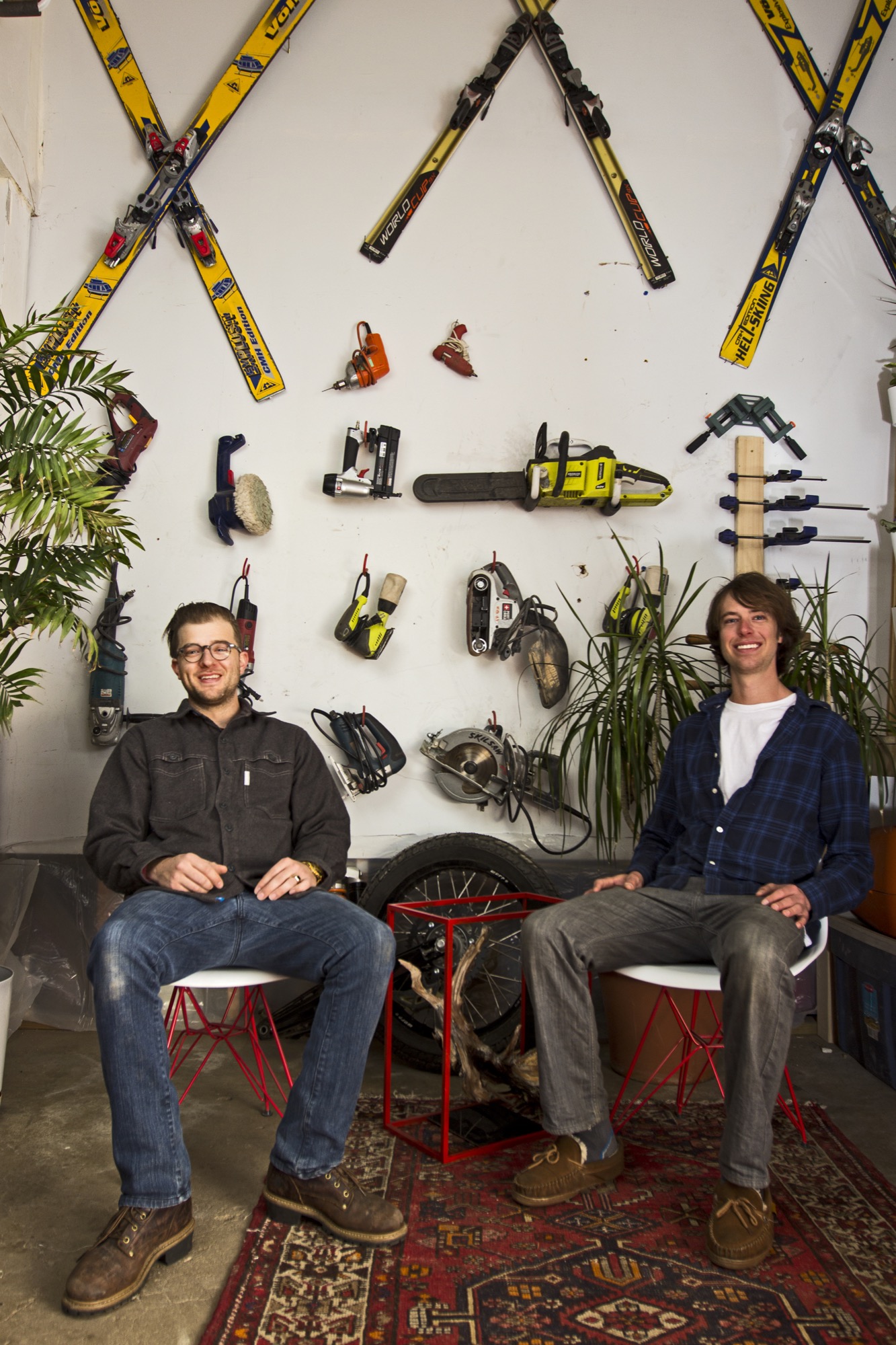
The two men, both quiet and reflective, share an ardent love for design and the mountains. Yet, they come together at MTN Lab—at the intersection of art and adventure—from opposite directions: Hine a trained designer and woodworker, Unrau a former professional mountain biker turned woodsman fighting wildfires for the Forest Service.
Harris Hine
Harris Hine grew up profoundly influenced by his father, Vienna-born modernist architect Harvey Hine, who founded HMH Architecture + Interiors in Boulder.
“I’ve always been torn between the design side of my personality and just wanting to be in the woods,” Hine shares. He went to school for design at Pratt Institute in Brooklyn before moving from New York City to Portland, Oregon, where he worked as industrial designer. “I didn’t find any fulfillment doing other people’s projects, and I didn’t really like the mass production side of product design,” he admits.
All those years, Hine pined for the woods, where his old friend was.
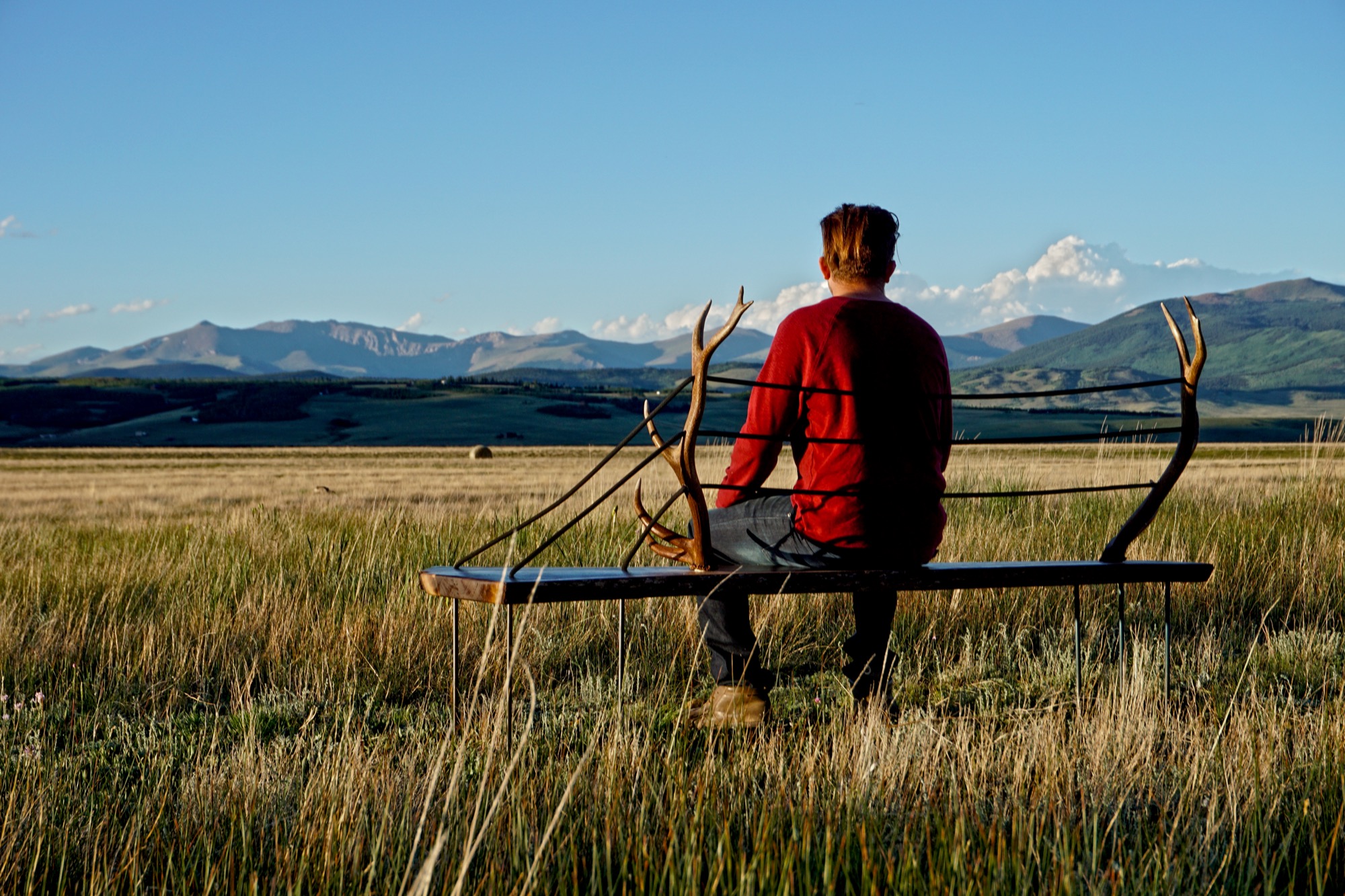
Rudy Unrau
Unrau, while attending college in Western Colorado, signed on with the United States Forest Service. “I was on track to becoming a smoke jumper, working for a helicopter crew down in Durango,” the long and lanky woodworker recounts. “It was a great setup because you work a ton in the summer, and then you get winter free to do whatever you want, like ski and move to Canada.”
Throughout those years, Unrau had been harboring the desire to return to making art. “Seeing the things you see when you get to fly around and travel the US and go to all of the mountain ranges... I had ideas emerge to work with the trees that had been burnt or partially burnt in fires because they get so twisted and cool.”
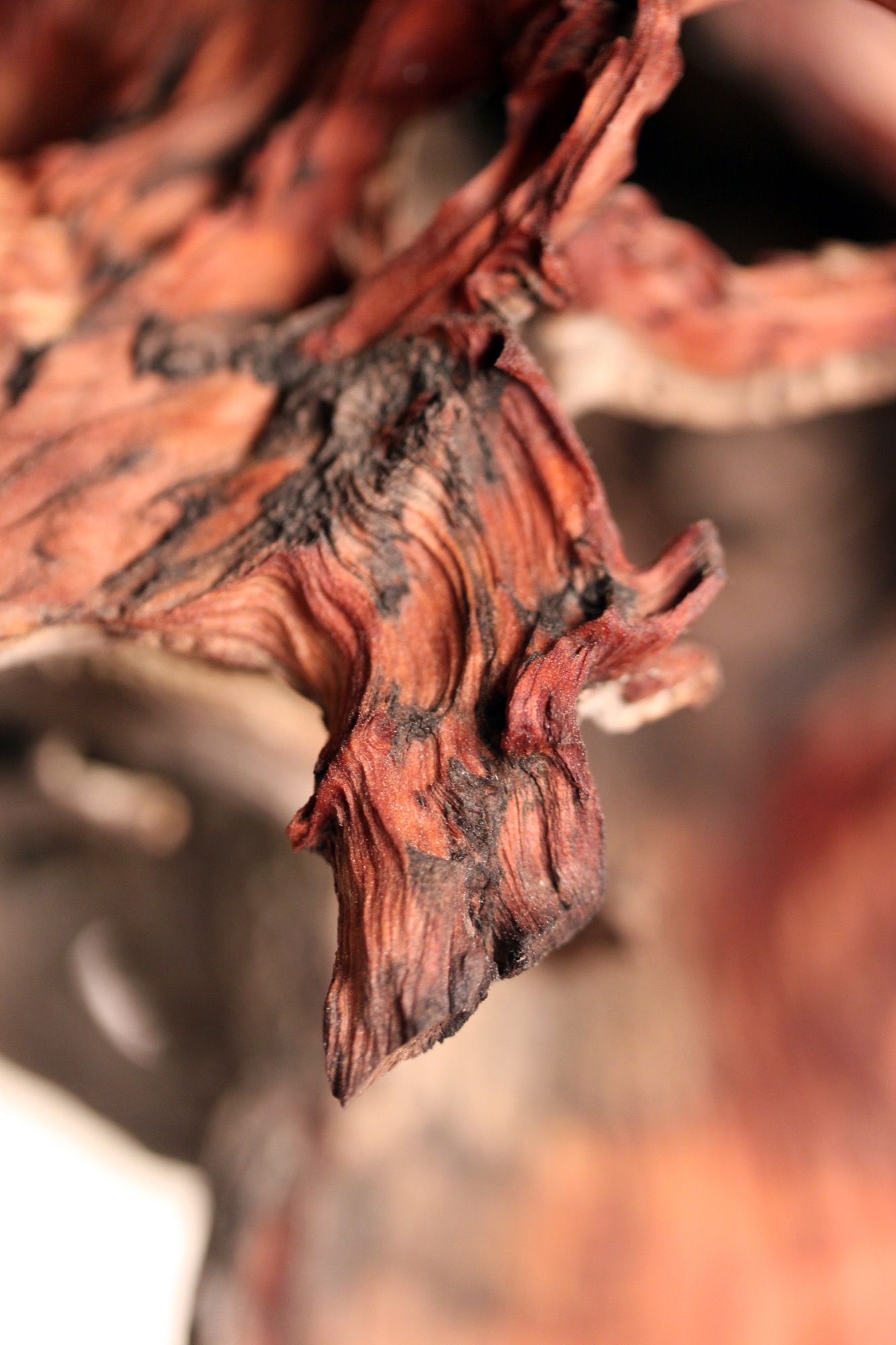
"I had ideas emerge to work with the trees that had been burnt or partially burnt in fires because they get so twisted and cool.”
Joint adventure up north
At last, one pivotal winter Hine and Unrau moved to British Columbia together to ski. Their close friendship and mutual influence would impact each man’s path. “Rudy was all in the woods,” Hine remembers, “Living together pulled him back into the design world and brought me back into the woods.”
Unrau agrees: “I’ve always been at home in the woods. Growing up, I really wanted to pursue mountain biking, so I raced mountain bikes professionally for quite a few years.” After the athlete got “a little bit tired” of mountain bike racing in world cups, he focused on skiing.
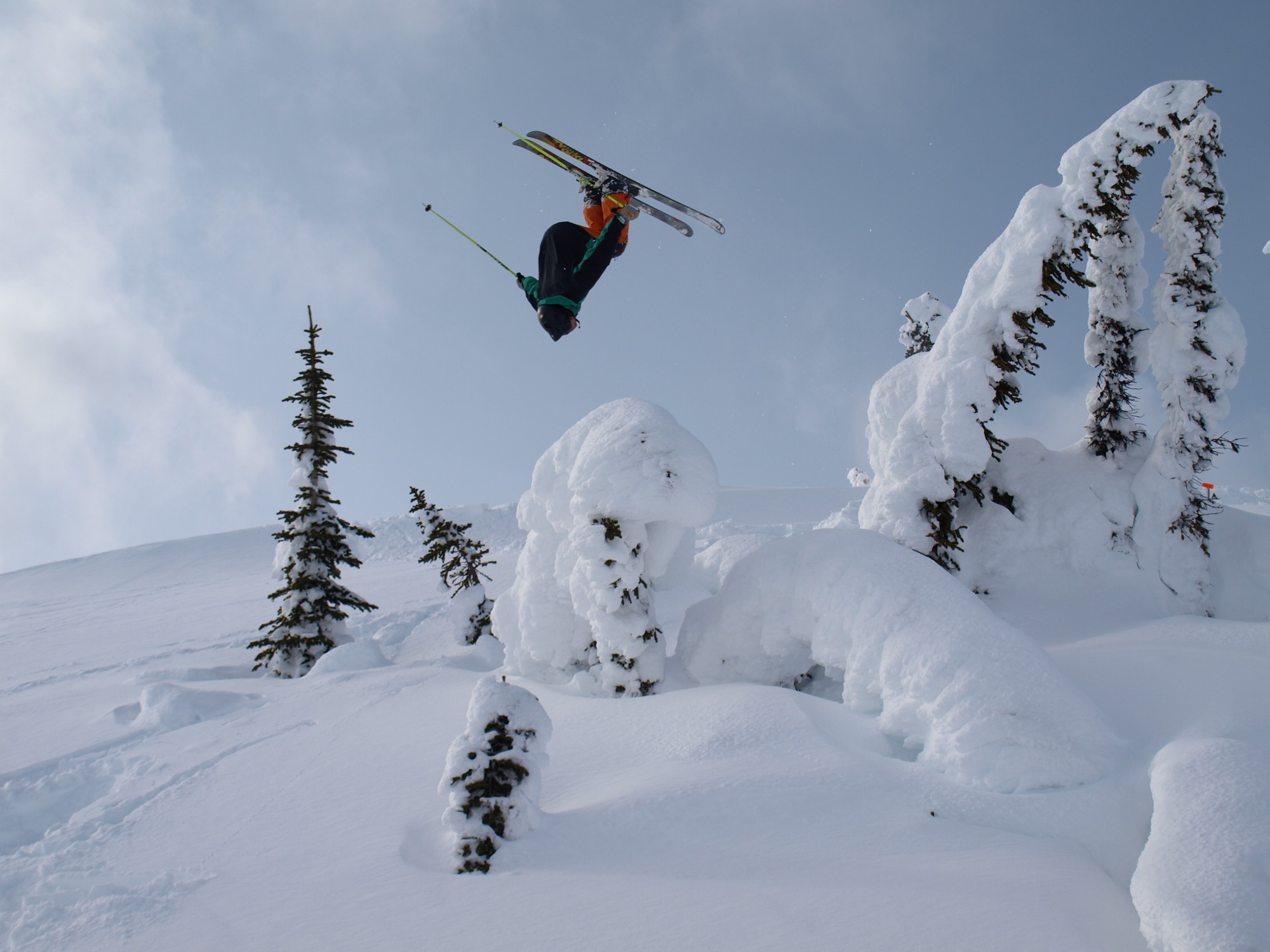
Skiing in Canada was good fun. Winter gone, however, Unrau planned to work another fire season. The outdoorsman envisioned himself carrying on that seasonal rhythm of demanding service and wild adventures in the snow for years until he had and his friend had their fill of youth and independence. “And... I crashed paragliding,” he tells, falling solemn all of a sudden. “I broke my back and almost died and spent half a year recovering.”
His loyal friend by his side, Unrau needed to reevaluate his future. “I realized, I wouldn’t be able to do fire again,” he says. “And then it was pretty natural the way MTN Lab came together—us getting our shop set up to where we could build.”
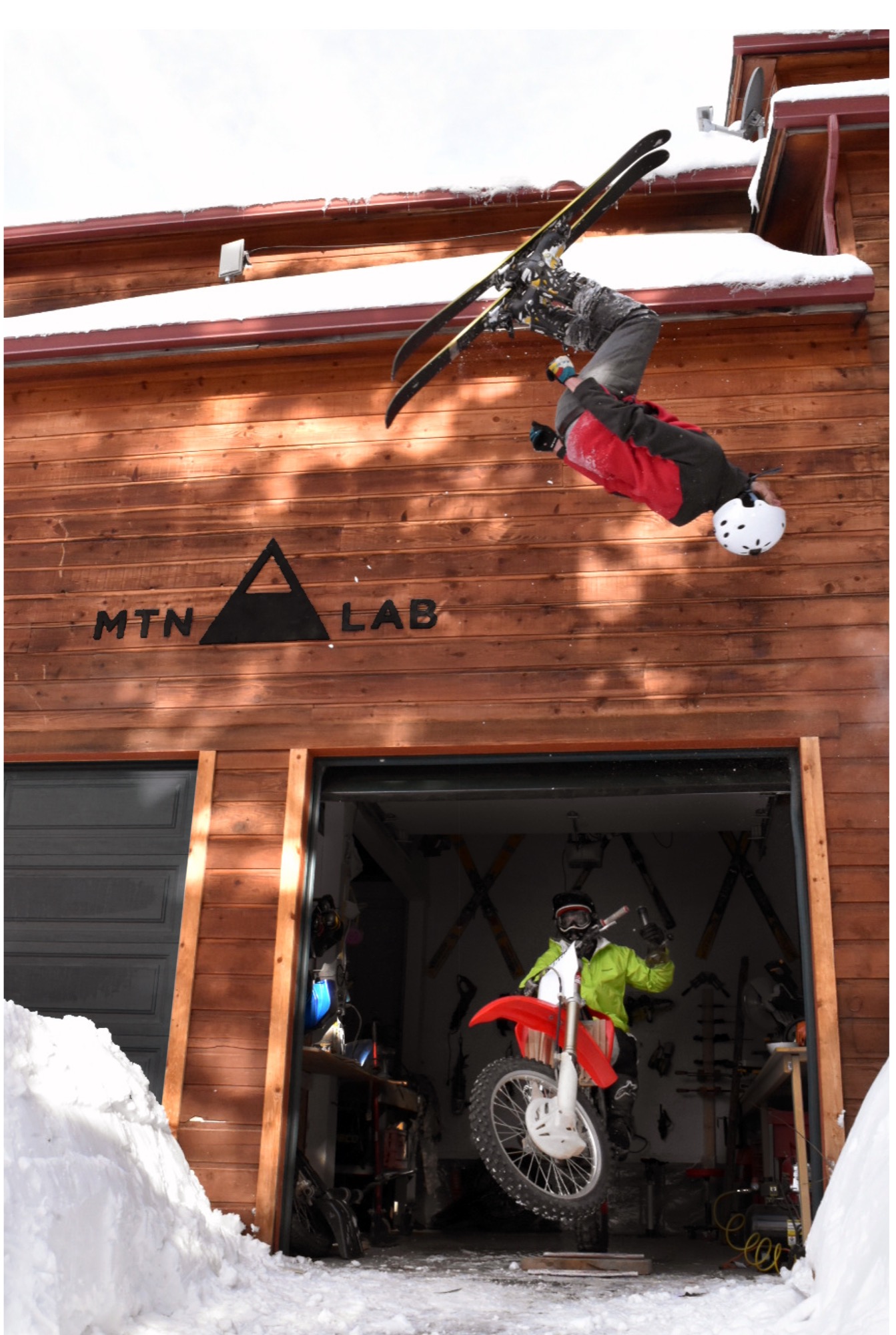
The MTN Lab process
Starting with sculptures, the duo soon began venturing into furniture. Their vision is to grow the Conifer studio into an art collective, with more creatives joining them. They are even planning to build a tiny house to accommodate visiting artists and designers.
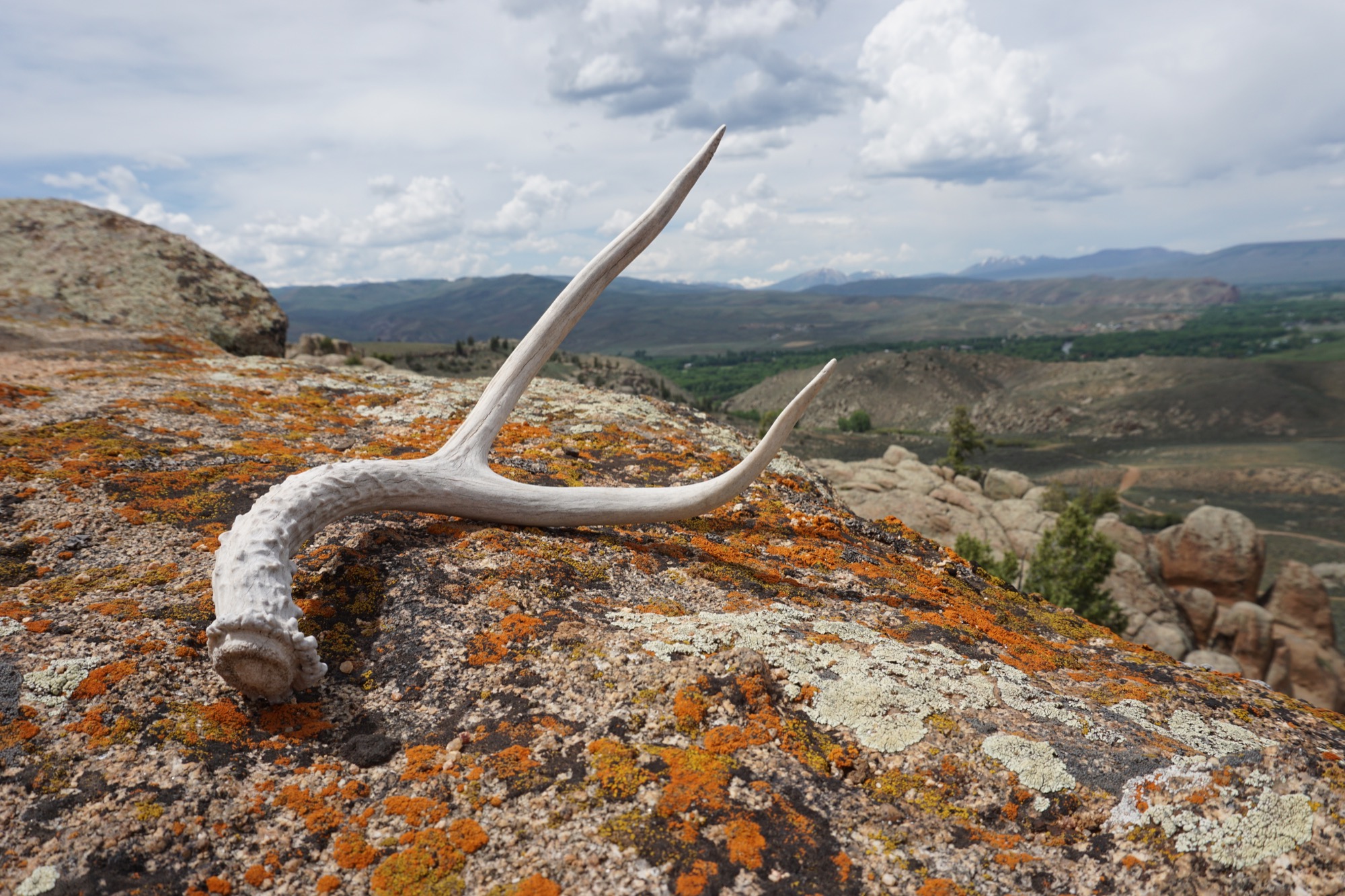
MTN Lab is as much a concept as it is a company. “Our process is the most indicative of what we make,” Hine explains. The founders source all of their materials themselves in the Colorado mountains. “We quarry our own stones to carve and collect our own wood.” Like it was for generations of makers in the mountains before them, MTN Lab’s workflow follows nature’s rhythmic swing. “Right now it’s the season for us to go get river stones because the flow just came down,” Hine tells me, when I sit down with him and his partner on that warm day in early September. “And we are doing antler stuff because we found a bunch of Elk sheds. That’s this flow that we follow.” Adds Unrau: “Our company is trying to do the whole process from sourcing, getting our materials, designing it, building it ourselves, photographing it ourselves.”
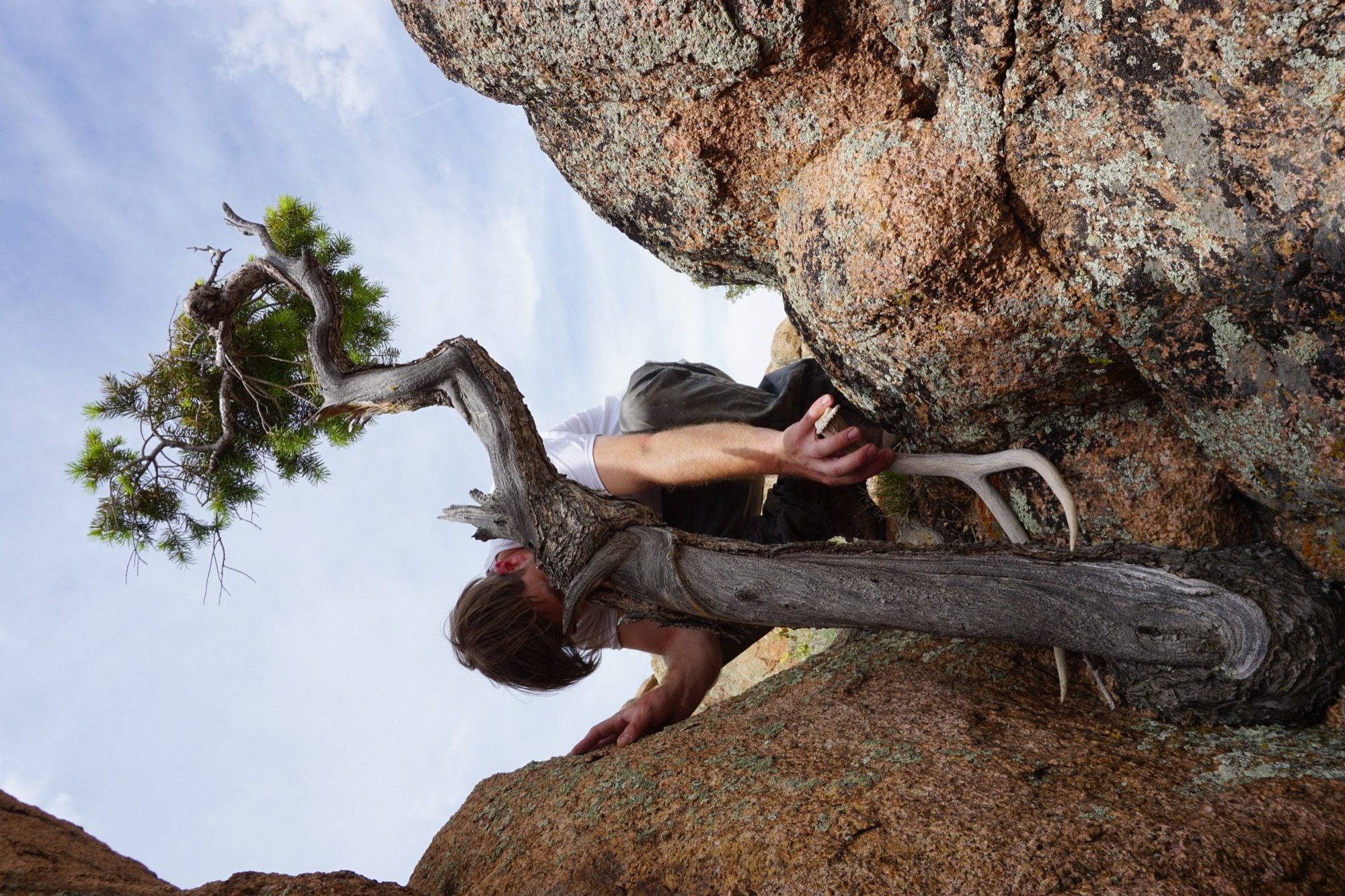
The friend believes having grown up in the mountains is what motivates them to see the entire process through, from beginning to end. “Spending all of your free time in the backcountry—you’re just so inspired by what you’re surrounded by,” Unrau says. “Initially, we were out there to ski, climbing to ski. We were dirt-biking. But when you spend that much time out there, it altered our perception of why we were there. And now it’s awesome because we get to ski, but that’s not the whole part of the process. The ski is the vessel for finding the materials—as well as the inspiration.”
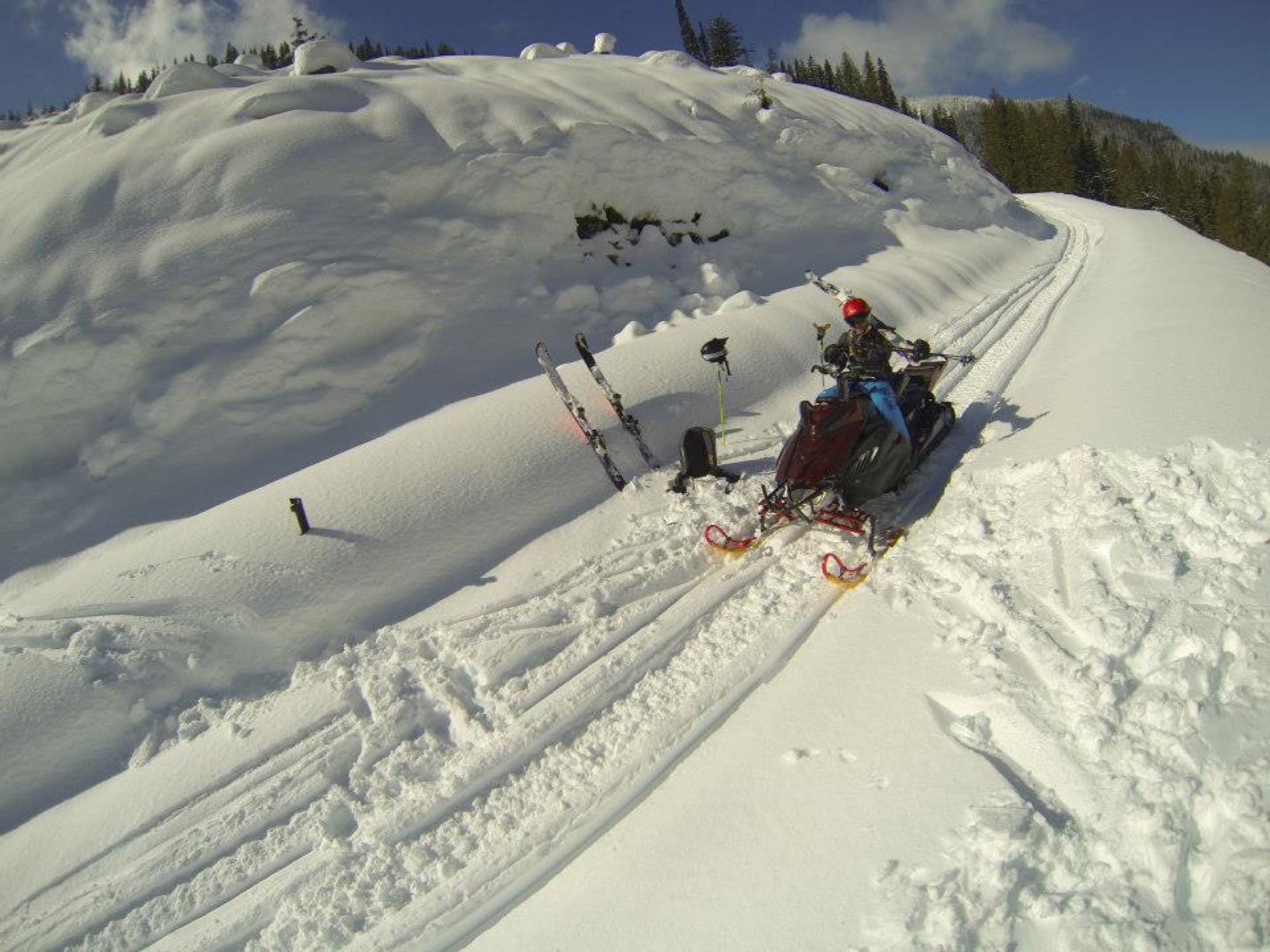
“The ski is the vessel for finding the materials—as well as the inspiration.”
Connecting nature and art
“I’ve always liked minimalist design, and I rarely see that done with natural materials,” Hine says. “You look at Bauhaus stuff, and it’s very industrialized. My dad being the modernist he is, half of me is always striving for that simplicity. But then there is the other part of me... the Colorado guy. And I see these cool pieces of wood and antlers and it naturally merged. In college, I was more on the industrial, clean-cut metal side of things, and my style has evolved more and more into a hybrid of rustic and modern.”
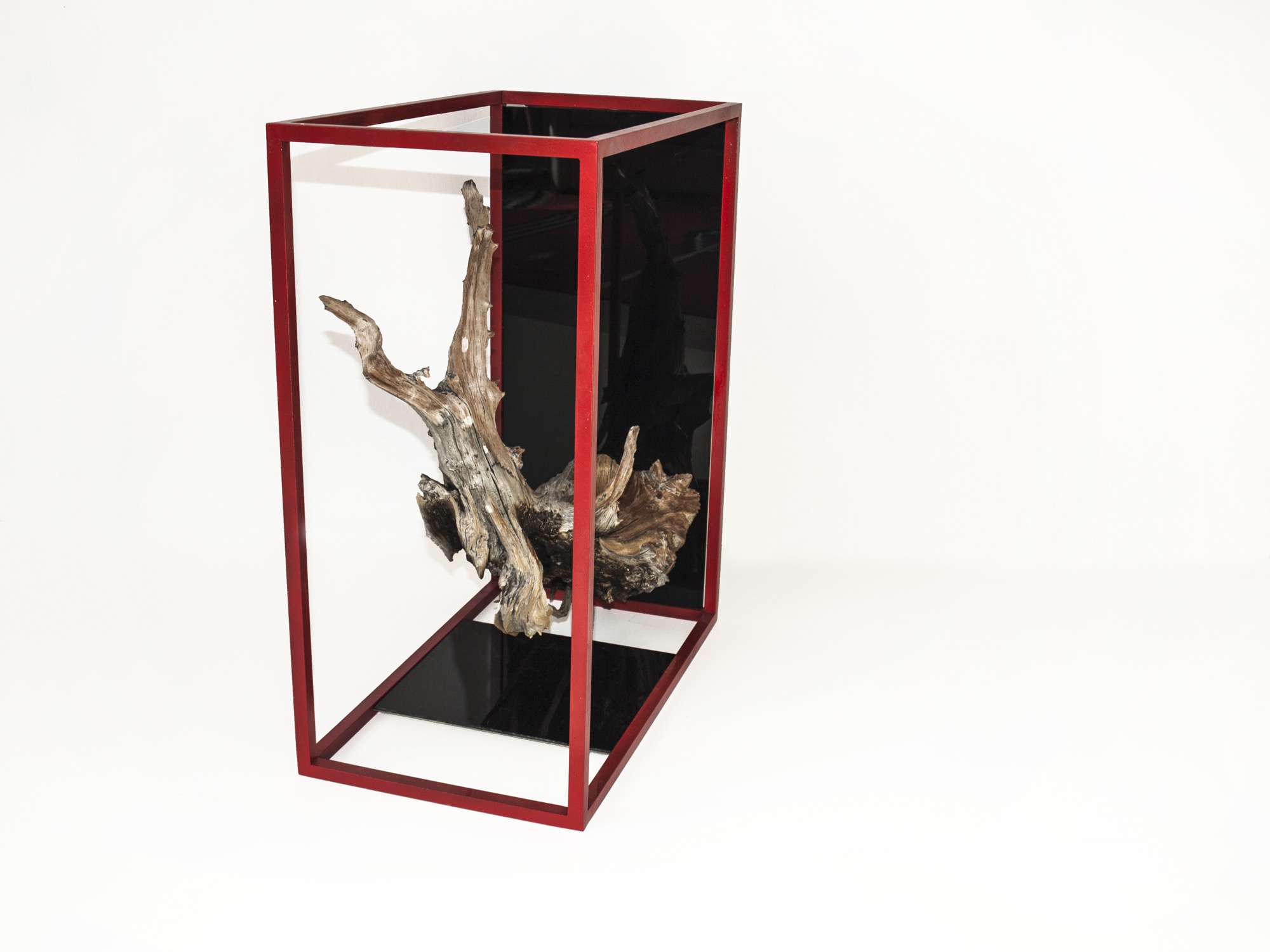
Unrau, for his part, never earned an art or design degree, nor does the lack of academic study in the field limit him in his current work. “We really do our designing when we’re out in the woods. We don’t sit down in an office to draw. We see the material, and the material almost dictates its design.”
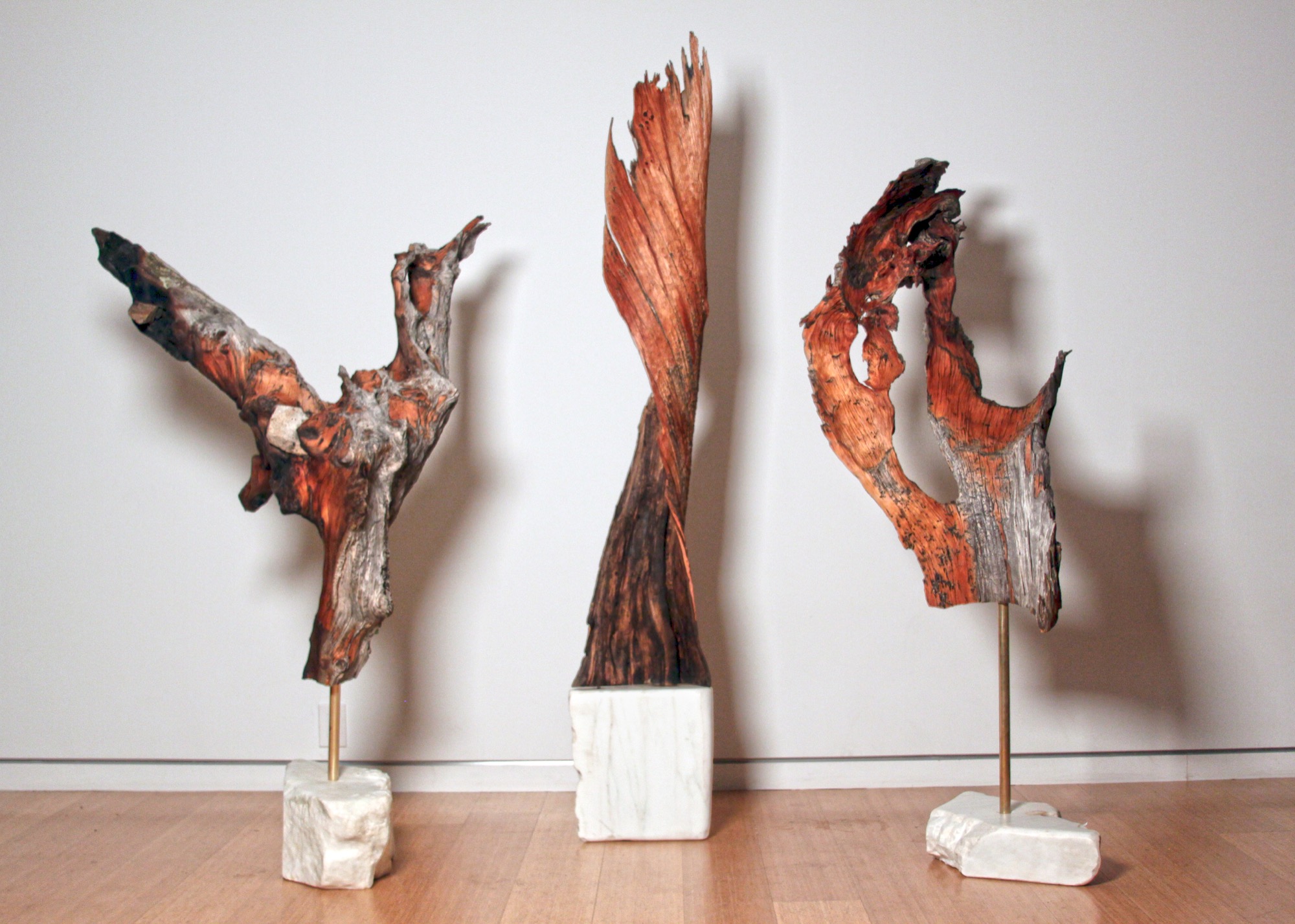
They usually know right away, if a piece of wood they come upon in the forest will transform into an art sculpture, a table, or something else entirely. Back at the studio, they combine found pieces of wood or elk shed with marble and often with contrasting metal. The final artwork or furniture piece comes together like a collage. While the sculptures are never drawn out, the furniture generally is. “We design our table bases, draw them by hand. Sometimes, we bring it into CAD.”
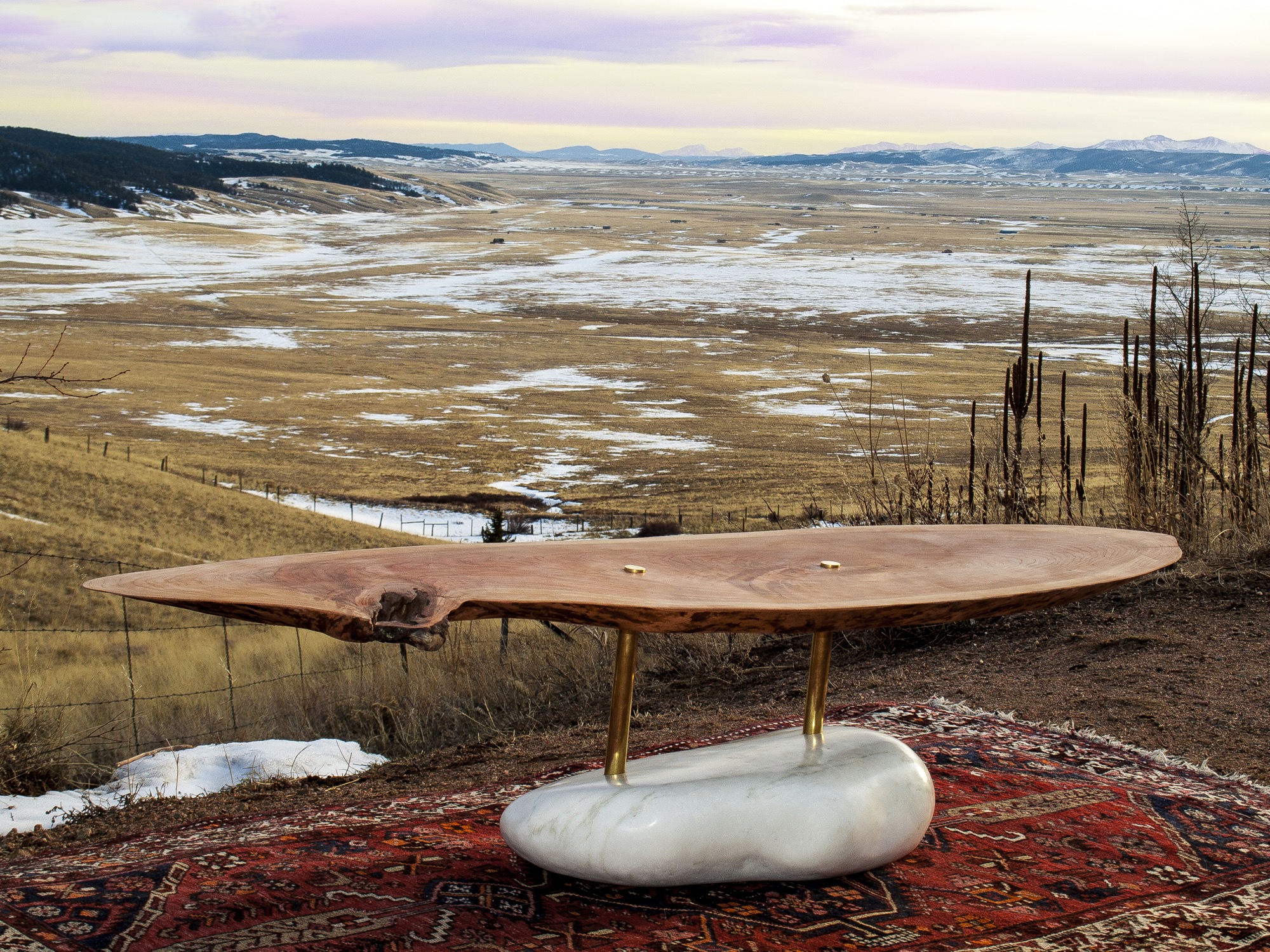
The day I met up with Unrau and Hine, they had come down from their studio above 8000 feet to deliver a piece of art they made for the Boulder Museum of Contemporary Art. “We had this mobile,” Hine begins, chuckling, “And then Rudy dropped it on the staircase, and we were like ‘Oh, no, we’re so crushed. And we had to quickly build it a second time yesterday, and it came out eight times better than the first. That process isn’t always easy to rely on, but sometimes when you make it again, it’s better. This is how we continuously design.”
Speaking about the synergy between Colorado’s magnificent nature, rich history and tradition, and progressive modern art, Hine notes that he is profoundly influenced by the stone carvings of American artist and landscape architect Isamu Noguchi. “It’s that blend of leaving these big natural boulders and polishing one face of it.”
Rustic designs with wood and stone are ubiquitous. “But it’s hard to find someone who has done them simple enough so that these materials individually speak for themselves,” hine says. “Antler furniture is really something we have been experimenting with, because it’s hard to find a simple antler-anything. All the chandeliers are the same hunter antler cluster. And all of a sudden, you are appreciating the simplicity of the singular antler as a sculptural element. That’s what makes it alpine modern, and not just alpine.”
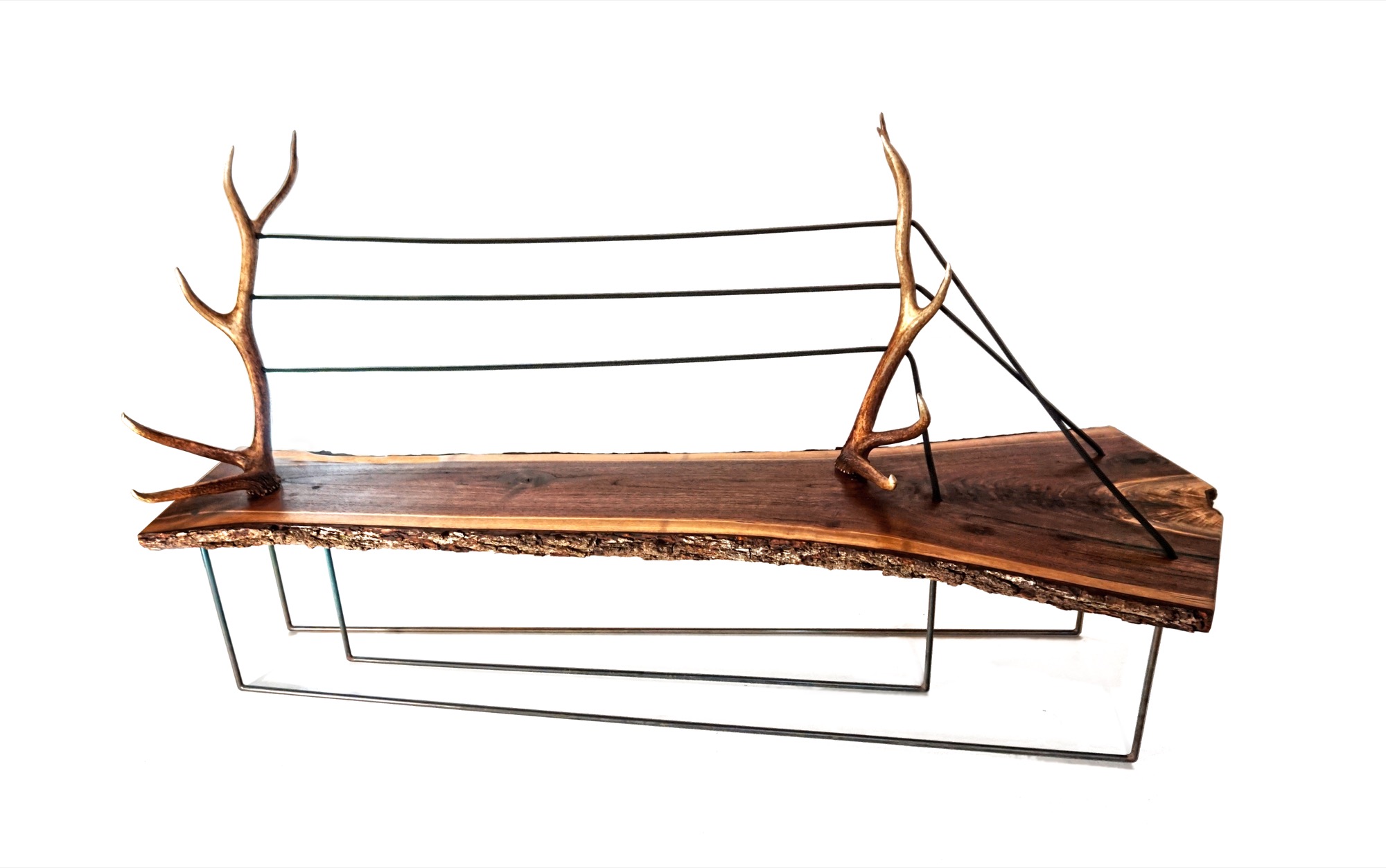
“And all of a sudden, you are appreciating the simplicity of the singular antler as a sculptural element. That’s what makes it alpine modern, and not just alpine.”
A modernists at heart, Hine still looks to the arts and crafts movement for inspiration. “Not stylistically but the whole concept of it is huge, especially since my education is in mass production and industrial design and product development. And going back to actually hand-building one-off pieces from the found materials we use, you can’t really build the same piece twice. It’s almost like we’re in an arts and crafts revival, which is weird for me because that’s the antithesis of the Bauhaus influence, of going from craft to industrial production.”
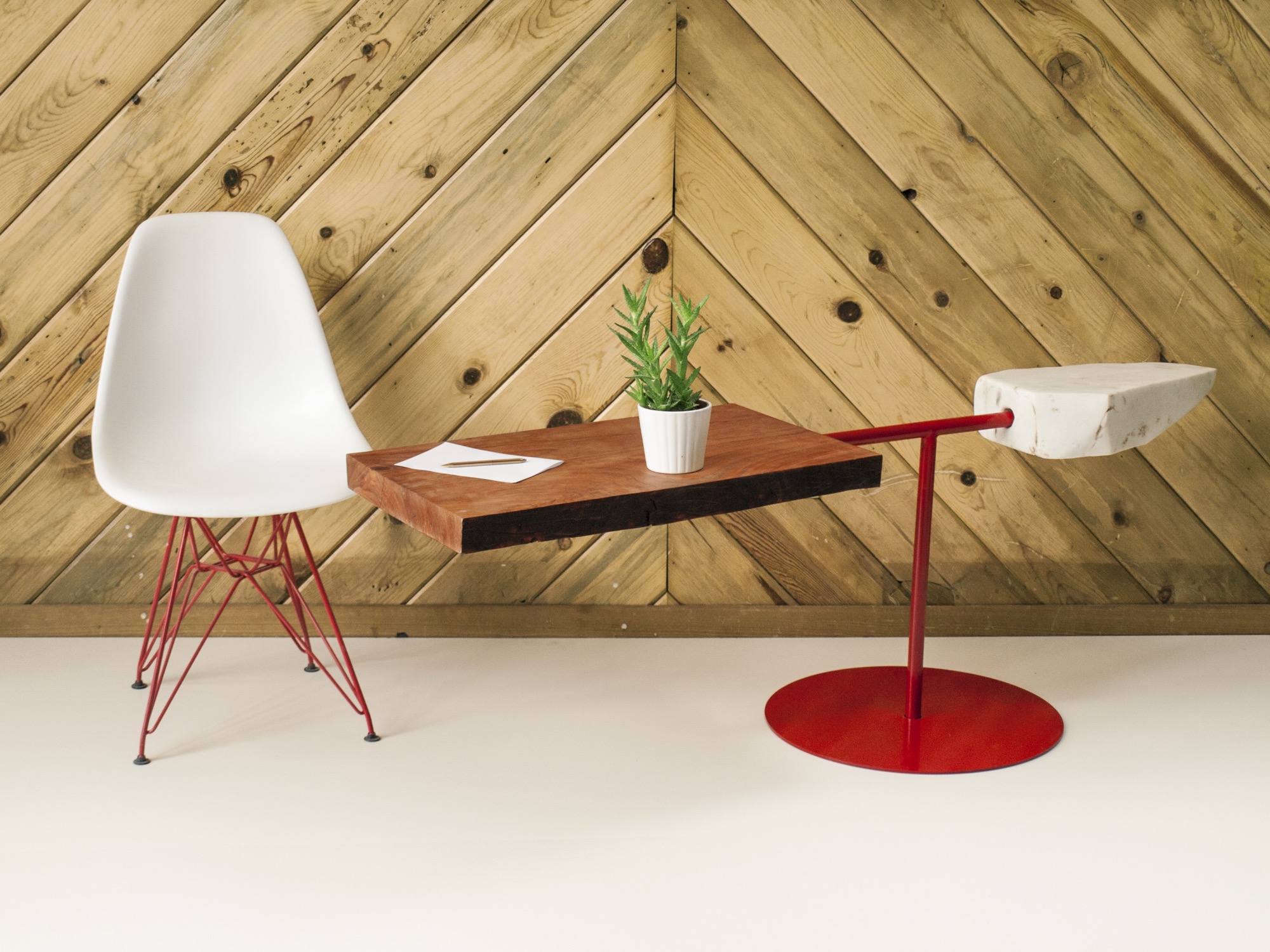
Our conversation later on reveals that the two 27 year olds are somewhat of an antithesis, too—to their fellow millennials. The Internet, they admit tittering, is their shortcoming. “Neither of us really enjoys social media, self promotion, or even doing the sales part,” Hine says. “It’s the cliché artist who doesn’t sell his stuff. We just are either in the woods or in the shop. It never feels like were working.”
MTN Lab projects
Each MTN Lab piece embodies a story of adventure and friendship.

For example, Unrau says seventy years ago, many trees were cut down to make room for high-voltage lines to Fairplay, south of Breckenridge, Colorado. “The company just left them, so these big old-growth rounds have been drying up there all these years,” he says. MTN Lab milled the pine rounds into table tops. “That’s our next big design push, designing bases for those tables,” he says. “Or the motorcycle, which is a lifelong dream we’ve shared since we were little kids.”
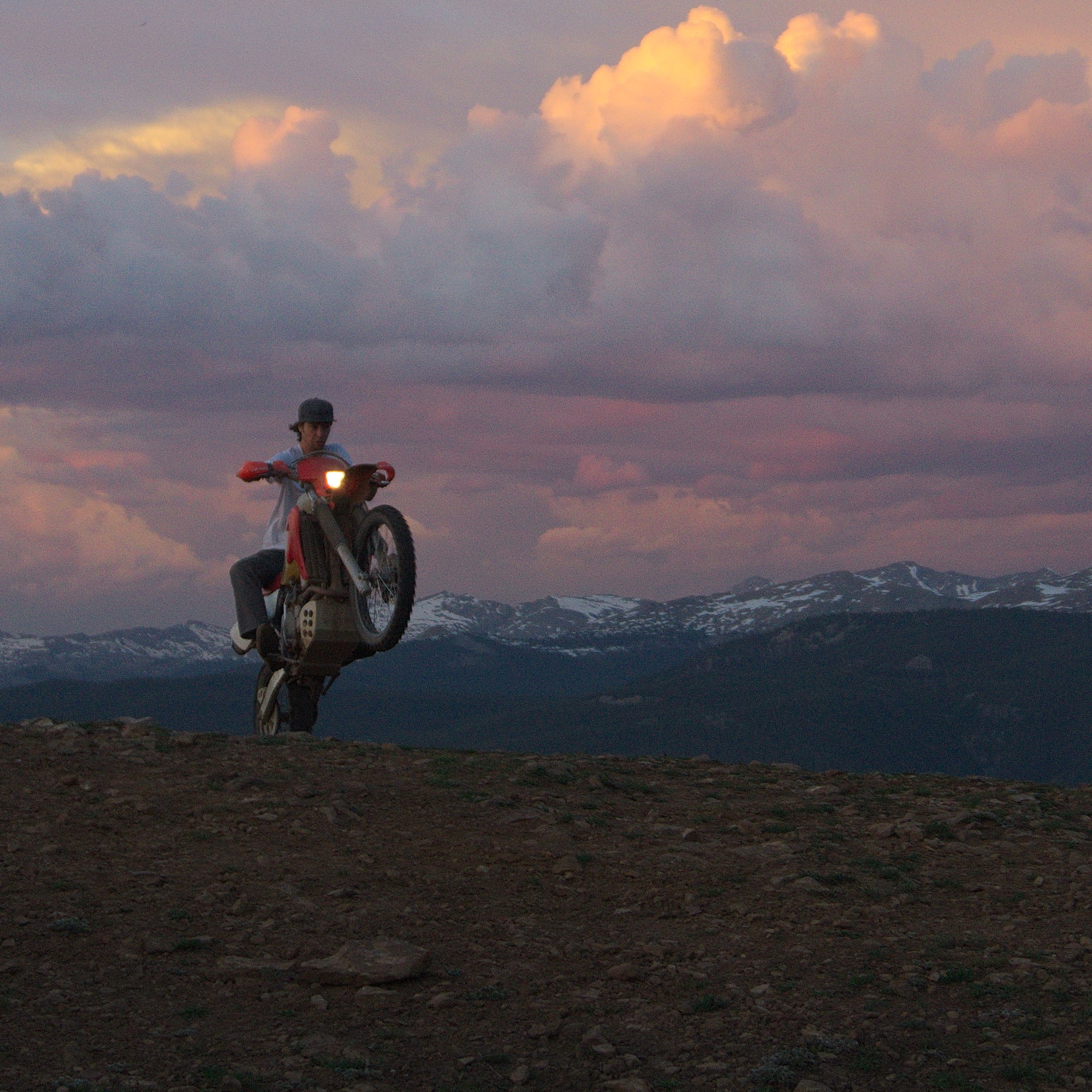
Indeed, Hine and Unrau want to build a motorcycle entirely from scratch, the back end made hand-carved in wood. Before winter, they even want to experiment with producing their our own steel, from mining the rock to crushing and melting it. Whether the resulting material will in fact be usable won’t matter as much: “At least we will be able to appreciate the process when we go to the store and buy steel.”
“The motorcycle is going to be very much like our furniture and our sculptures,” Unrau says. “I would describe it as an art bike. It’s going to be functional. It’s going to ride very well, but it’s not going to look like a conventional motorcycle. I don’t know if we’re going to be willing to sell it.” The business partners are also debating whether they will ever have the heart to sell the 1960s Airstream that once belonged to Unrau’s grandfather and they just finished restoring. “I never want to sell any of our stuff,” Unrau admits, laughing. “It’s hopeless.” △
Airstream Dreams at AutoCamp Russian River
Wes Anderson meets the W Hotel at AutoCamp Russian River, where guests sleep in custom Airstream trailers and lounge at the midcentury-modern clubhouse
Nestled in the Russian River Valley, AutoCamp’s custom Airstream trailers and midcentury pavilion provide a boutique camping experience.
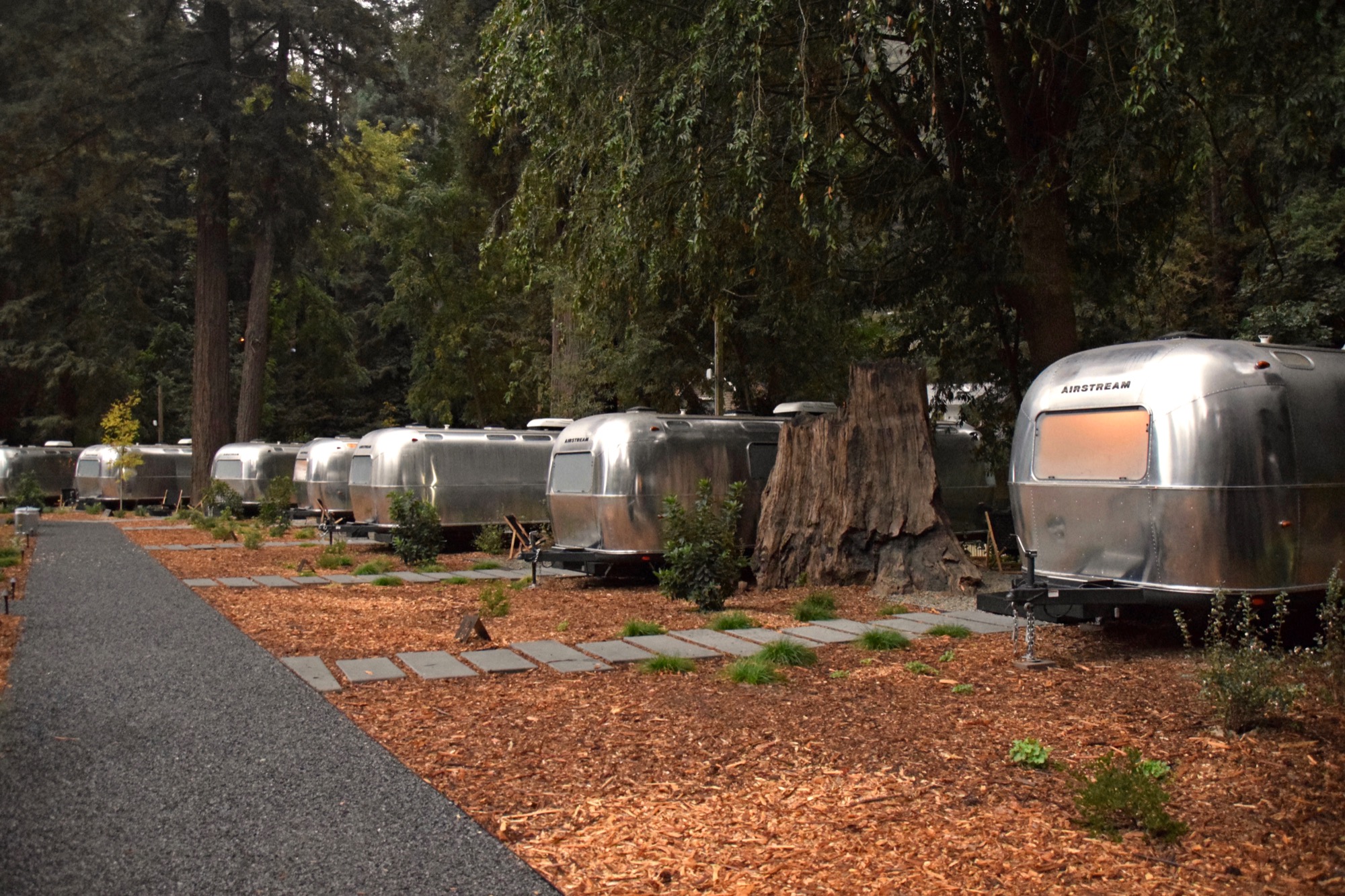
First established as a logging community in the late 1800s, the town of Guerneville, California, has grown to become an artist enclave, queer haven, and tourist destination. Seated in Sonoma County, Guerneville benefits from its proximity to wineries, redwood forests, beaches, and the bucolic Russian River, which winds along the 101. It has also been riding a new wave of revitalizations, most recently manifest in the opening of AutoCamp’s second location at the end of the town’s main strip. A cross between boutique hotel and campsite, AutoCamp Russian River is known for its Airstream accommodations, artfully furnished tents, and midcentury modern Clubhouse.
Over at Dwell.com, we had written about the Clubhouse before its opening and were eager to see the "glampsite" for ourselves, so we packed our bags for a weekend trip. What we discovered there is equal parts design and adventure. Whatever the category of trip—family outing, Airstream appreciation, or corporate retreat—AutoCamp allows you to “rough it” in style.
"A cross between boutique hotel and campsite, AutoCamp Russian River is known for its Airstream accommodations, artfully furnished tents, and midcentury modern Clubhouse."
The heart of the community
Turning off Old Cazadero Road into the parking lot of AutoCamp, we were greeted by the Clubhouse, a modernist structure designed by ANACAPA. It provides a sense of arrival and sets the tone for the experience. It also stands as metaphor for the continued renewal of Guerneville, since it sits on the very site of the clubhouse belonging to Spooner’s Resort, an ill-managed, unsavory RV park that was previously on the property.
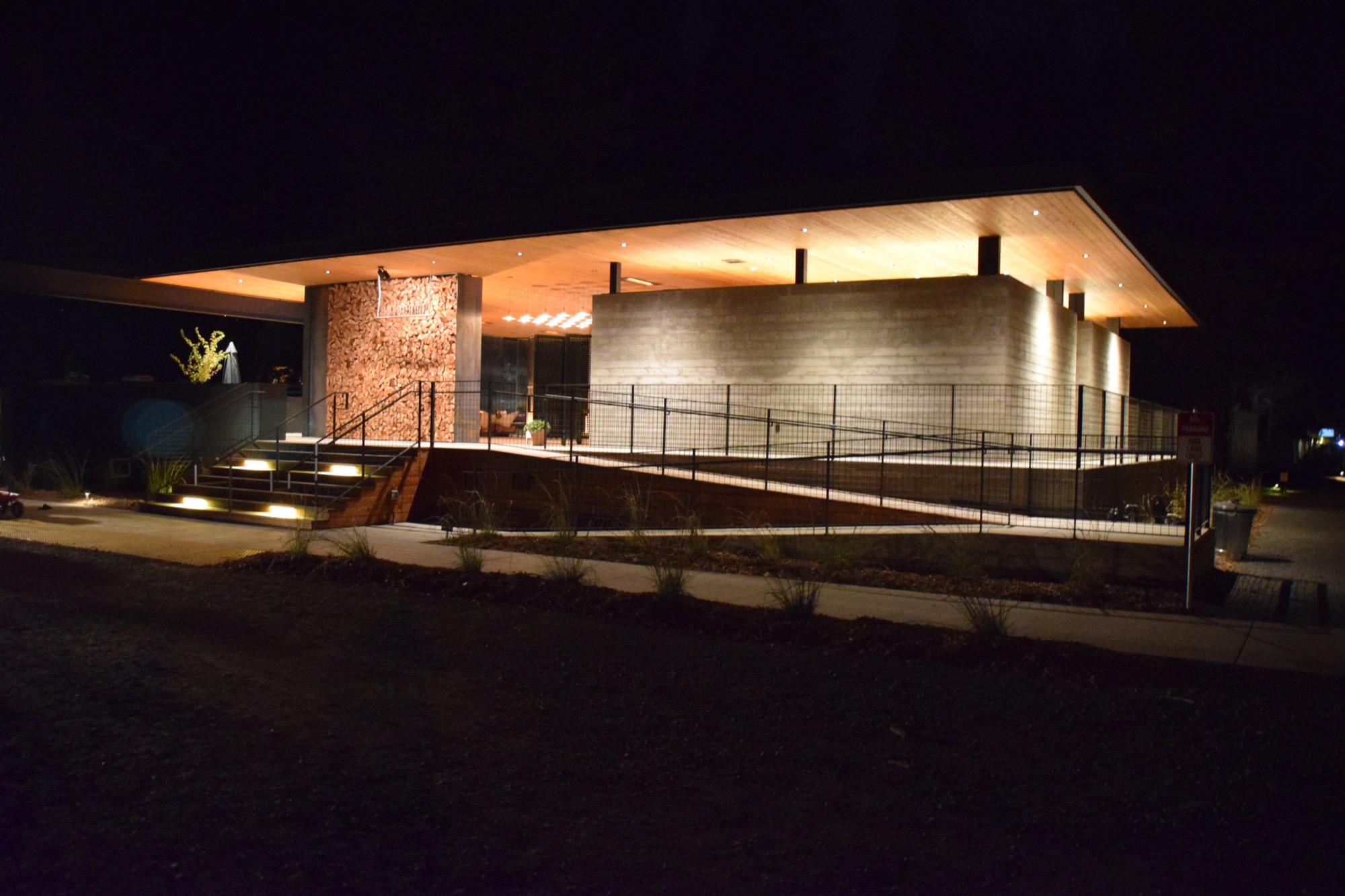
For the 3,000-square-foot structure, Dan Weber drew inspiration from midcentury masterpieces like the Barcelona Pavilion by Mies van der Rohe and the Kauffman House by Richard Neutra. The pronounced horizontal planes of the Clubhouse are a launchpad for the soaring verticality of the surrounding forest. Its robust material palette of board-formed concrete, locally harvested redwood, and blackened steel not only speaks to the natural setting, but also acts as safeguard against the periodic flooding that occurs in the area.
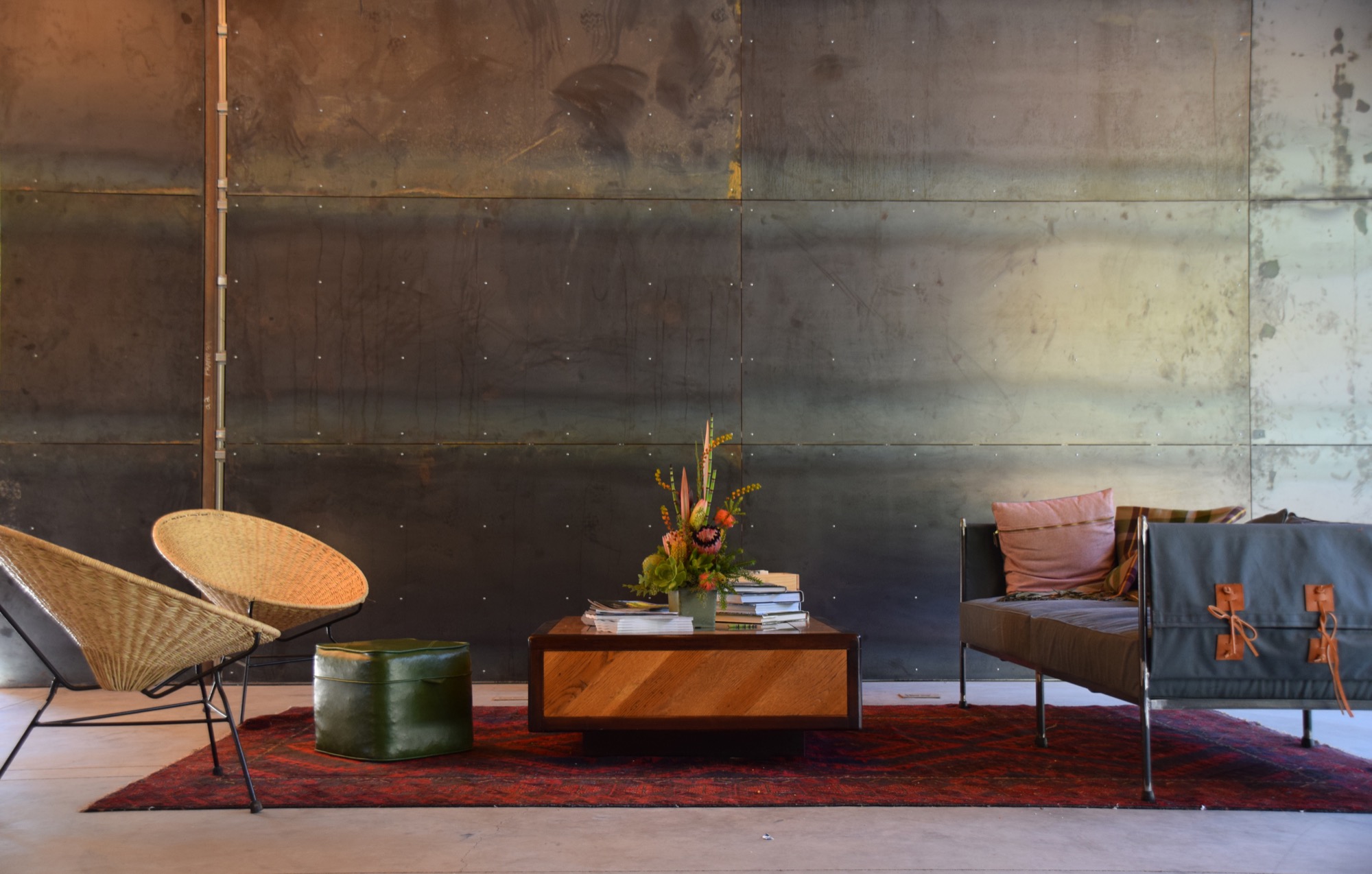
The Clubhouse evoked a persistent sense of homecoming as we jetted to and from camp. For guests, it is the reception area and rallying point: a hanging fireplace and custom-designed furniture by Alexis Moran invite you into their halo of warmth; on the north side, an outdoor fire pit offers views of the meadow and the glinting Airstreams that encircle it. There’s a lounge section stocked with books and magazines, an ideal spot for enjoying a cup of joe from the coffee bar—and for those staying in canvas tents, the Clubhouse provides luxurious bathrooms and showers. With so much traffic, the Clubhouse is the true heart of the community, a place to decompress, play a game of dominoes, and meet and swap stories with fellow travelers.
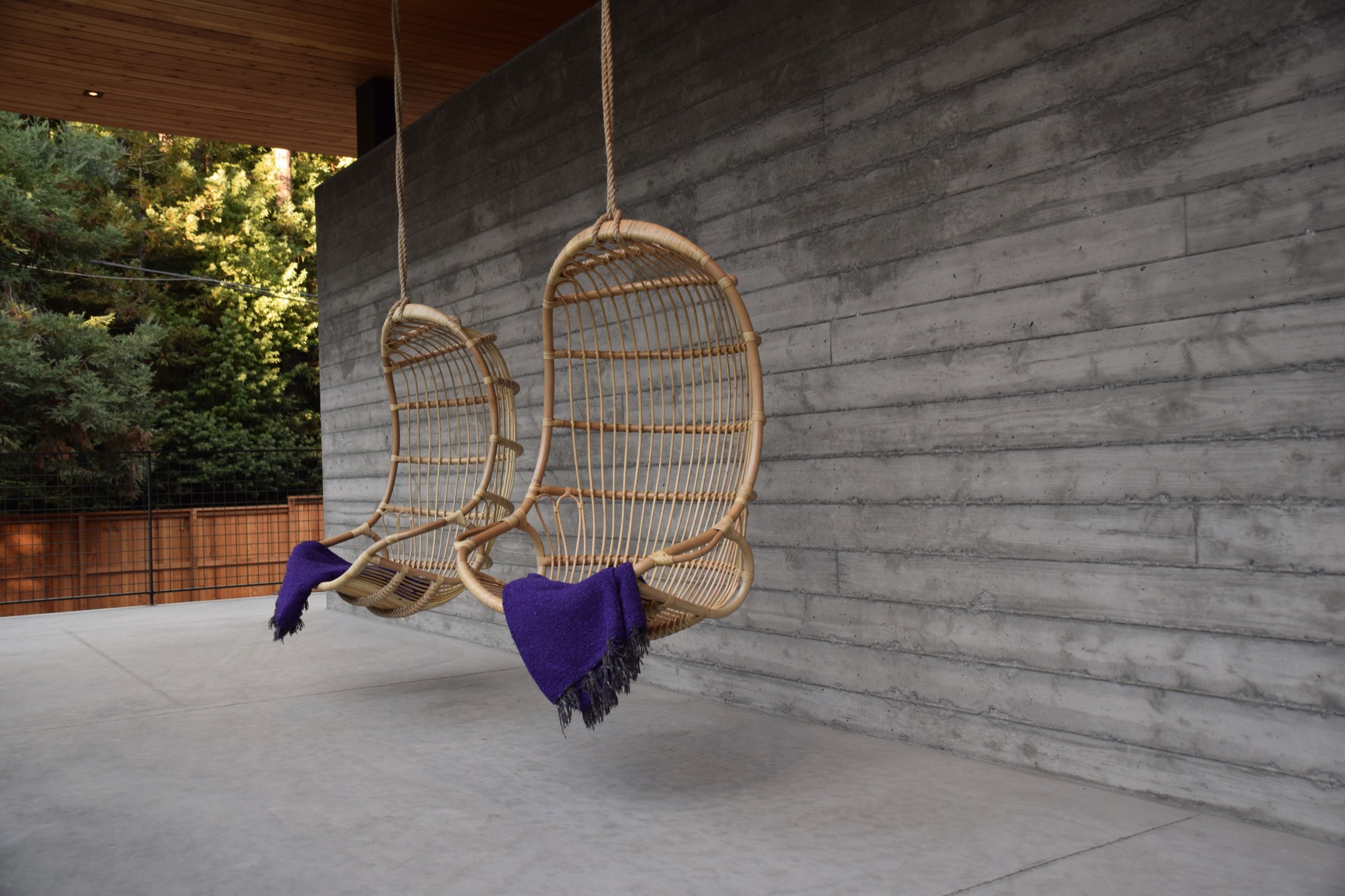
Ryan Miller, co-founder of AutoCamp, is excited about putting down roots in Guerneville. Originally from southern California and now a Bay Area resident, Miller had been driving up the coast on a road trip when he came across the town. Immediately, he knew it was something special. “It’s the tightest community,” he said. “You get the sense that something is peaking.”
The AutoCamp experience is always evolving, and there’s room for the community presence to grow even stronger. Future programming like yoga classes, ecology talks, movie screenings, kids’ activities, and maker workshops will revolve around the Clubhouse. Already, it has hosted a pop-up event with local entrepreneur and restaurateur Crista Luedtke—whom many credit for Guerneville’s transformation—serving dinner, and Phoebe Dahl of ethical clothing line Faircloth Supply Co taking over the Canteen, the Clubhouse’s general store.
Setting Up Camp
By day, the 23 Airstreams on the grounds have a striking effect, their silver bodies giving off a pearlescent glow; by night, their windows gleam in the darkness. Whether you’ve been a longtime fan of this American icon or just discovering the classic camper, staying in a custom-designed Airstream is a rare experience. Thanks to the vision of architect Dan Weber and interior designer Lauren Geremia, the accommodations strike a balance between rustic and modern, emphasizing comfort without losing their connection to the outdoor setting.
“She had a good feel for the culture,” said Miller of Geremia. “It was cool to work with someone who could facilitate so many creatives coming together.” From sourcing artwork to recruiting furniture makers like the aforementioned Moran, Geremia helped realize the warm, folksy vibe that pervades AutoCamp. We were taken with every detail: pendant lights by Schoolhouse Electric hang on either side of an indulgent Casper mattress, and vintage Observer’s books provide a bit of bedside reading. The homespun touches complement luxe elements like the marble tiles lining the bathroom and the crisp walnut cabinetry.
"Whether you’ve been a longtime fan of this American icon or just discovering the classic camper, staying in a custom-designed Airstream is a rare experience."
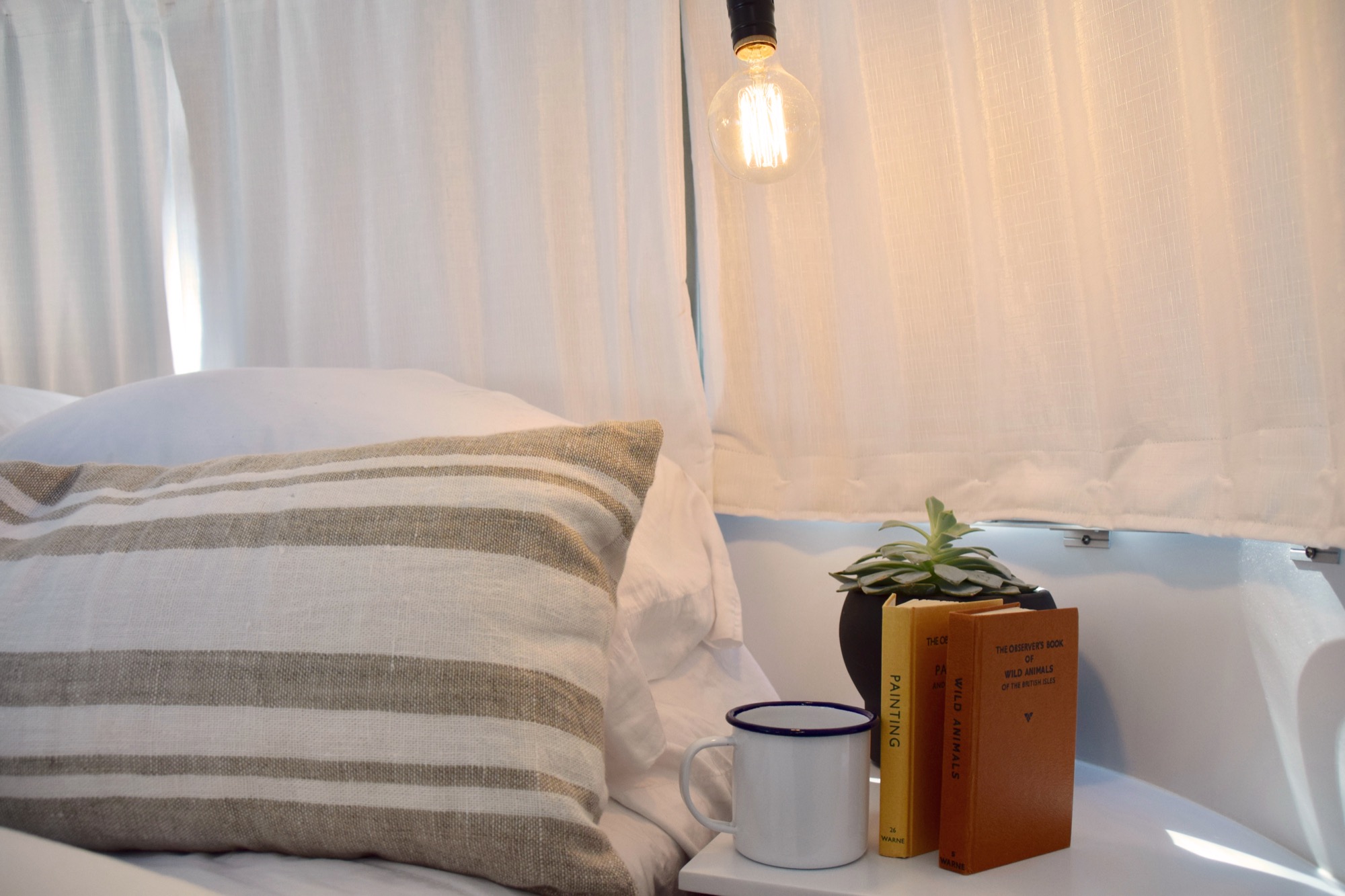
For those who prefer to hibernate at home base—or just want to relax after a day of traipsing through the woods—the Airstream is equipped with a wall-mounted flat screen TV and a Bluetooth sound system. A thoughtfully stocked kitchen and a private deck area allow you to brew coffee or fry eggs and bacon in the morning. And no campsite would be complete without a fire pit, the perfect stage for roasting s’mores (psst—if you forgot to grab marshmallows at the store, the Canteen stocks grab-and-go S’mores Kits).
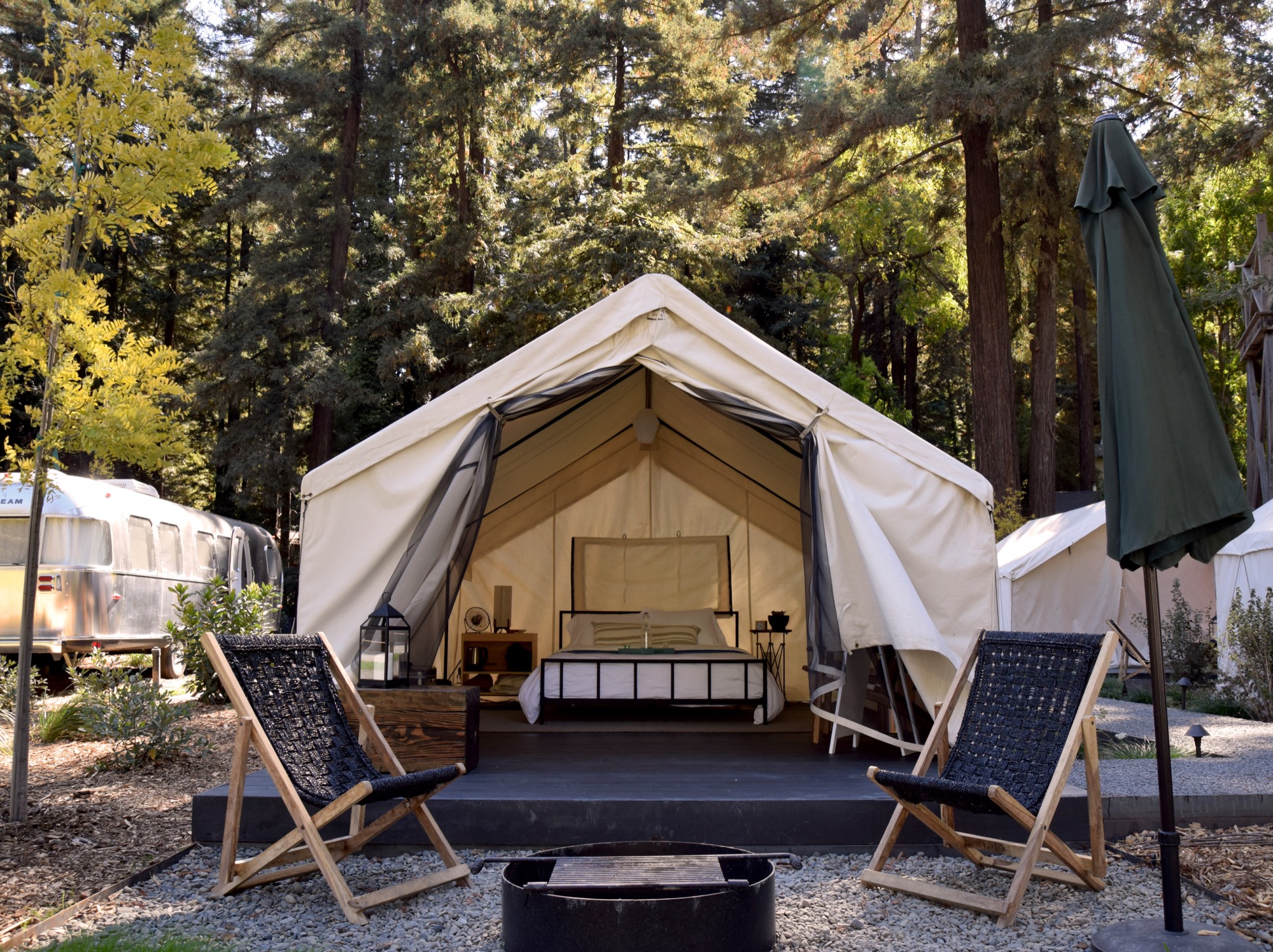
The 10 canvas tents on site, made by Wyoming-based Sheridan Tent & Awning, harken back to Guerneville’s heritage as a logging town. Geremia’s stylings—think Wes Anderson meets the W Hotel—create a cozy-chic atmosphere that caters to families, friends, and romantic couples alike. AutoCamp originally had a funky, vintage style, but over time, says Miller, “We found ourselves in a clean, modern aesthetic and layering textiles.”
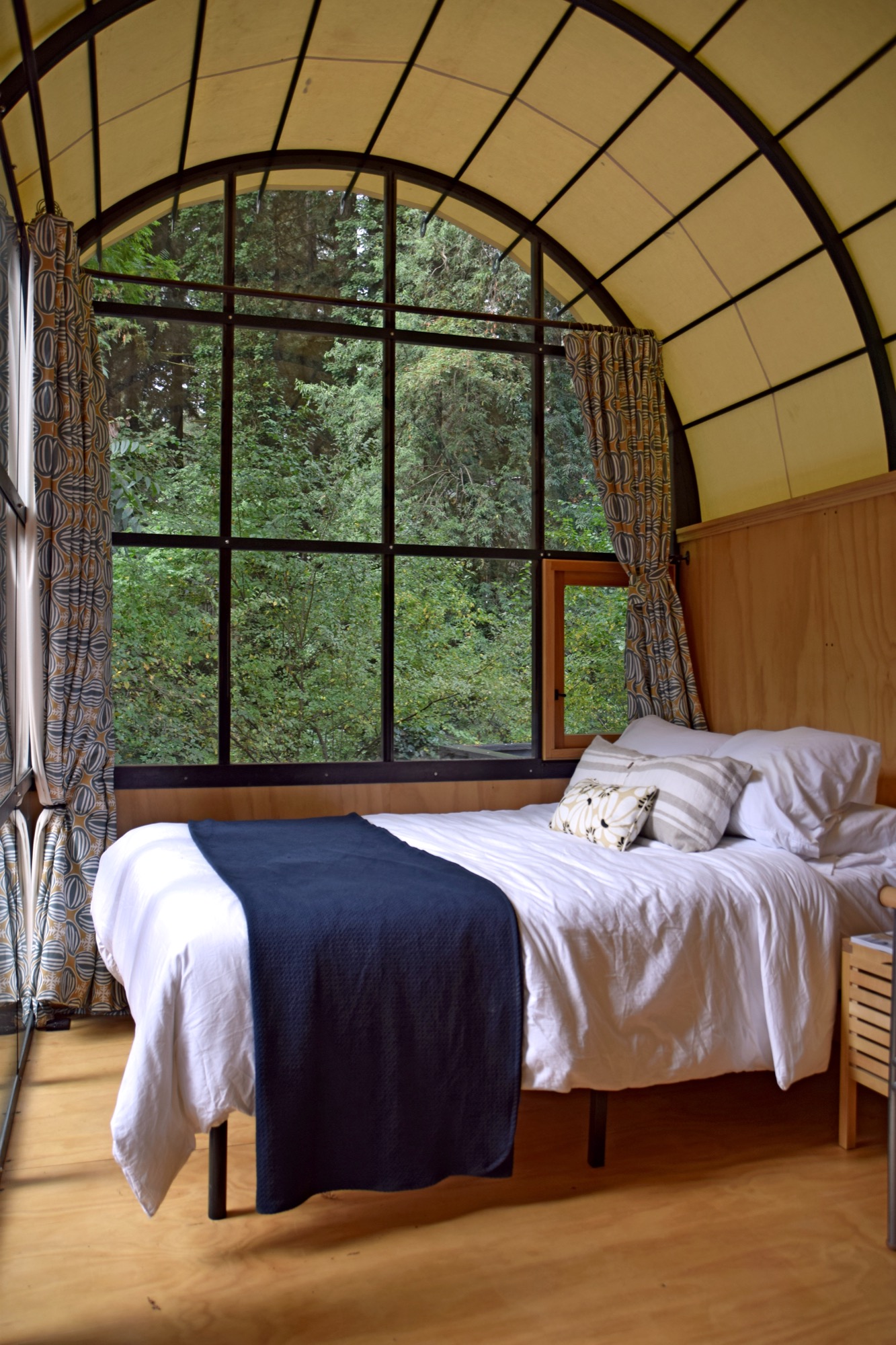
An accessible cabin built by Shelton Huts, run by Mattie Shelton and Evan Walbridge in Santa Barbara, rounds out the grounds. A steel structure wrapped in canvas with plywood floors and walls, the hut has a glass facade that offers a lush view of the banks of Hulbert Creek, which runs along the west side of camp. Custom fabric curtains designed by architect Jeff Shelton, Mattie’s father, provide shade and privacy.
"Think Wes Anderson meets the W Hotel."
Launchpad for Adventure
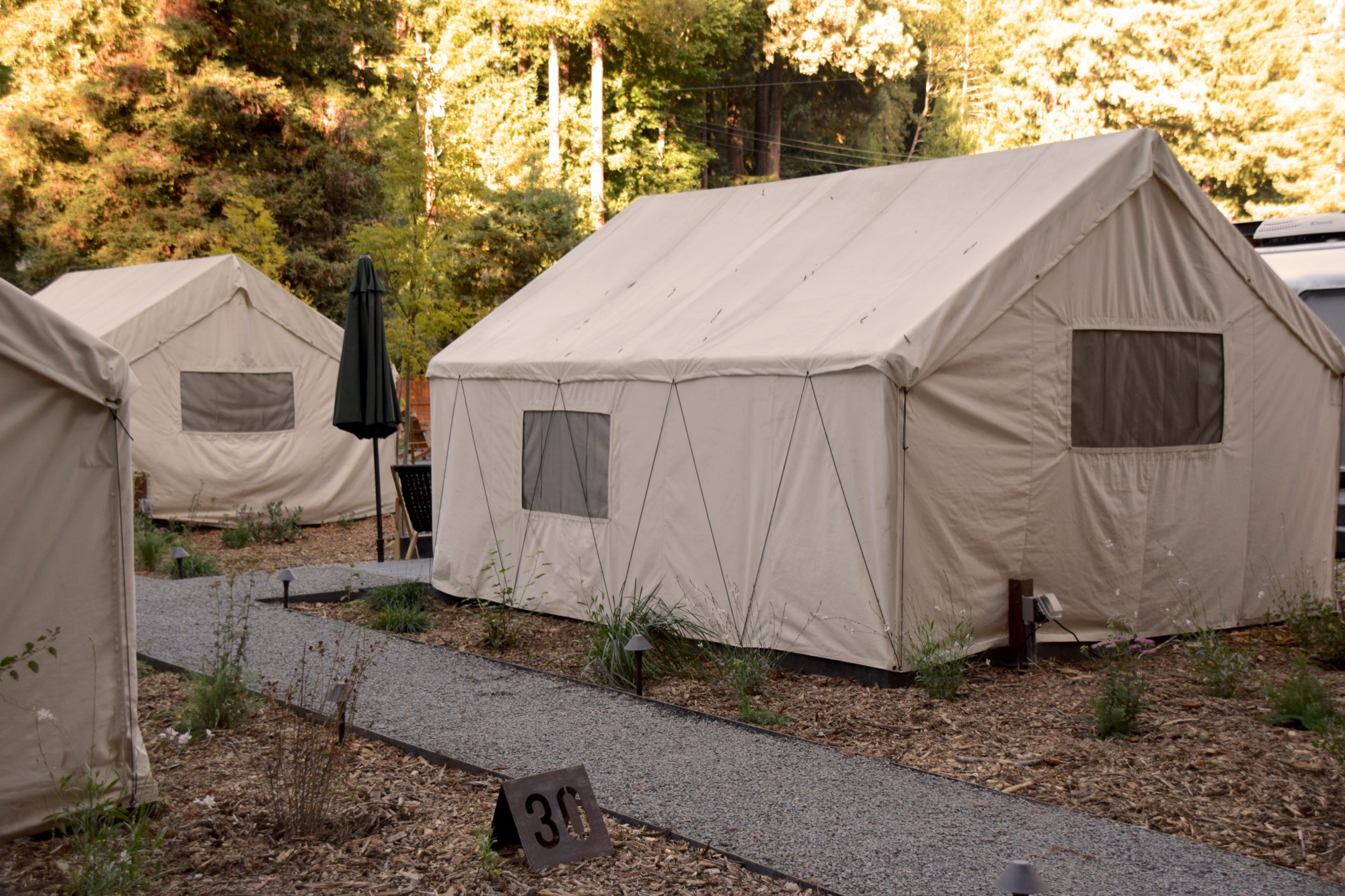
You won’t be at a loss for things to do at AutoCamp. Emerging from your Airstream or tent in the morning is an event in itself—bundled against the early chill, we helped ourselves to coffee in the Clubhouse and looked out at a meadow cloaked in fog. Linus bikes, helmets, and locks are available on a first-come, first-serve basis; on our journeys into town, we spotted several of these distinctive baby blue beach cruisers. You can check out beach towels and umbrellas to bring to the river or borrow a bocce ball set for a leisurely game on the green. An adjacent playground, basketball court, and tennis court, though not affiliated with AutoCamp, are easy to access as well.
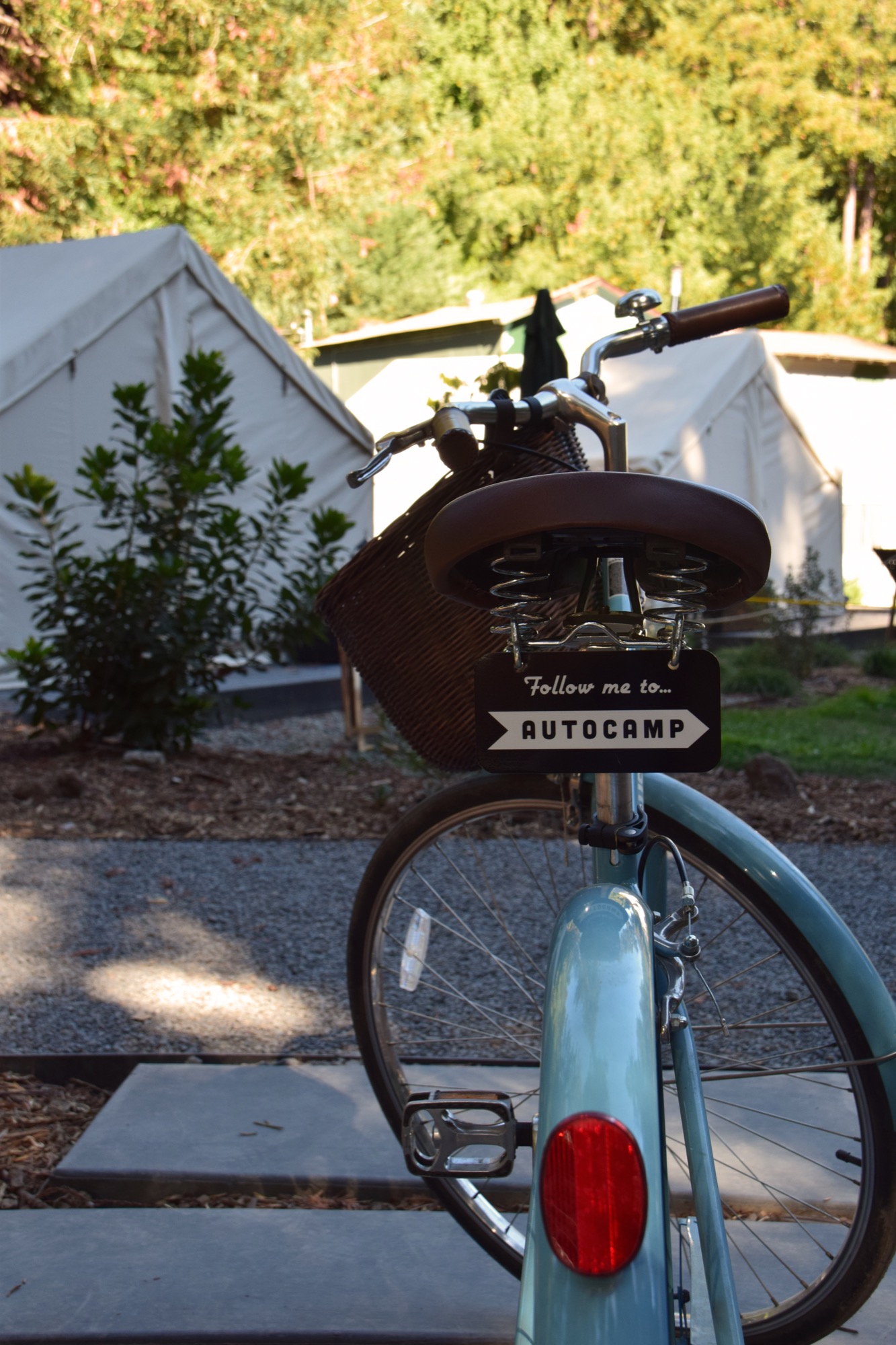
Where else you go is up to you. Describing AutoCamp, Miller said, “It’s a platform to jump off of. The best experience at AutoCamp is using it as a base camp for exploration.” From exploring the local scene to getting lost in nature, the Russian River Valley has much to offer—and AutoCamp puts it all at arm’s reach.
“It’s a platform to jump off of. The best experience at AutoCamp is using it as a base camp for exploration.”
Nightly rates for tent accommodations start at $139, while Airstream camping starts at $225. △
A Drawn-Out Hike
Seemingly so cumbersome compared with instagramming your every adventure, contemplative sketching in nature slows you down enough to see all the details.
In times of Instagramming every outdoor adventure in, well, an instant, slowing down to sketch a nature scene, seemingly so cumbersome by comparison, becomes a contemplative process, the details more significant for the effort.
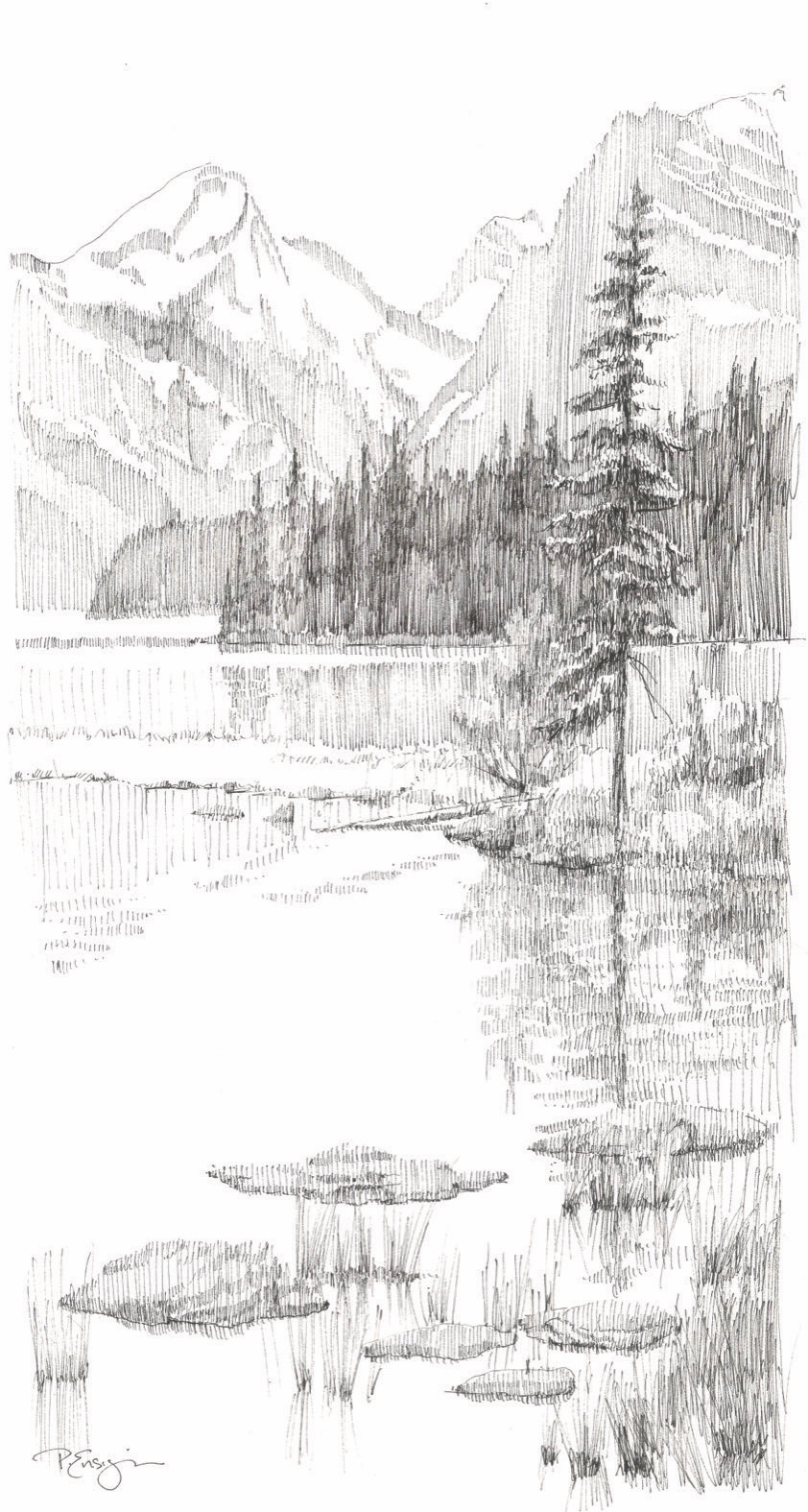
Down a short path to the water’s edge, I find a spot beneath a lodgepole pine. I sit down on my folding stool and take in the scene before me, rugged mountain peaks descending steeply, rimming Bow Lake in the Canadian Rockies. For a few moments, I simply look. It’s a powerful and grand view. While most people might take a series of photos to document the beauty of this vista, I prefer to draw.
Drawing is quiet work. It’s my favorite way to connect with the mountains. First, I study my subject carefully. I examine each ridge and crag. I study layers of rock and sand, discover the nooks and crannies and the remnants of snow. Looking intently, I seek out proportions and relationships, consider the depths and heights, and pay close attention to the movement of light and shadow. To draw effectively is to see, really see, what’s in view. But even more than seeing, drawing on location is a total experience. Sitting on this quiet bank, away from picnickers and tourists, I hear the gentle lap of water against the shore and the birds in nearby branches. I feel the soft breeze against my face and smell the damp ground at the water’s edge along with the sweet scent of pine needles. Immersing myself in my surroundings, as I begin to draw, I let my hand and my thoughts reflect the grace of the moment.
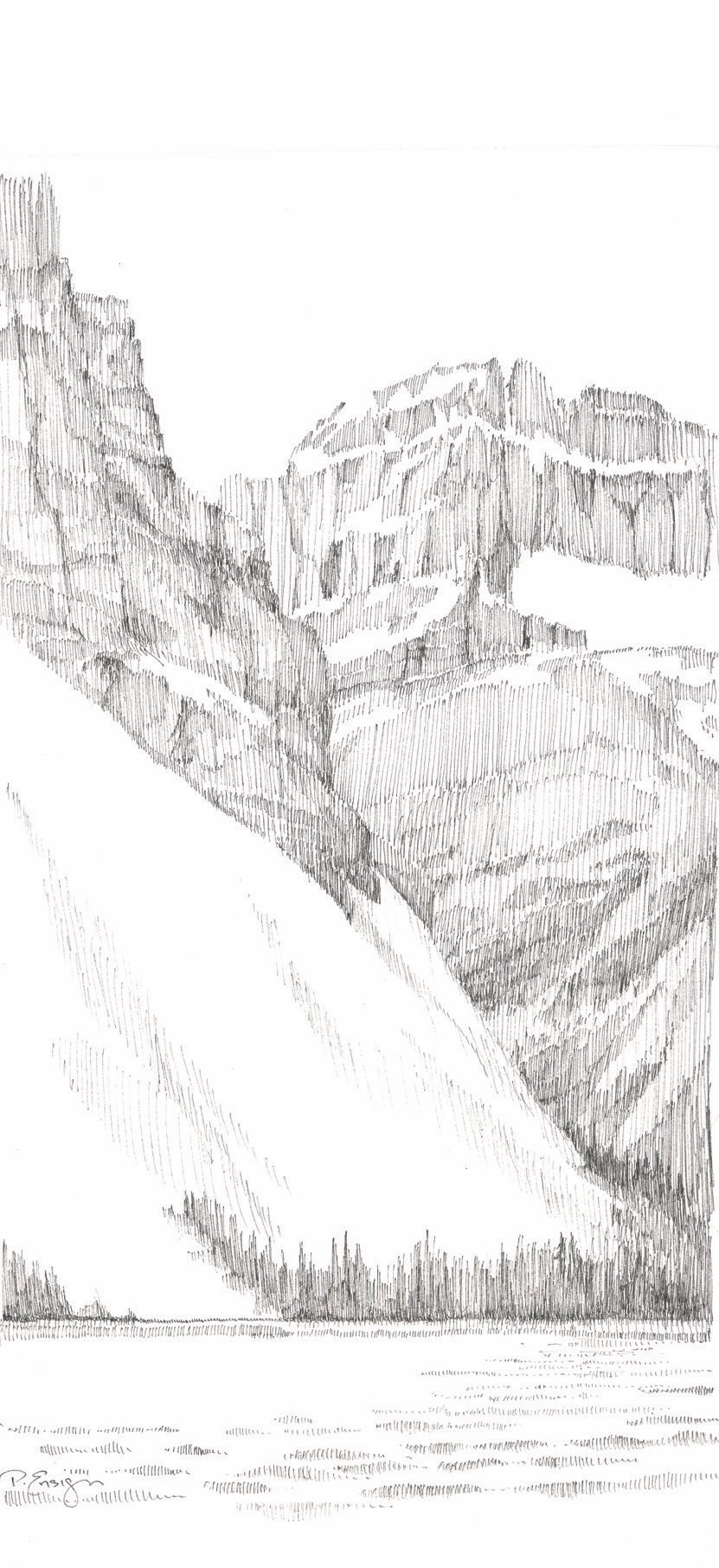
Splendor, line by line
No special talent is needed for this task. Drawing is simply putting marks on a surface to illustrate where one’s eye goes. Anyone can experience the joy of drawing a scene before them. All that’s needed is a paper, a pencil, and a little time. Today, I start with a line drawing that identifies the big shapes, the overlap of one ridge against another. Next, I look for dark and light areas—known as values. As my drawing develops, I stay focused on my subject, constantly verifying angles and details. Lastly, I take care not to overdo the minutiae and make a point to stop before too many lines spoil the intention.
Glacier-hopping
Earlier in the day, I stopped at a pullout on the Icefields Parkway with a fabulous view of Crowfoot Glacier. The parking lot was filled with cars, campers, and buses. Tourists hopped out of their vehicles, snapped a few pictures, then jumped back into their cars to speed down the road to the next viewpoint. How will they know one glacier from the next? What memories will linger long after they have left this grand landscape?
Yes, the quiet deliberation of drawing is slow and methodical. It takes time. What could be more valuable in our hurry-up world of instant everything than to open the senses and make a lasting imprint on the soul? Take just one hour to study, absorb, and look carefully at a scene, and you will never forget it. A relationship will form, a lasting memory will be etched in consciousness. I never forget a location where I have spent time sketching.
“What could be more valuable in our hurry-up world of instant everything than to open the senses and make a lasting imprint on the soul?”
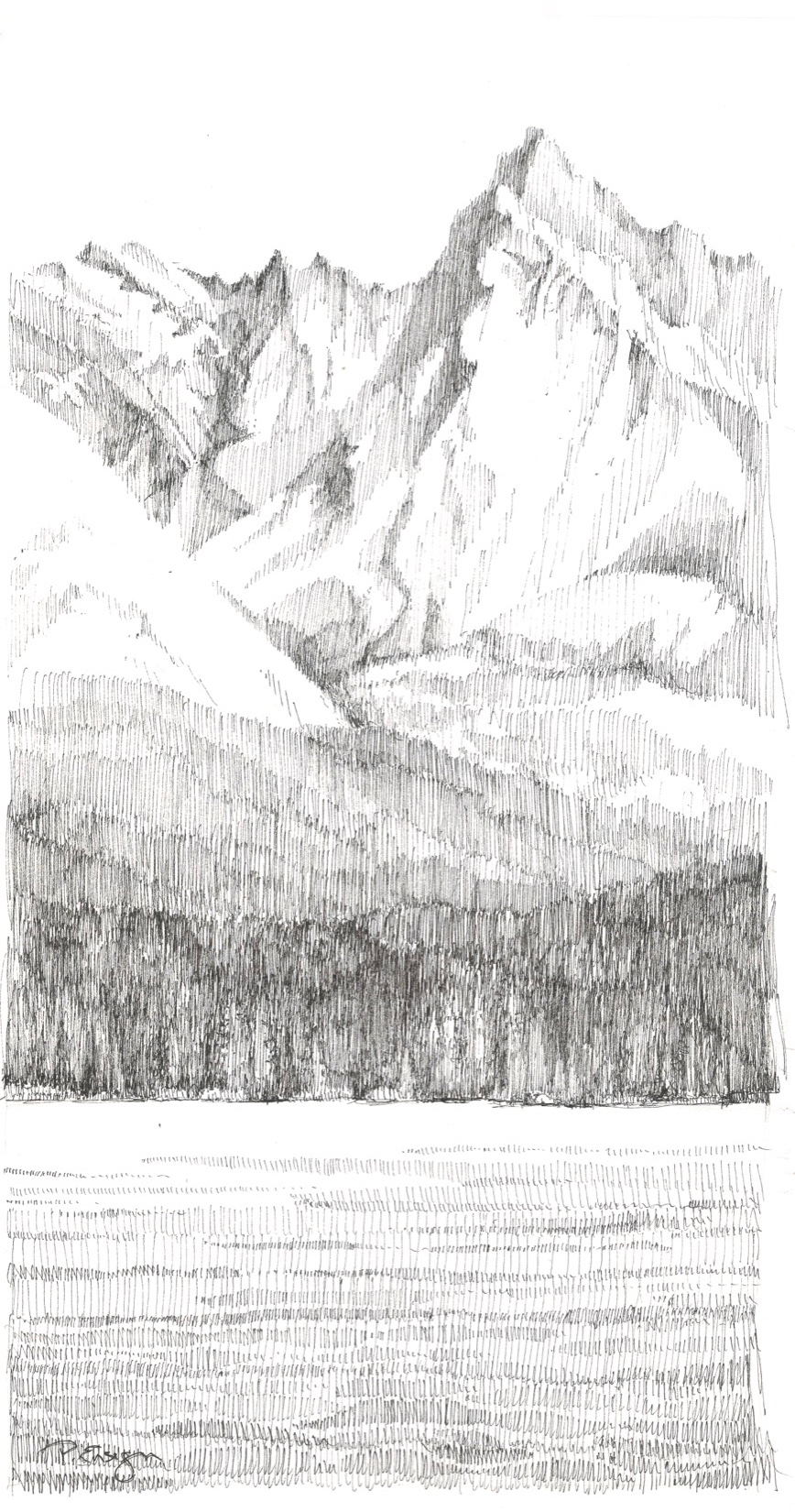
Drawing is a wonderful way to hold on to our travels and experiences. It’s never about the success or failure of the end result. It’s not about technique or individual style. It’s about the process. It’s about the time, the connection, and the quiet communion between artist and subject. △
“Drawing is a wonderful way to hold on to our travels and experiences.”



